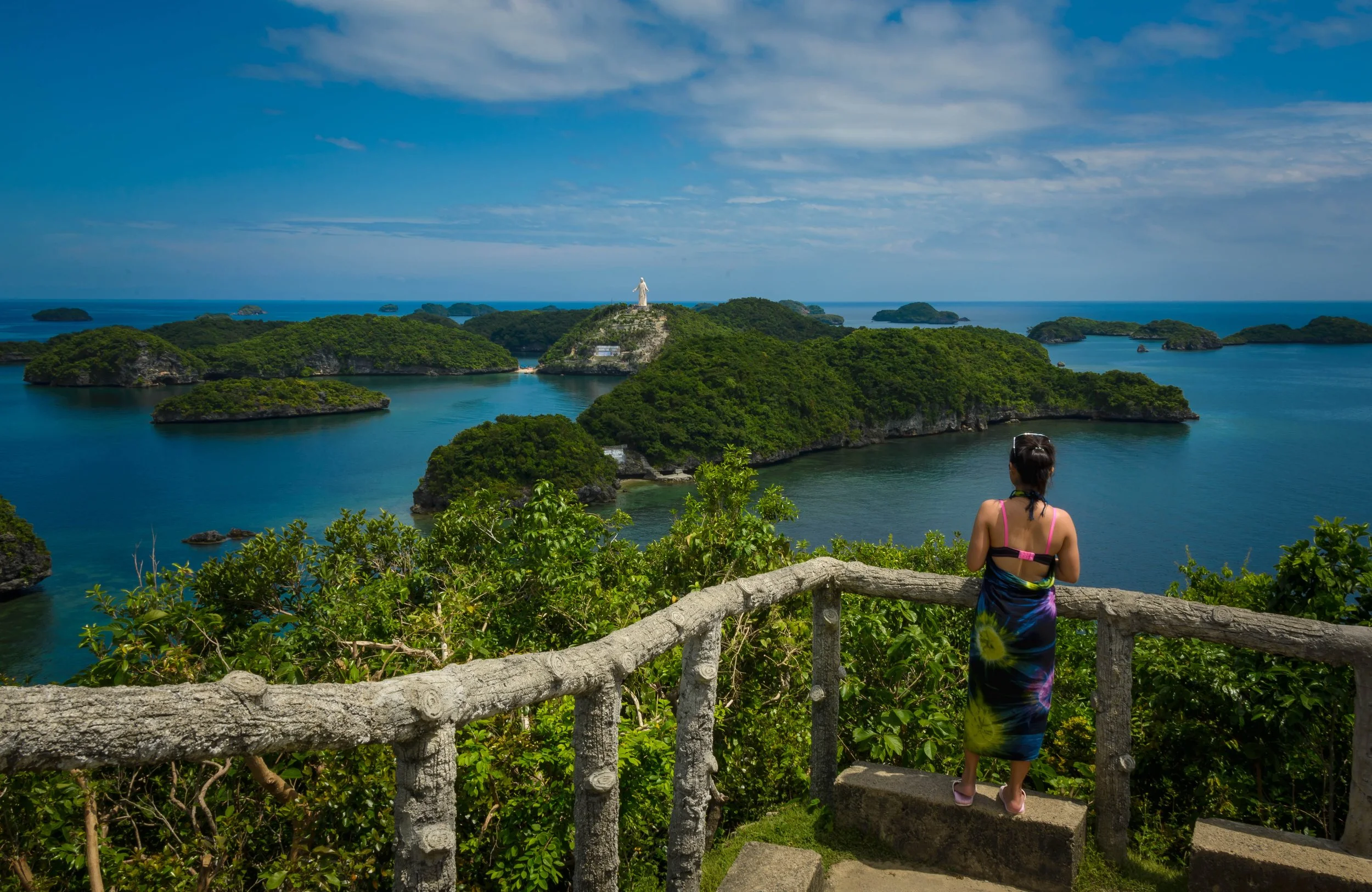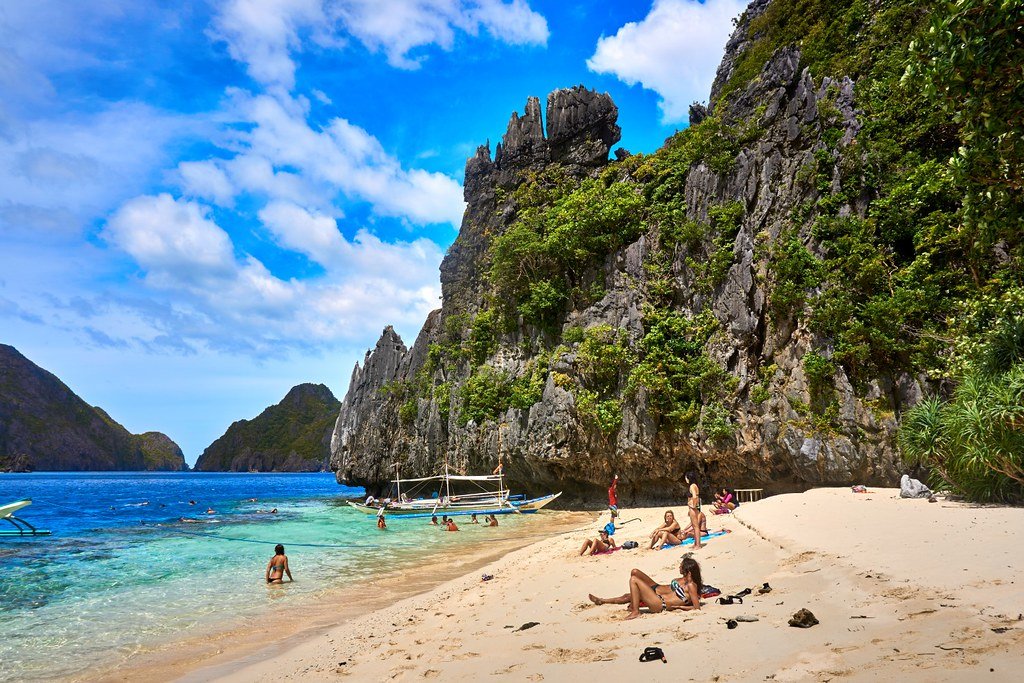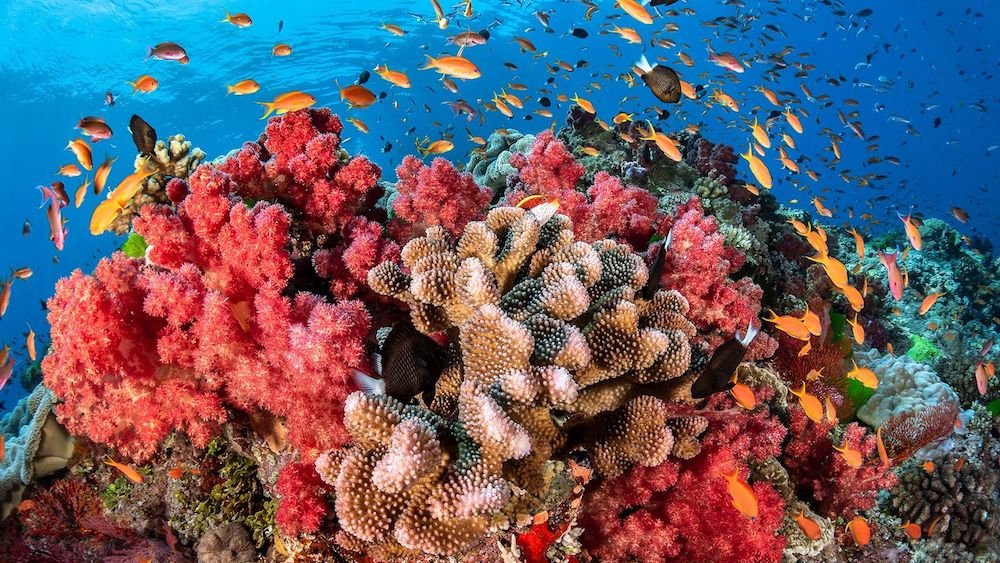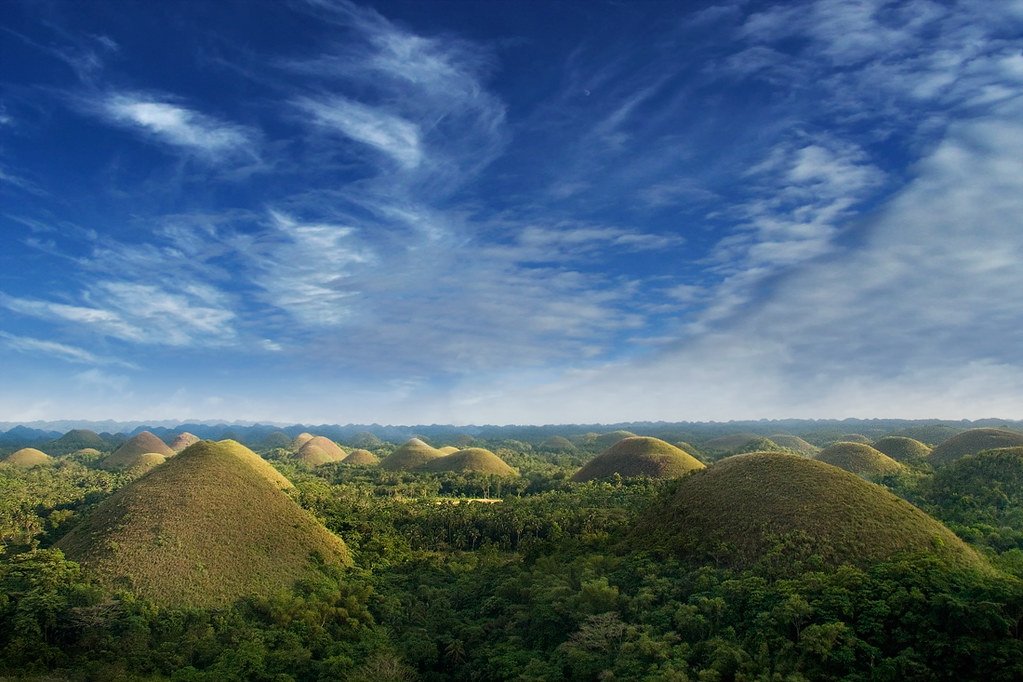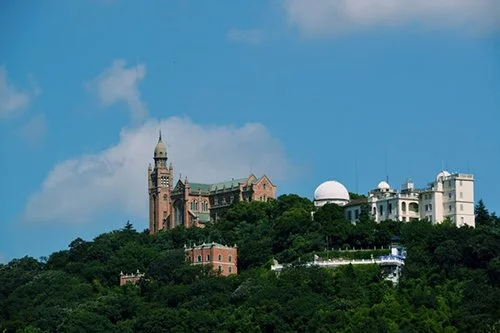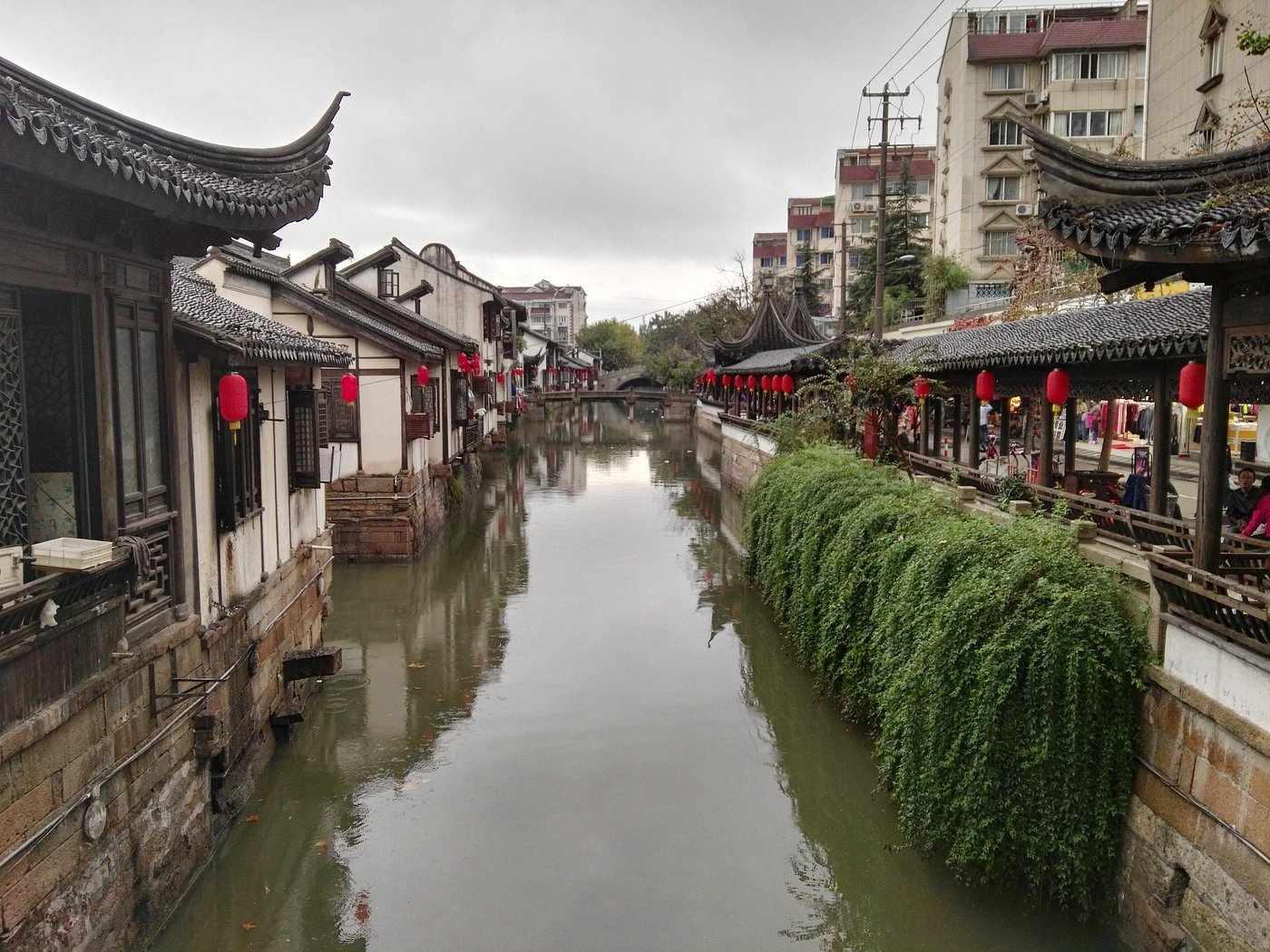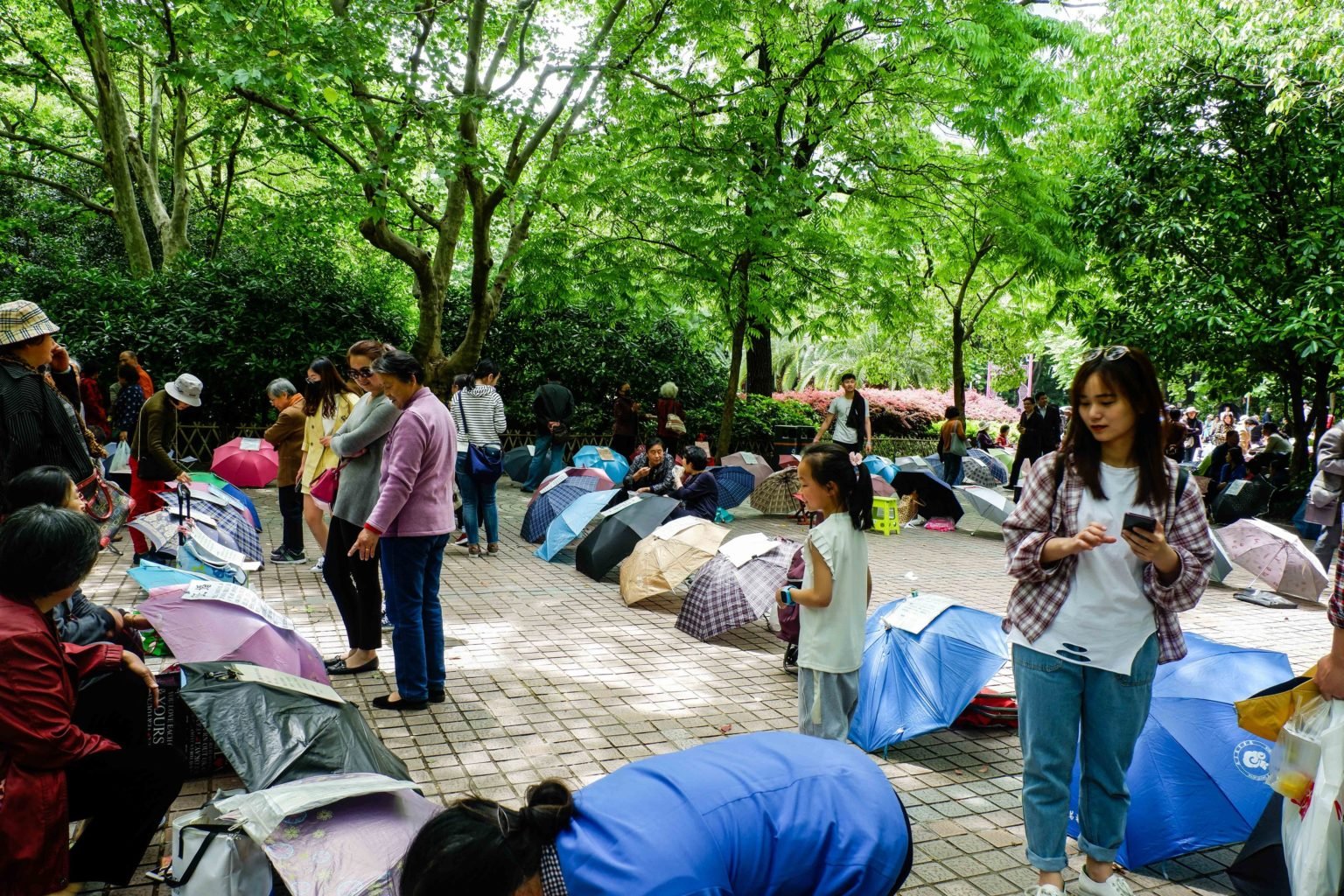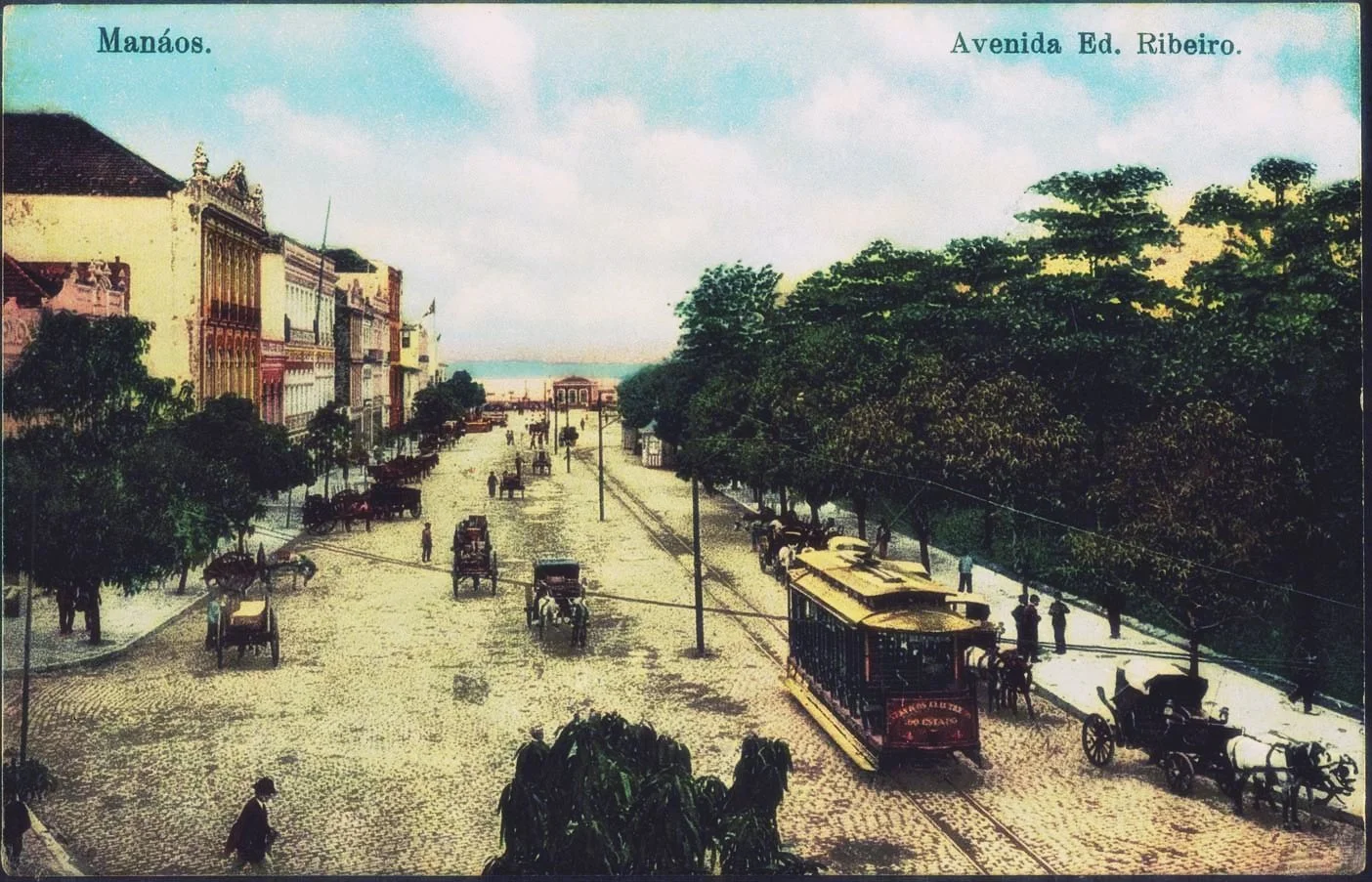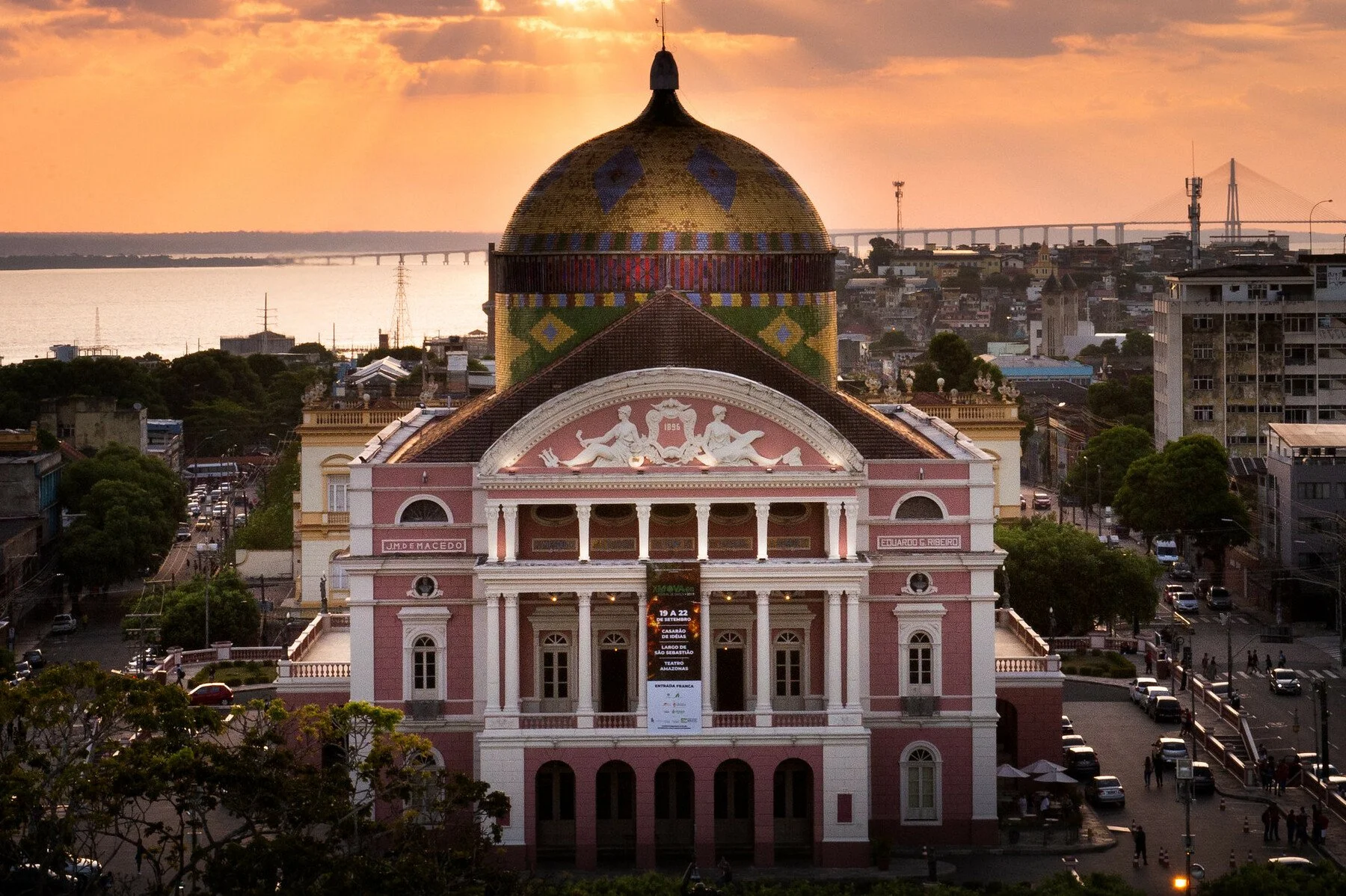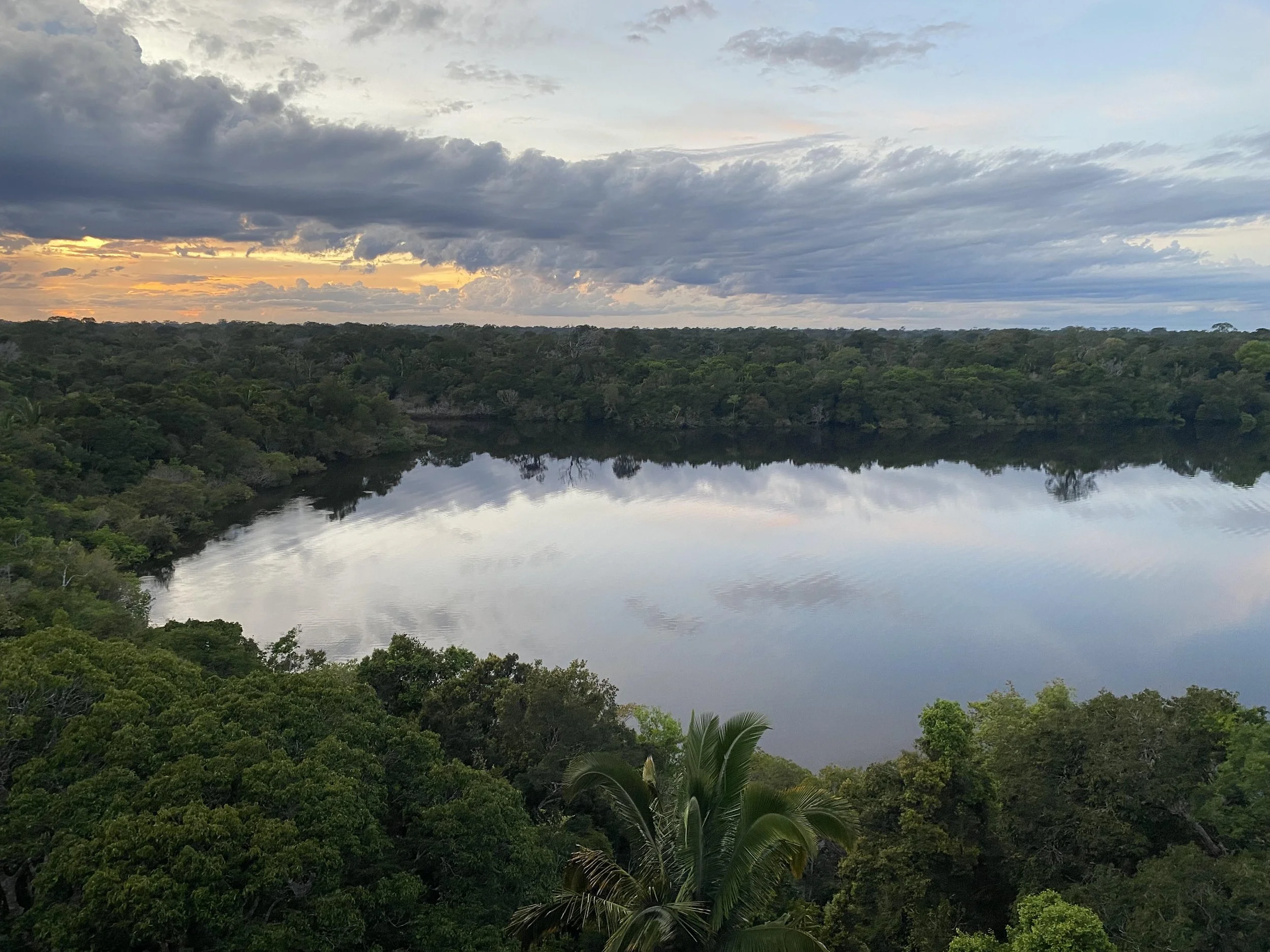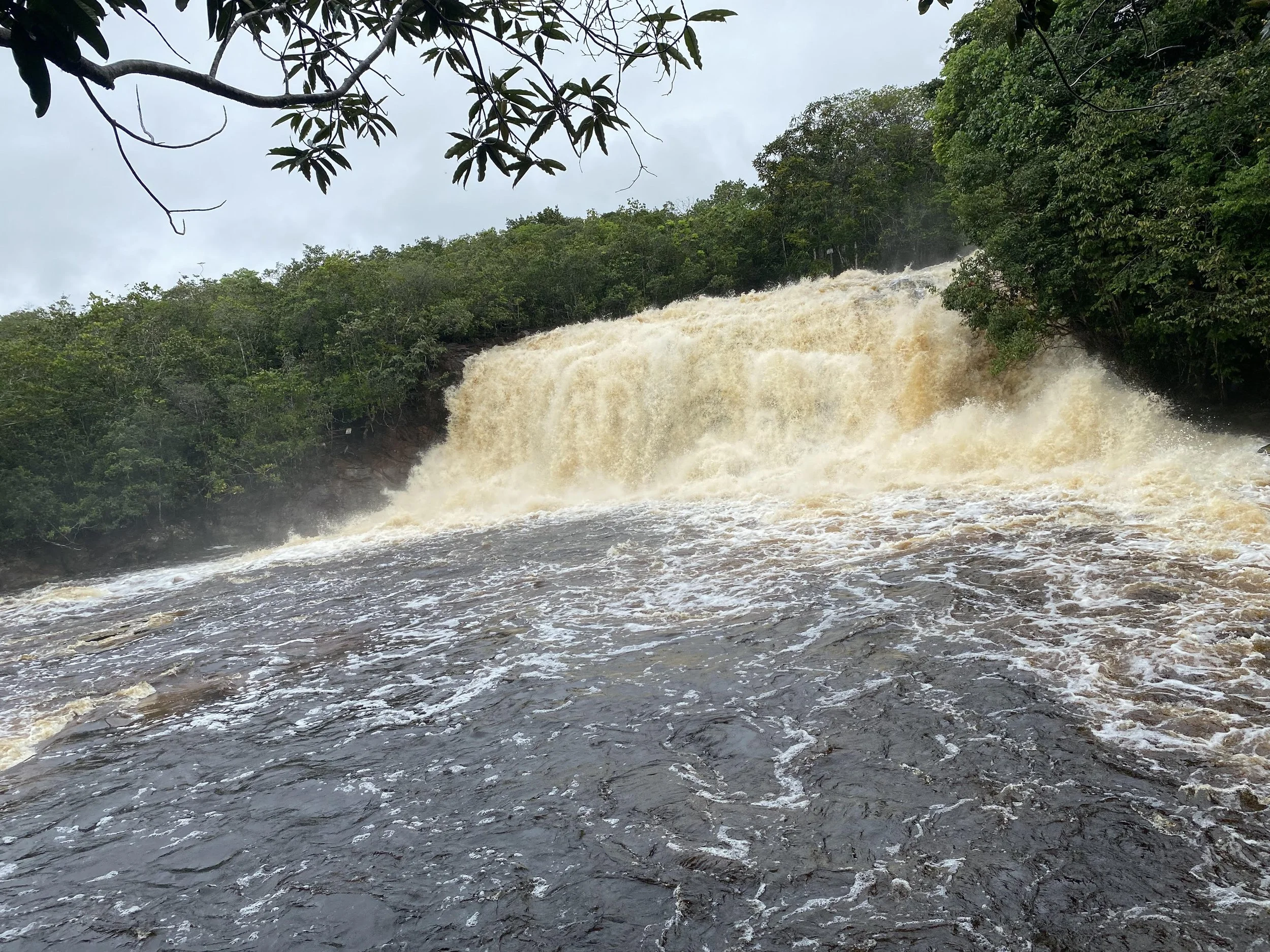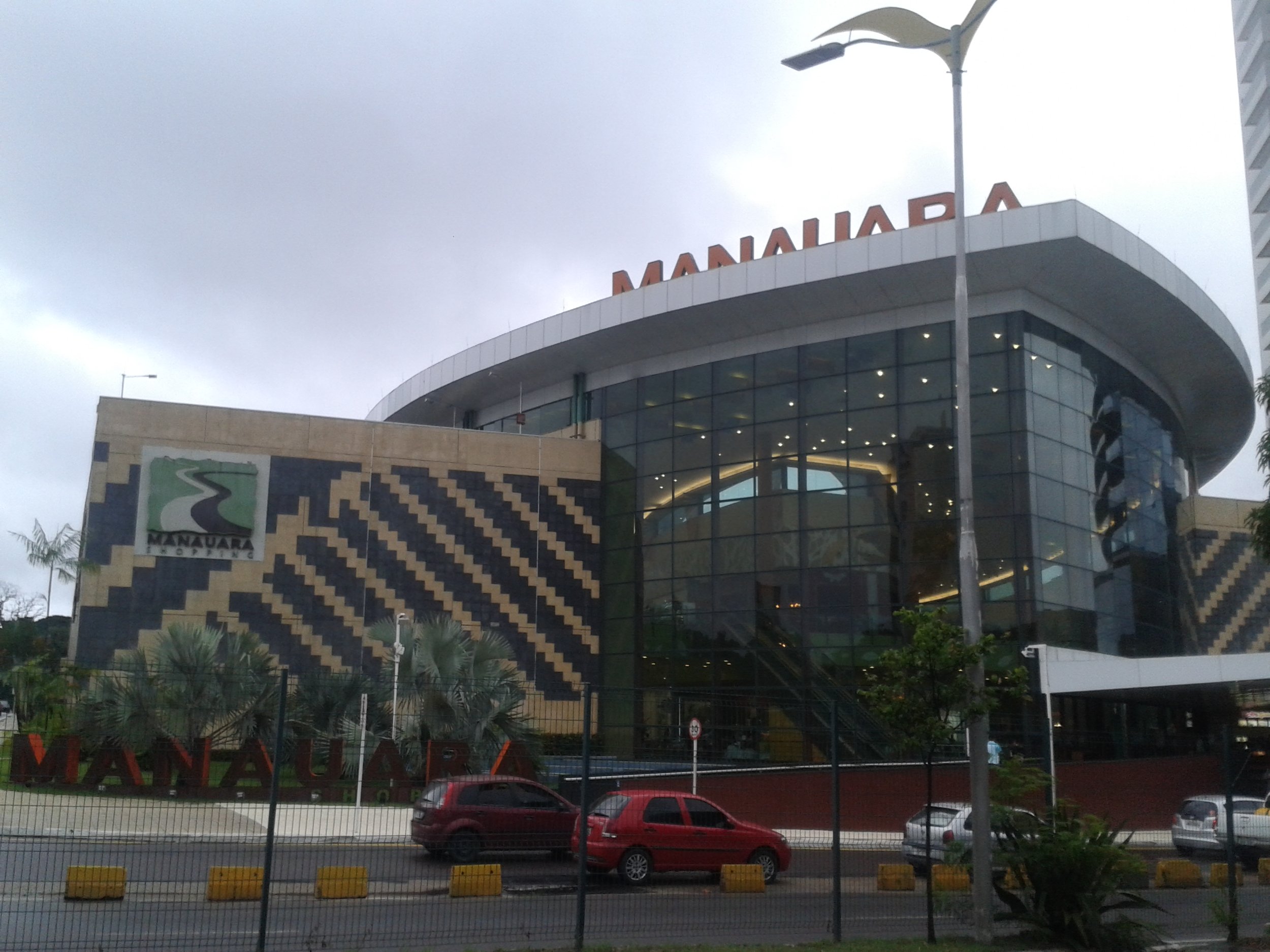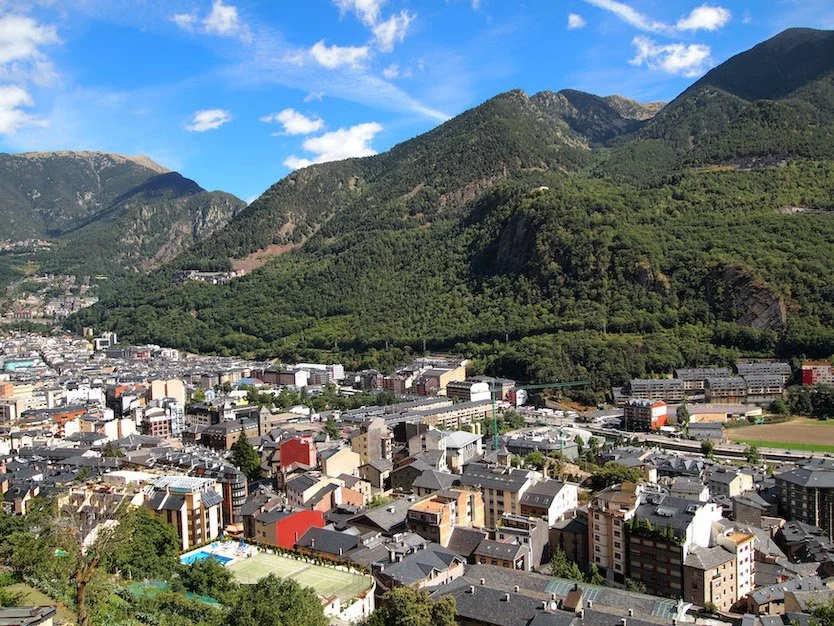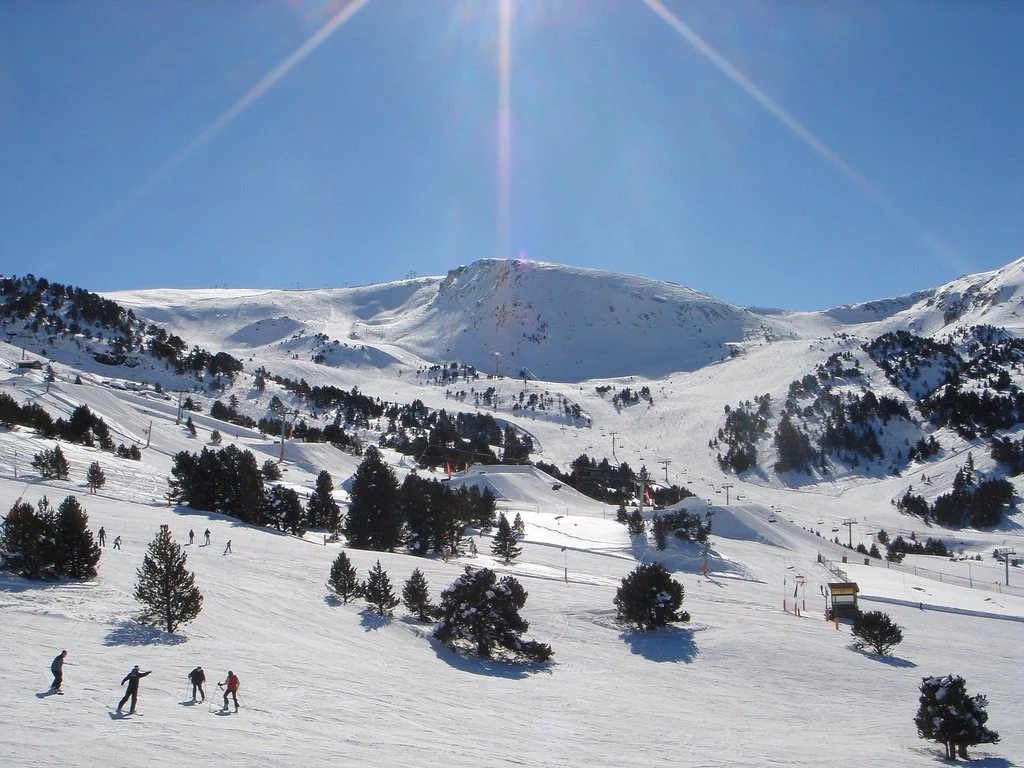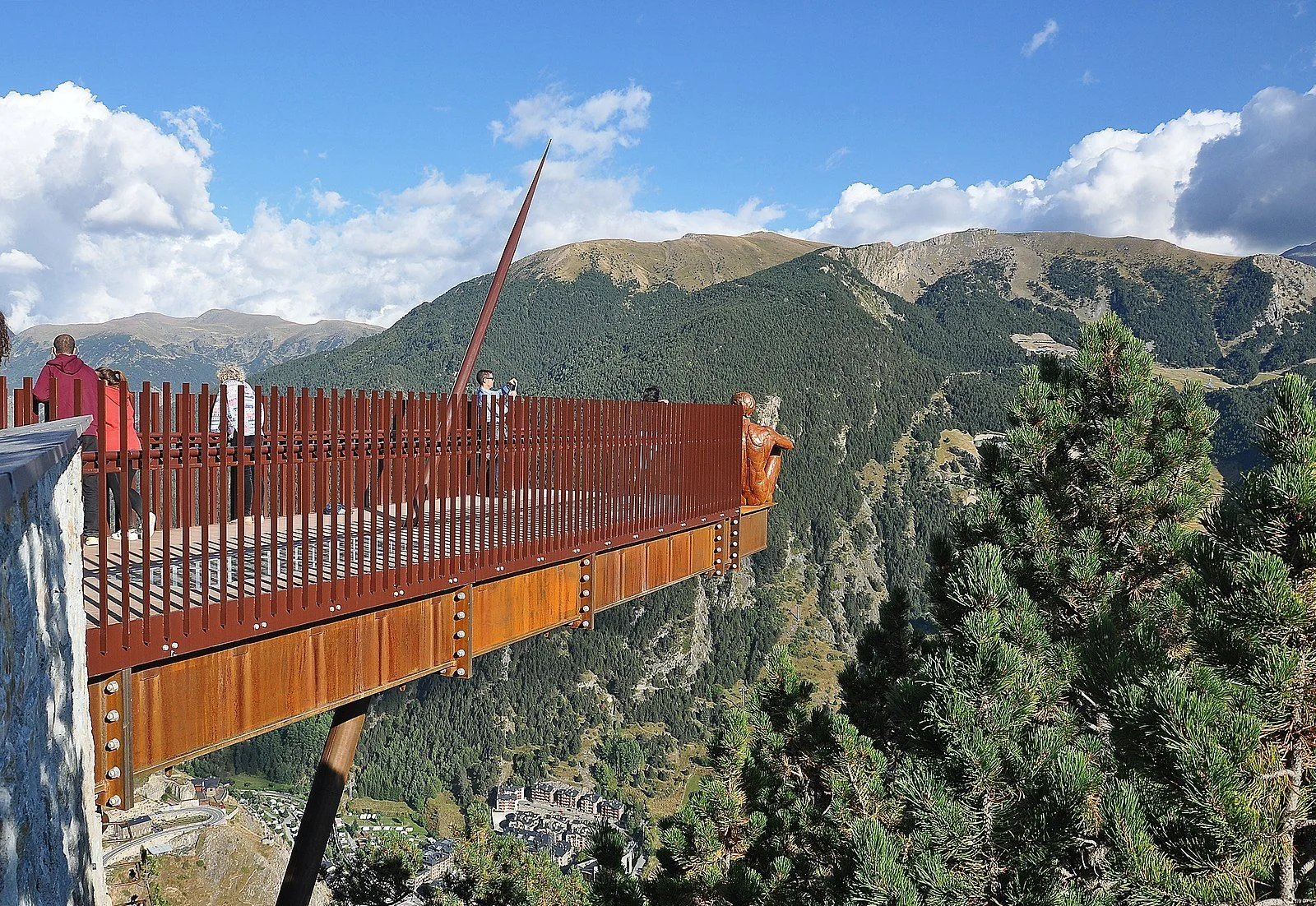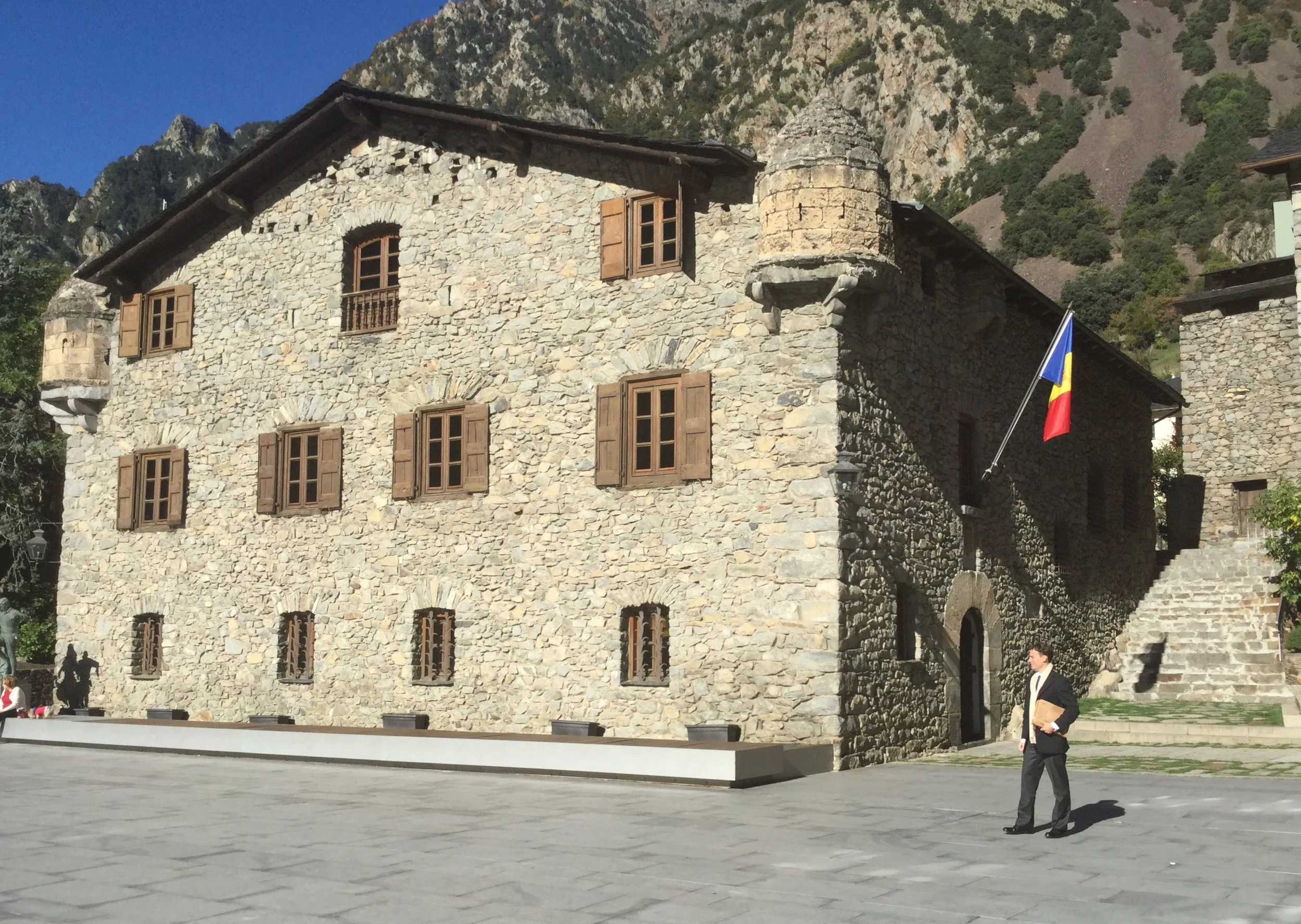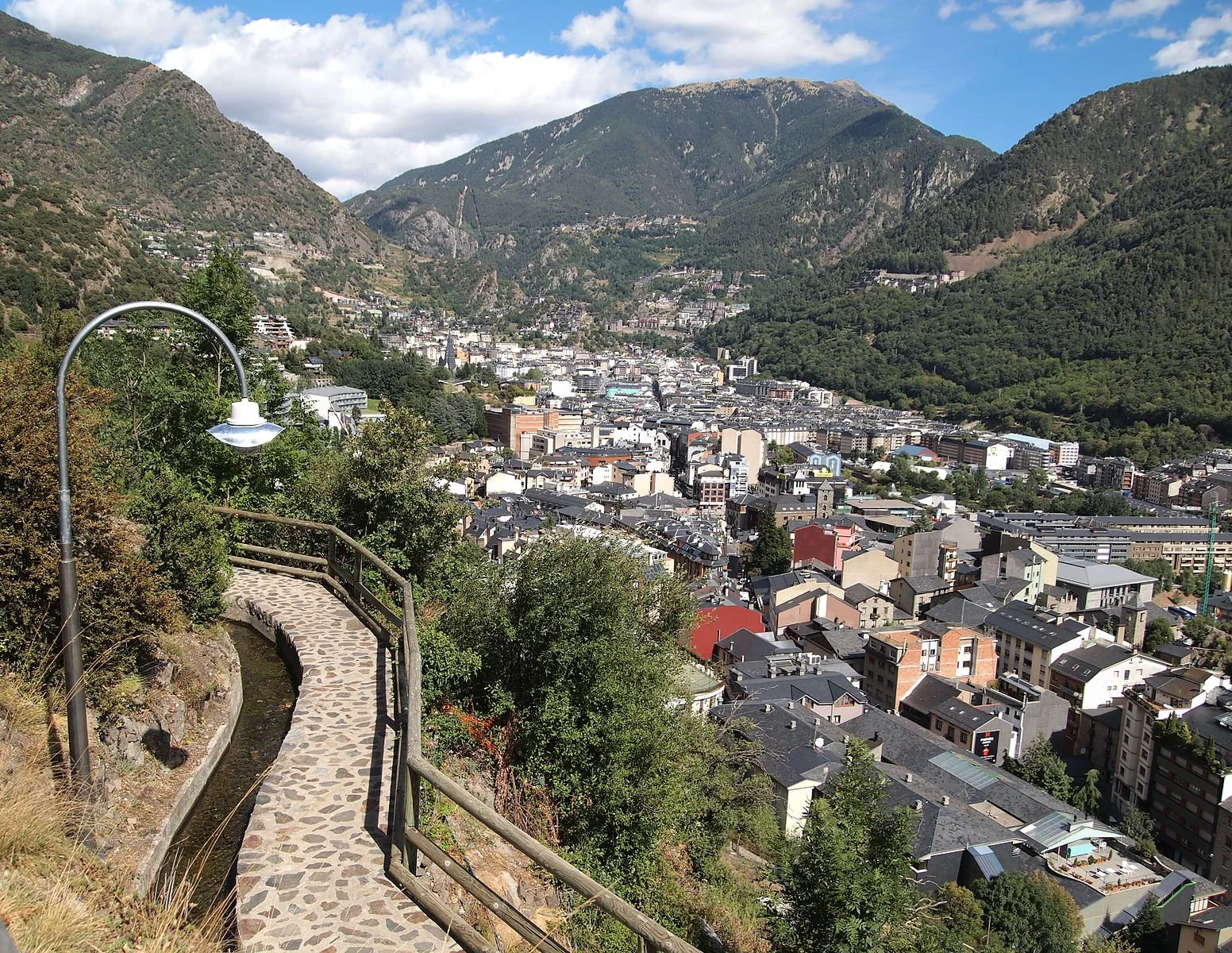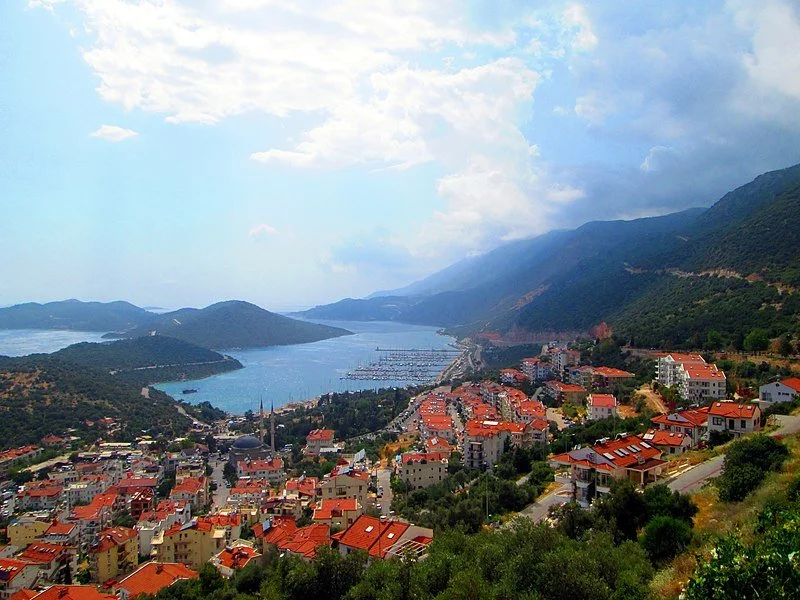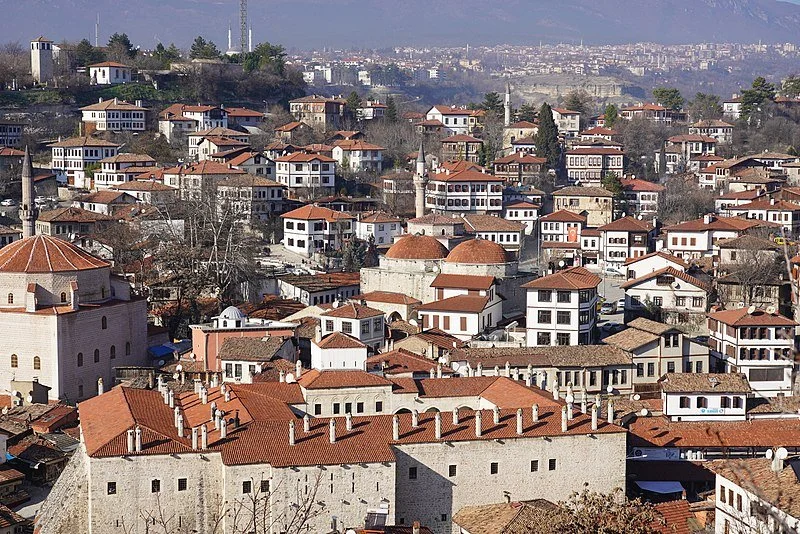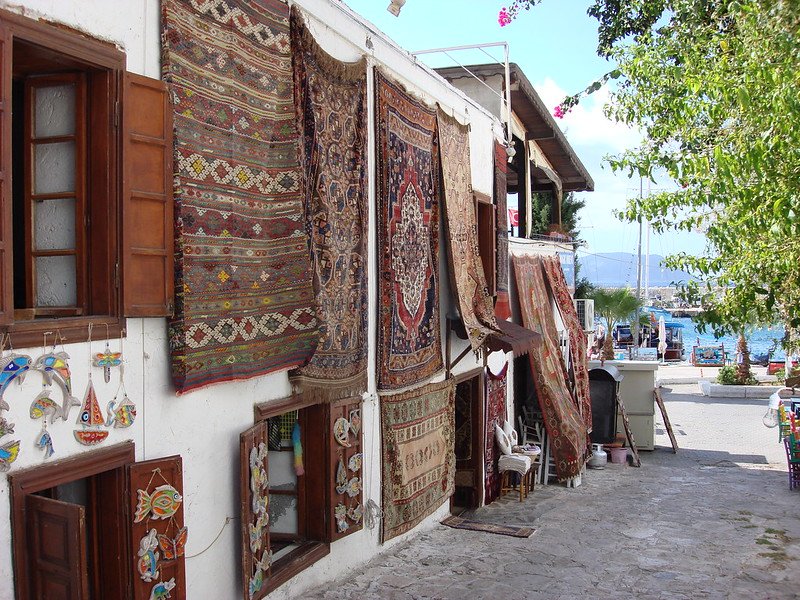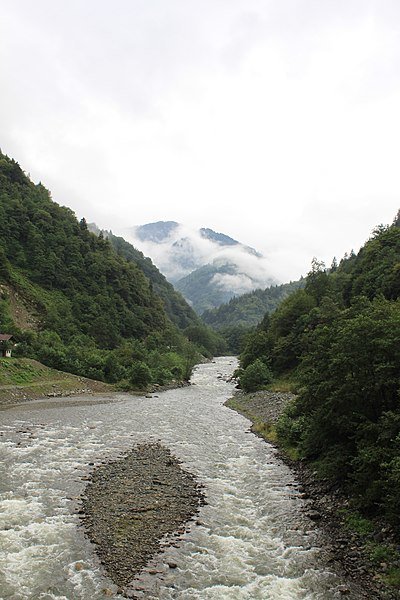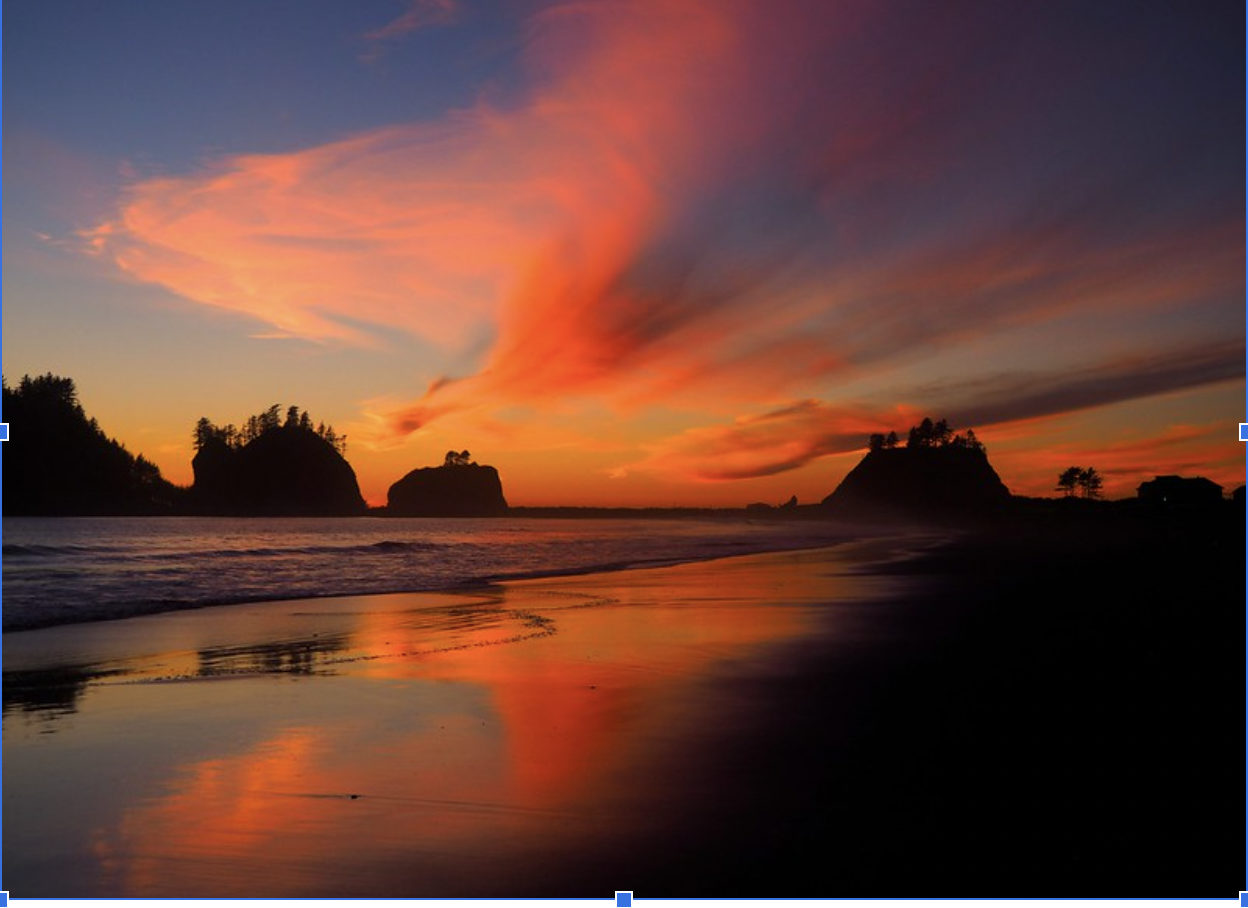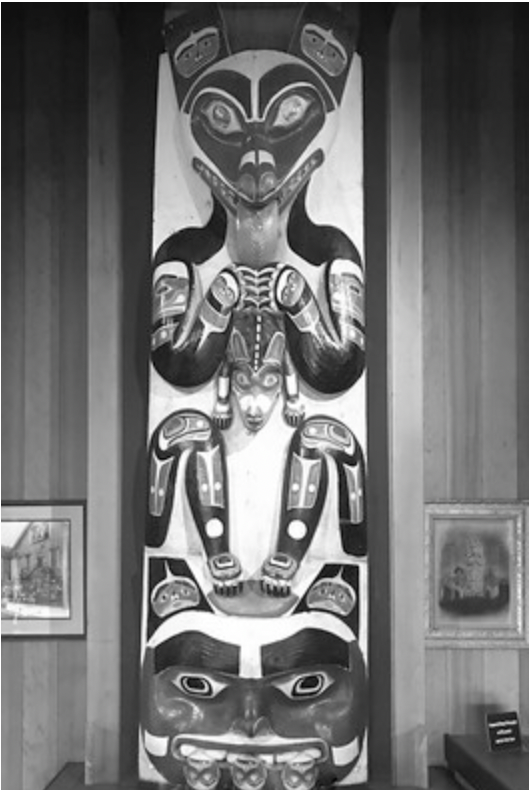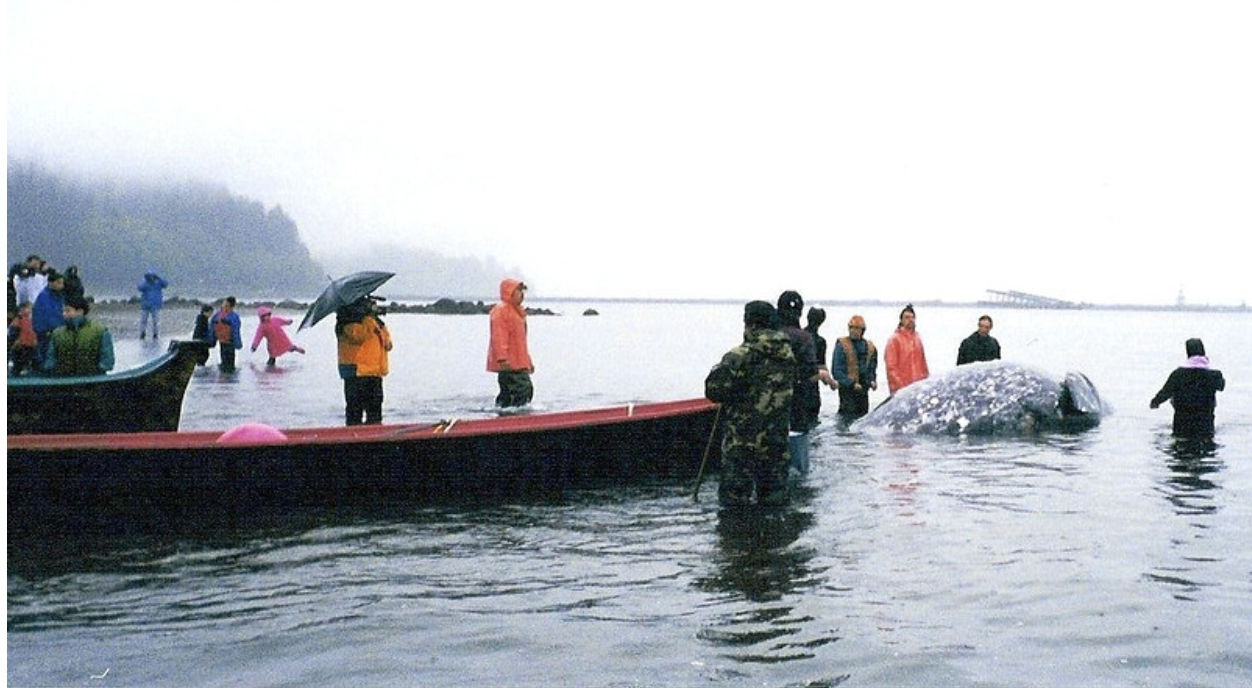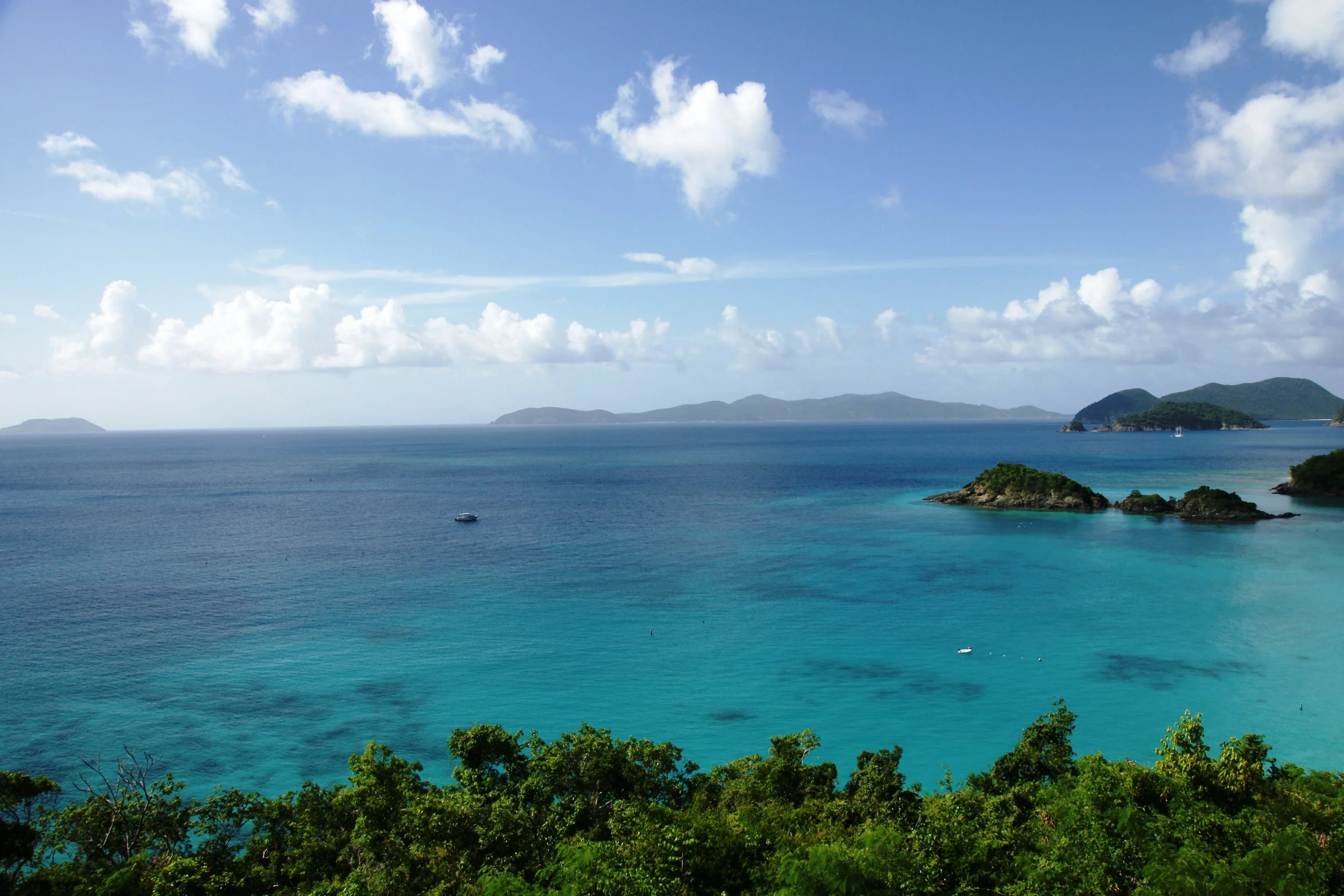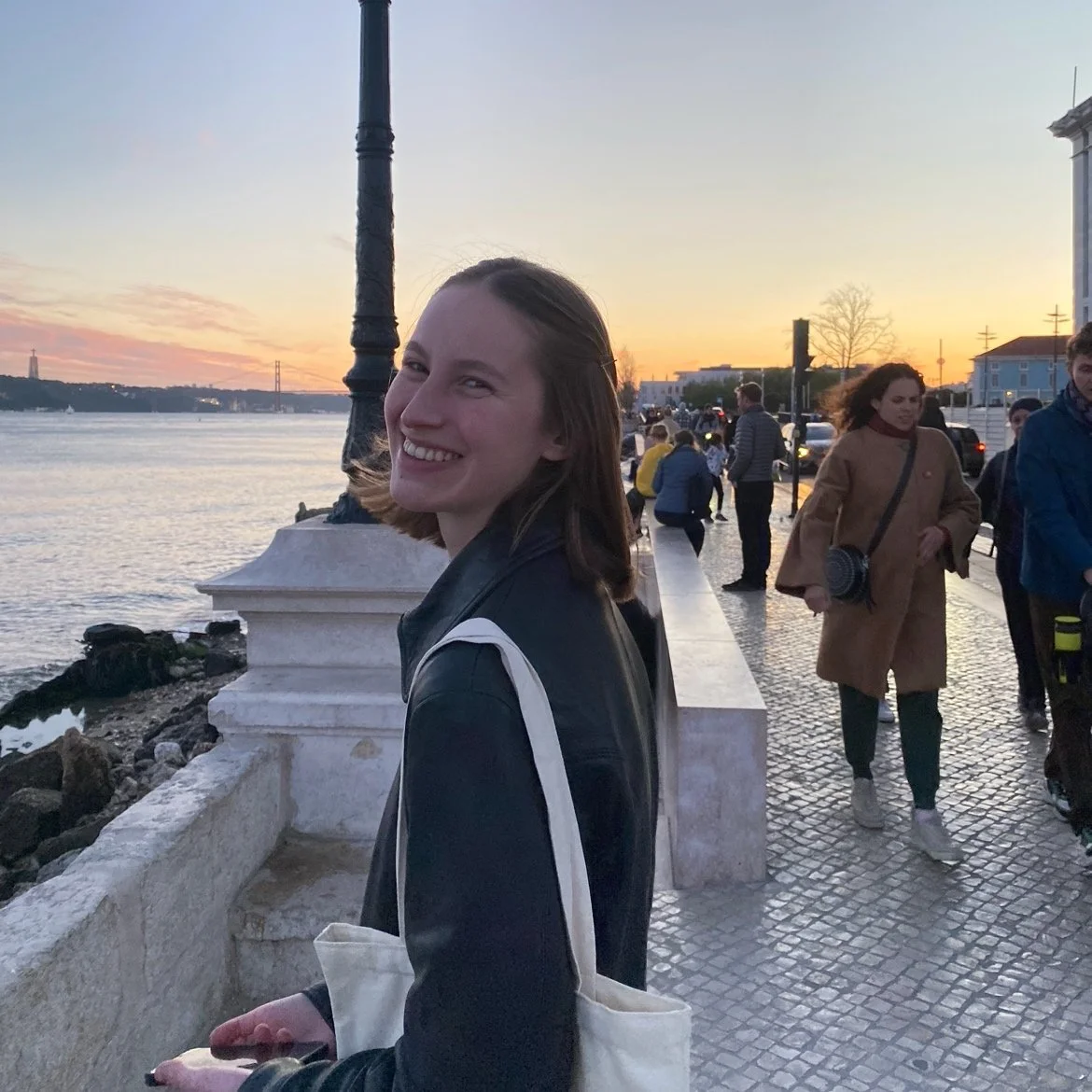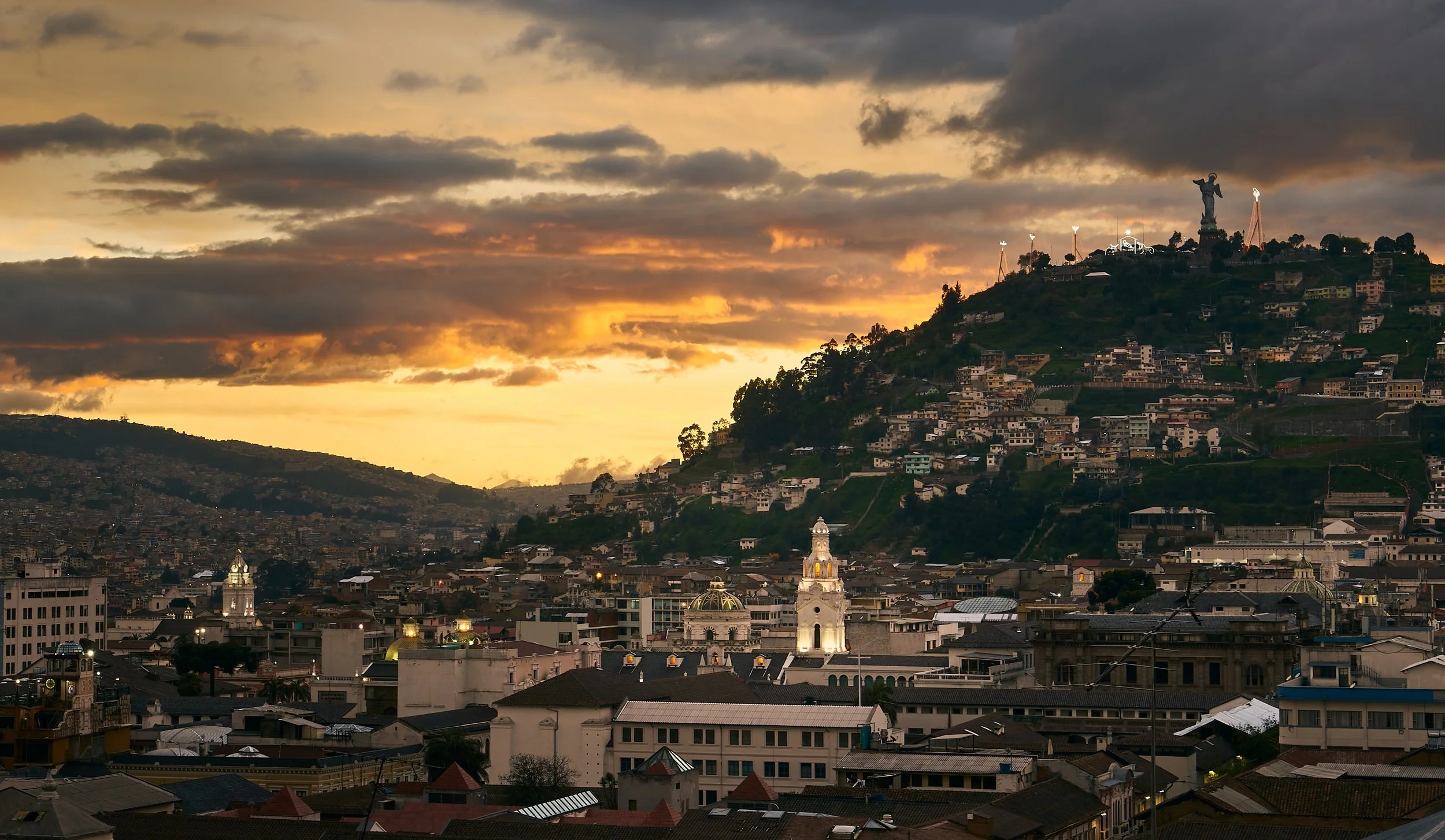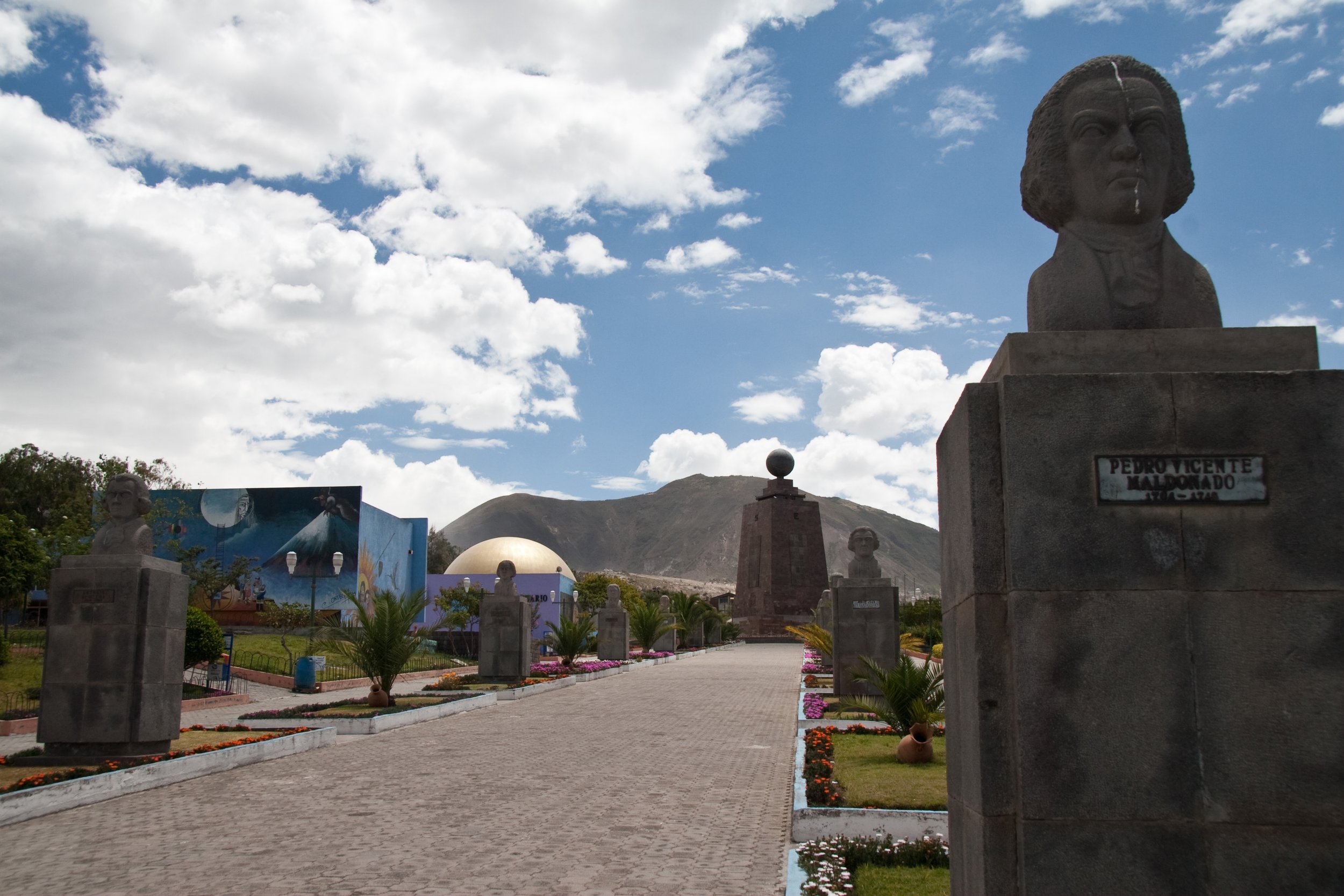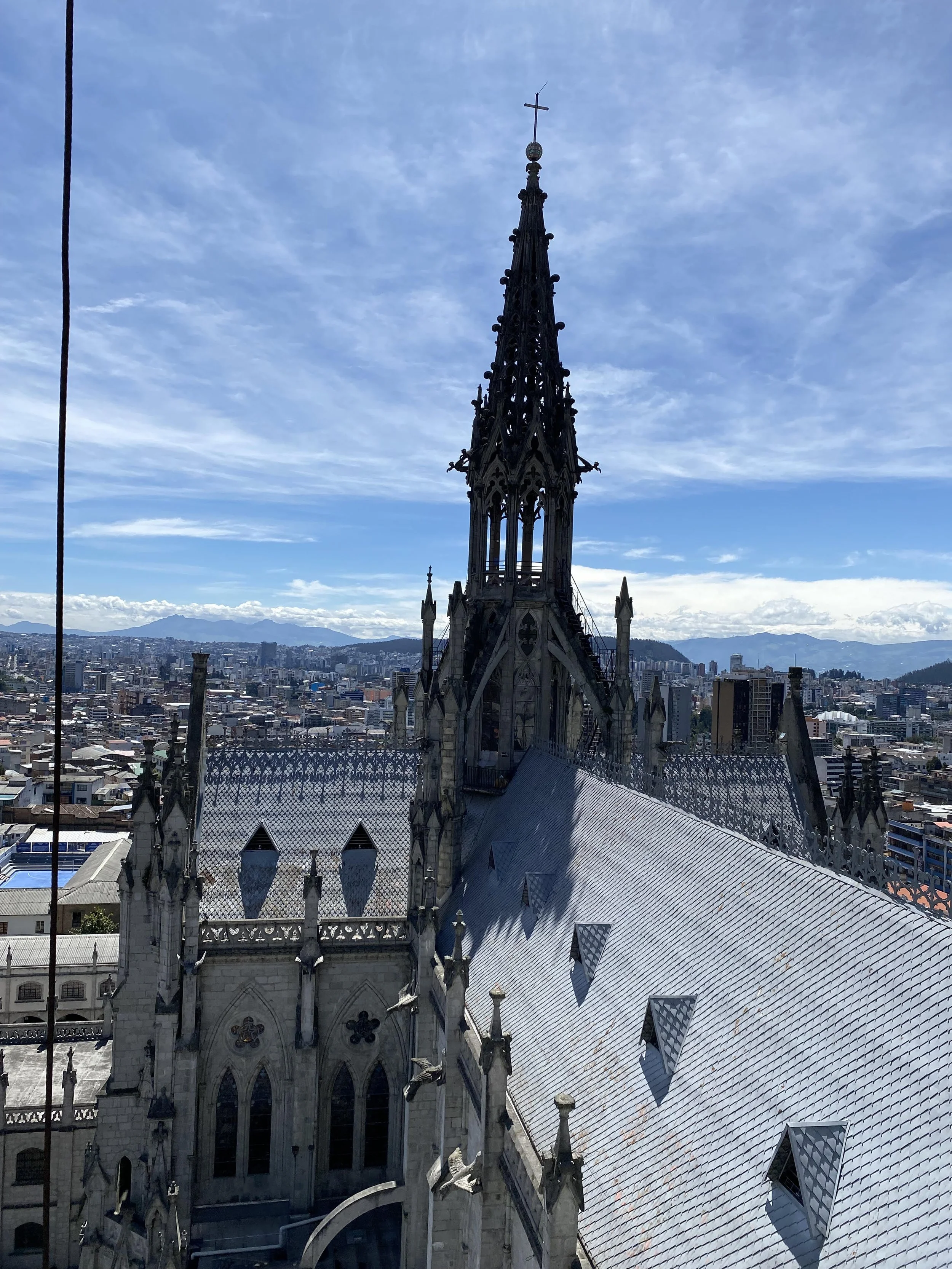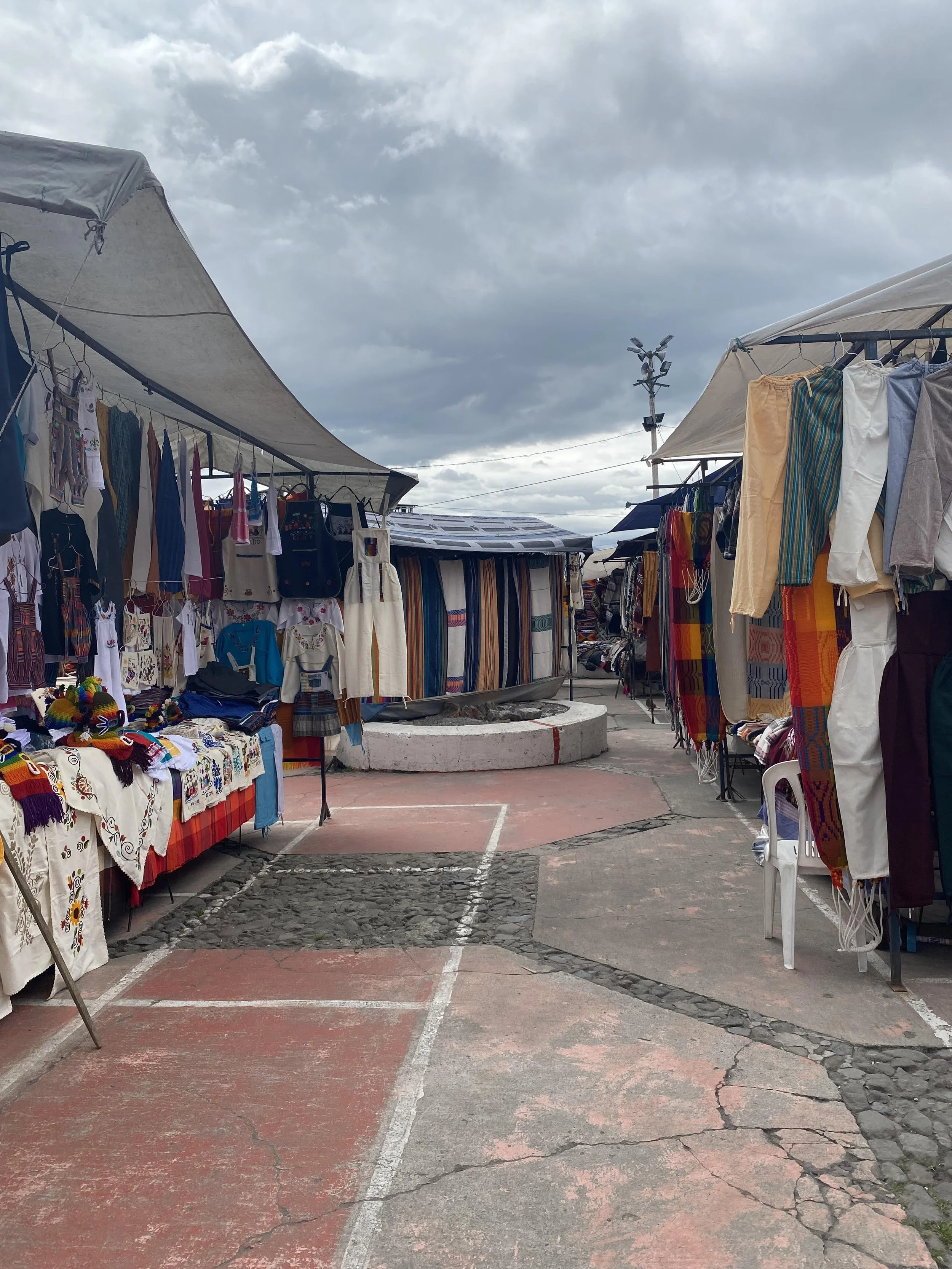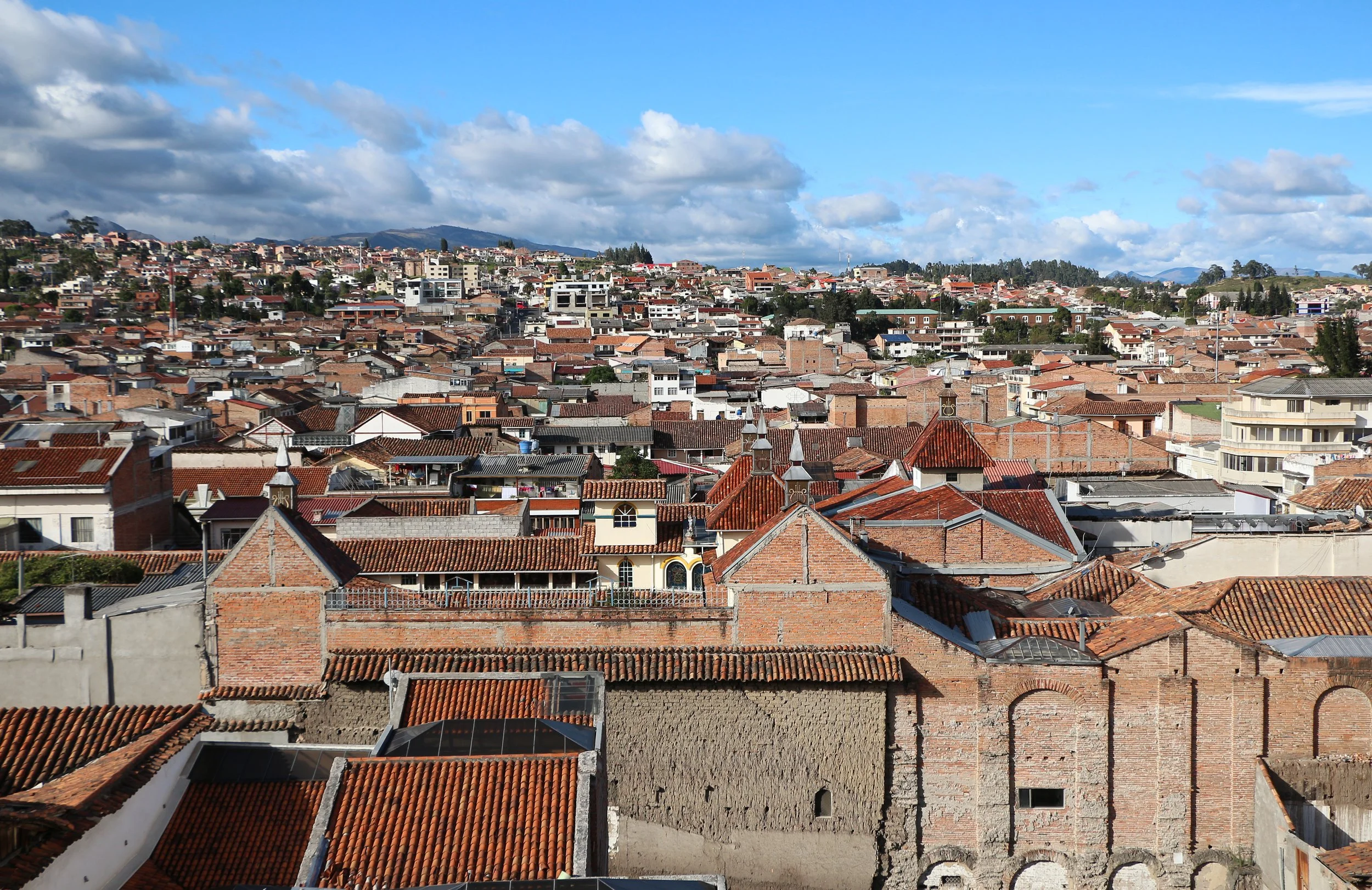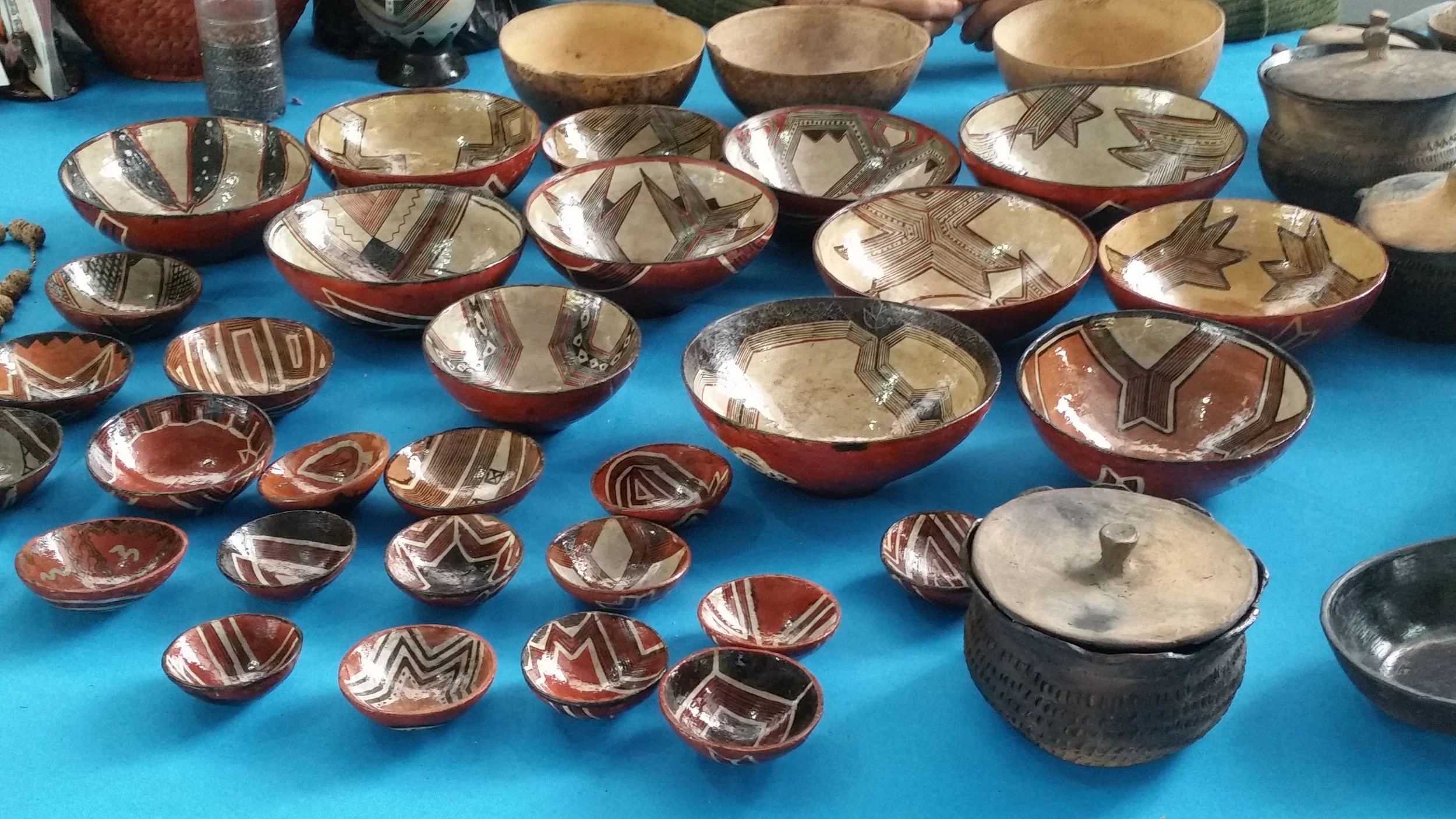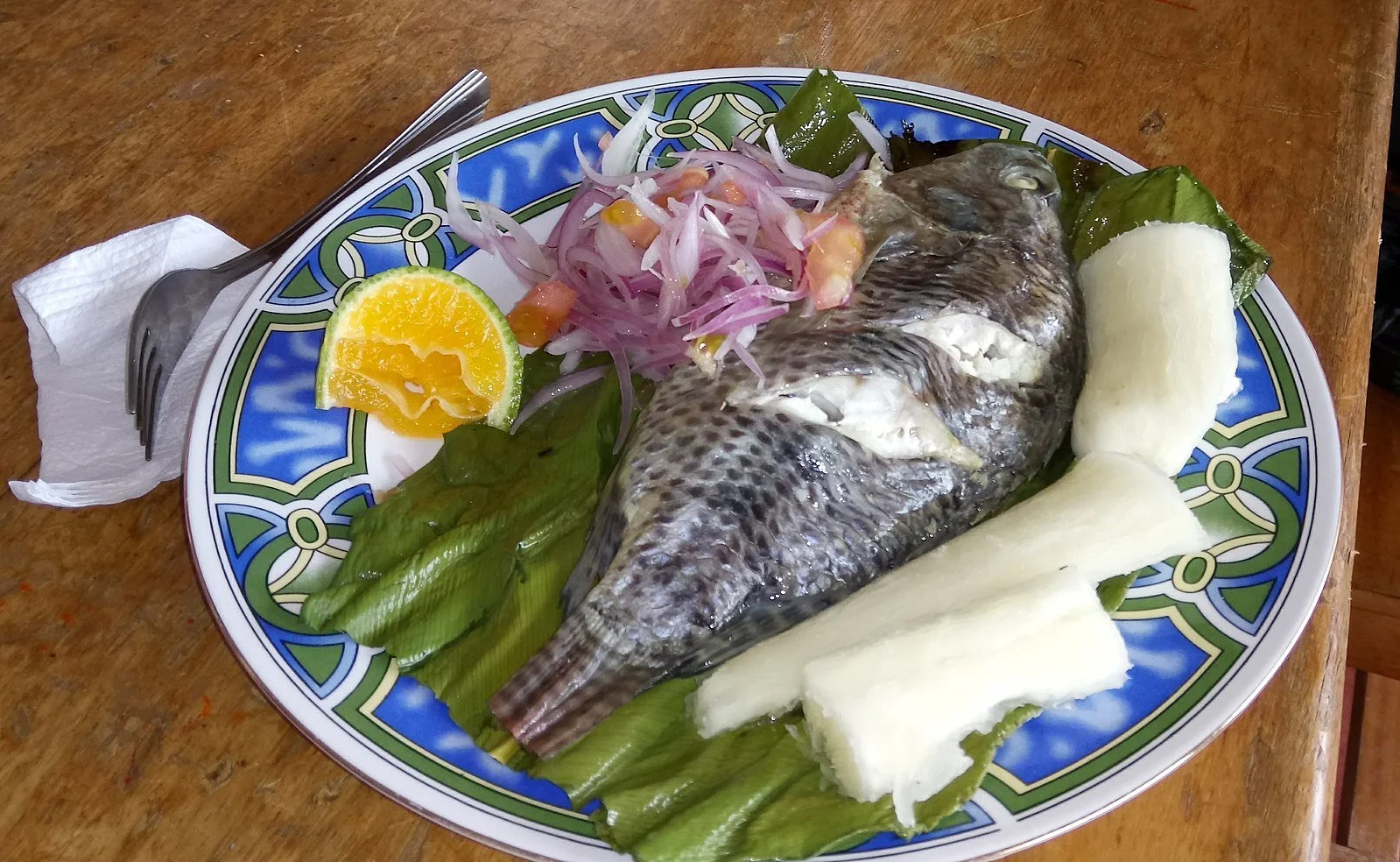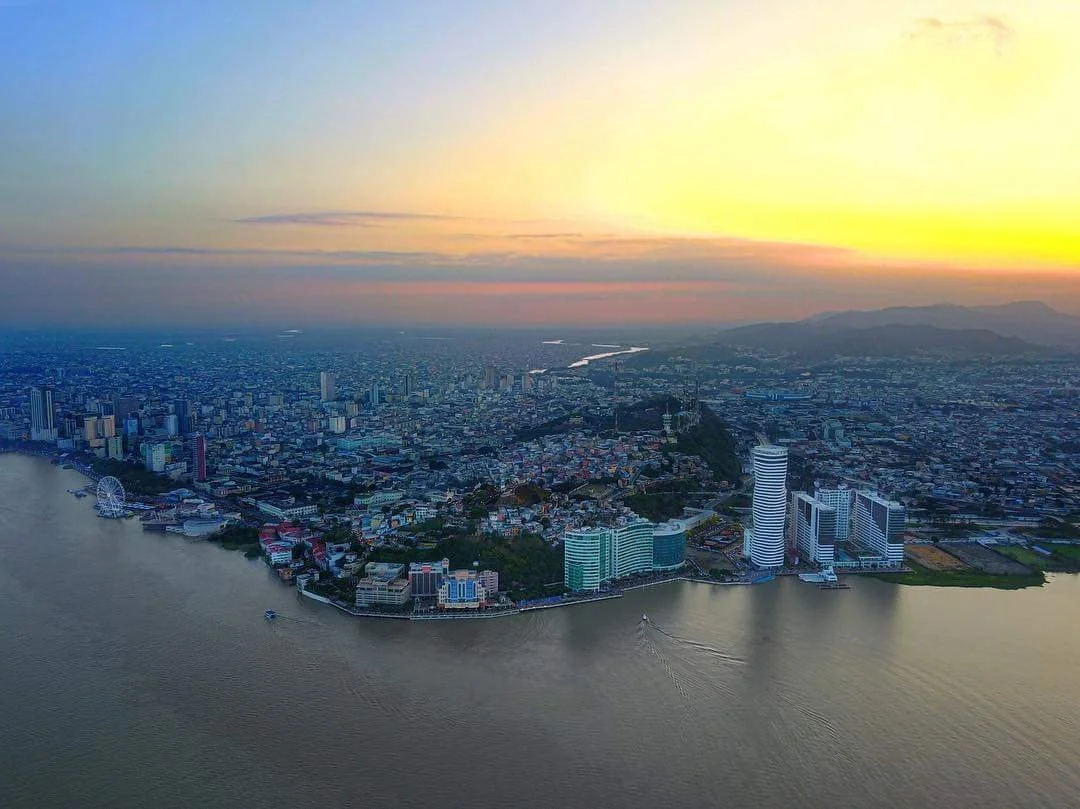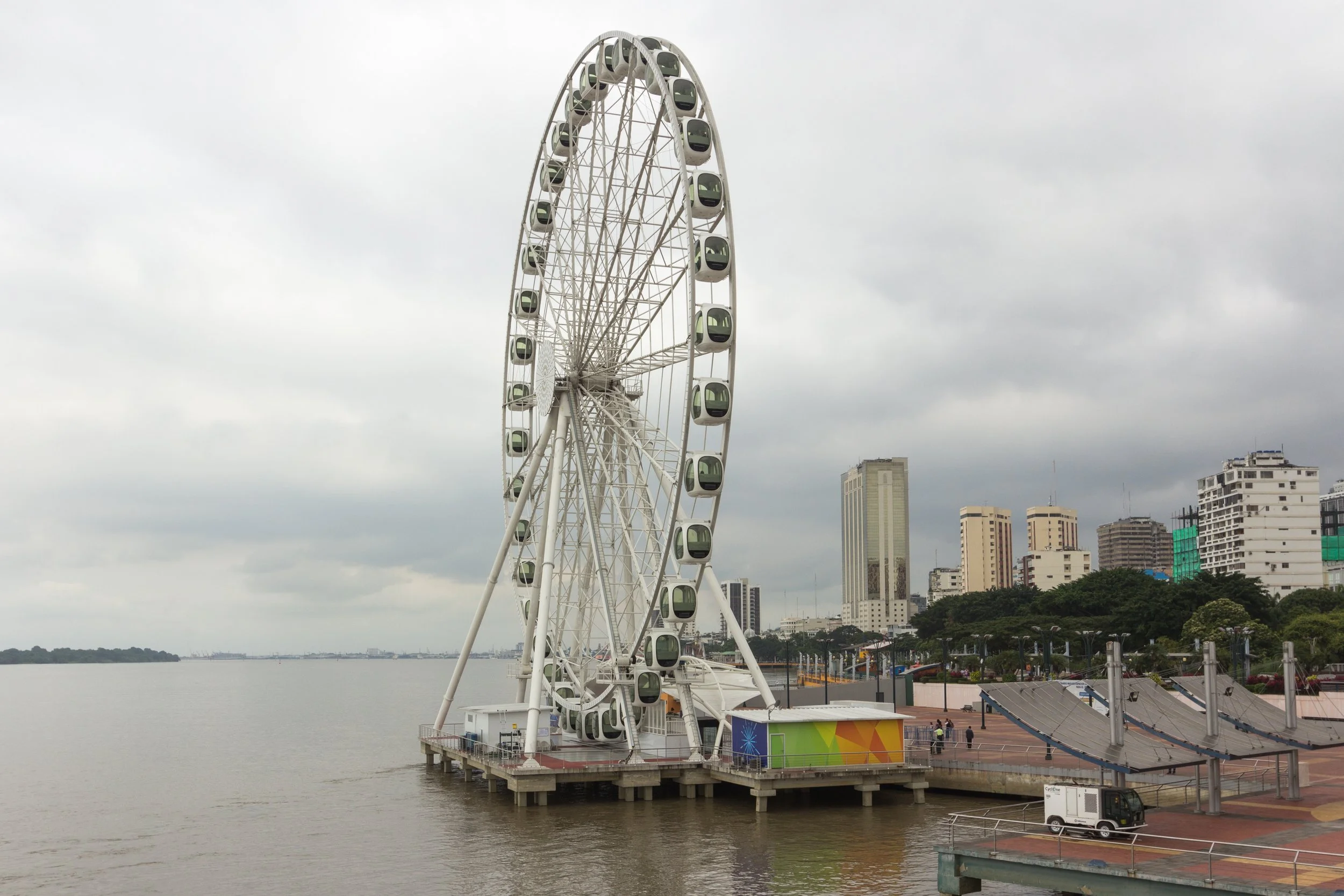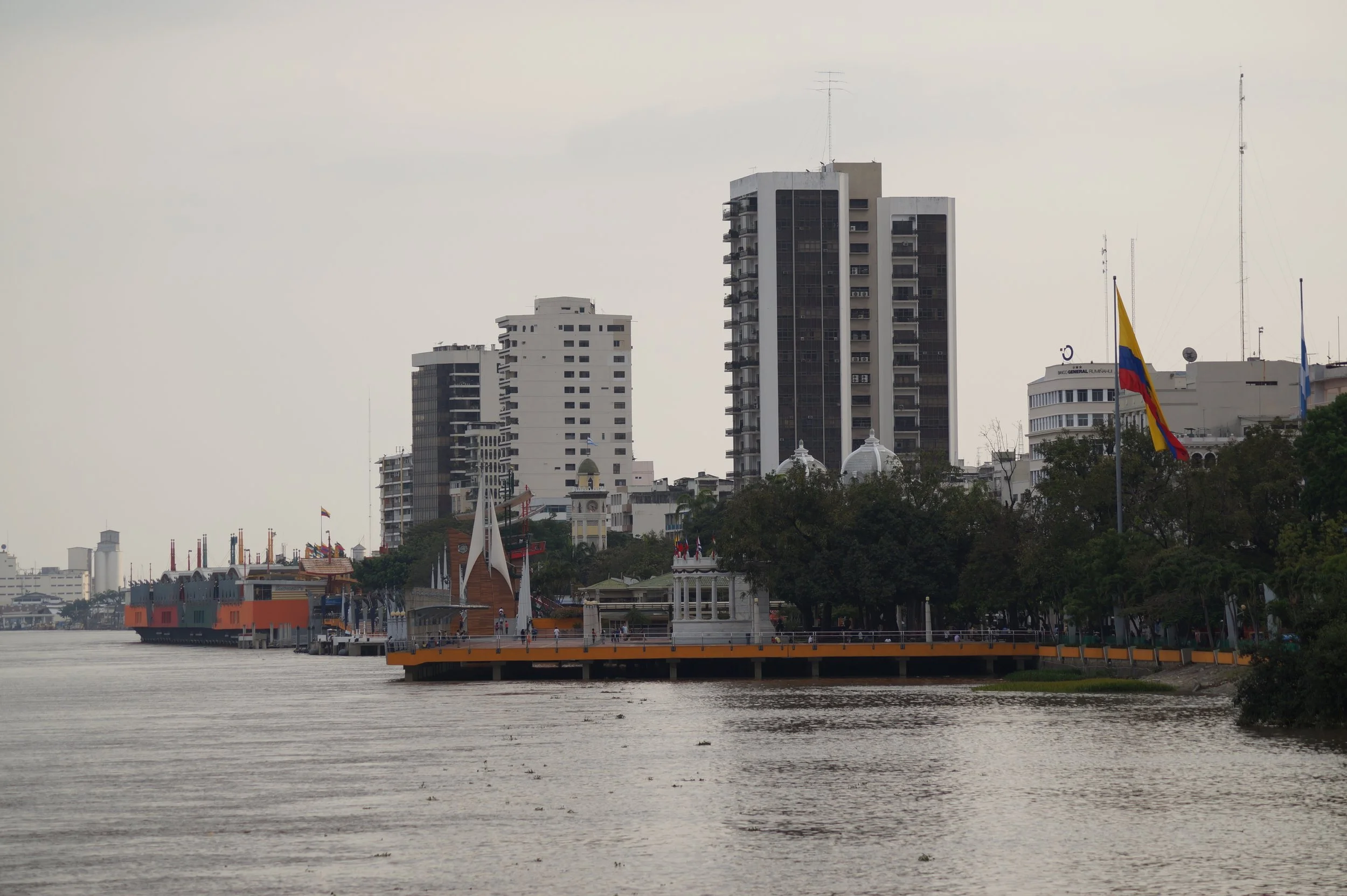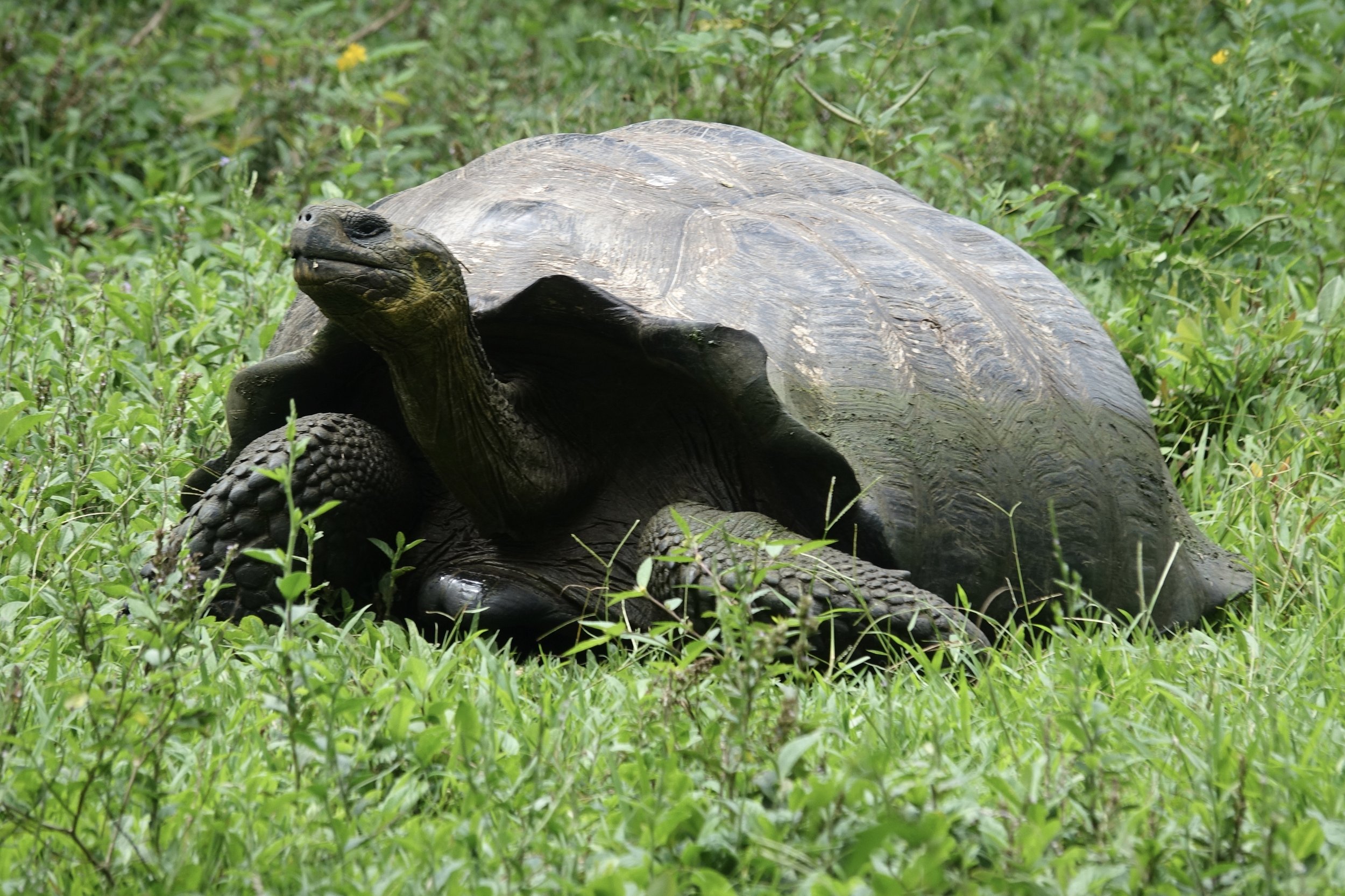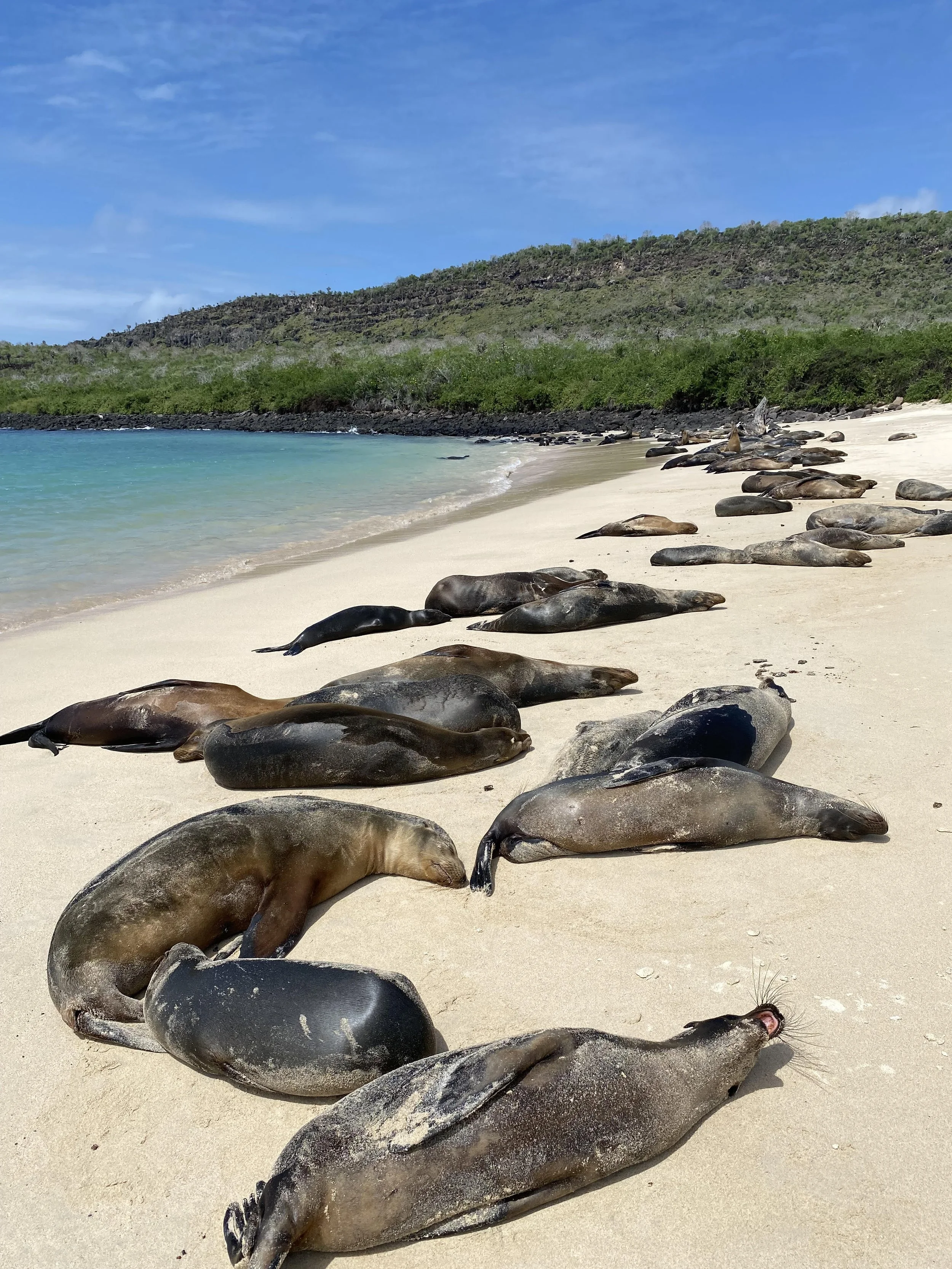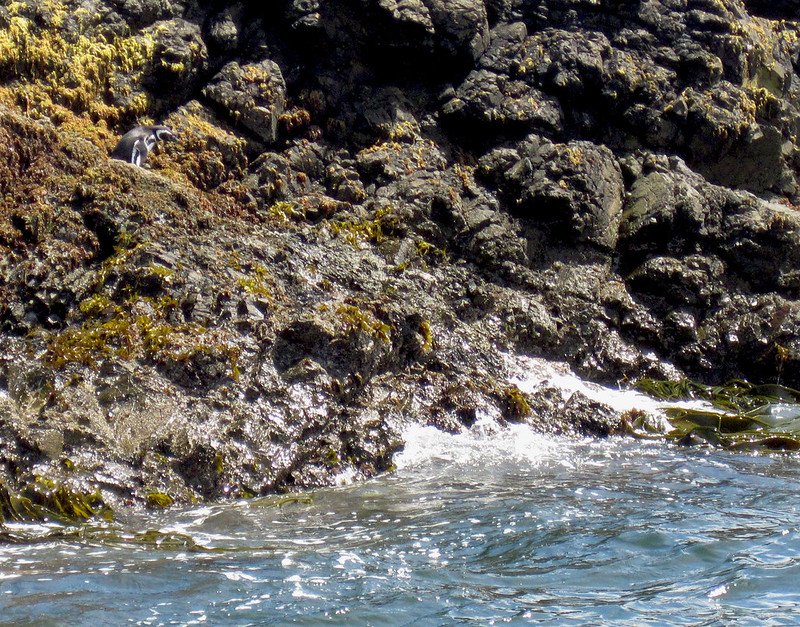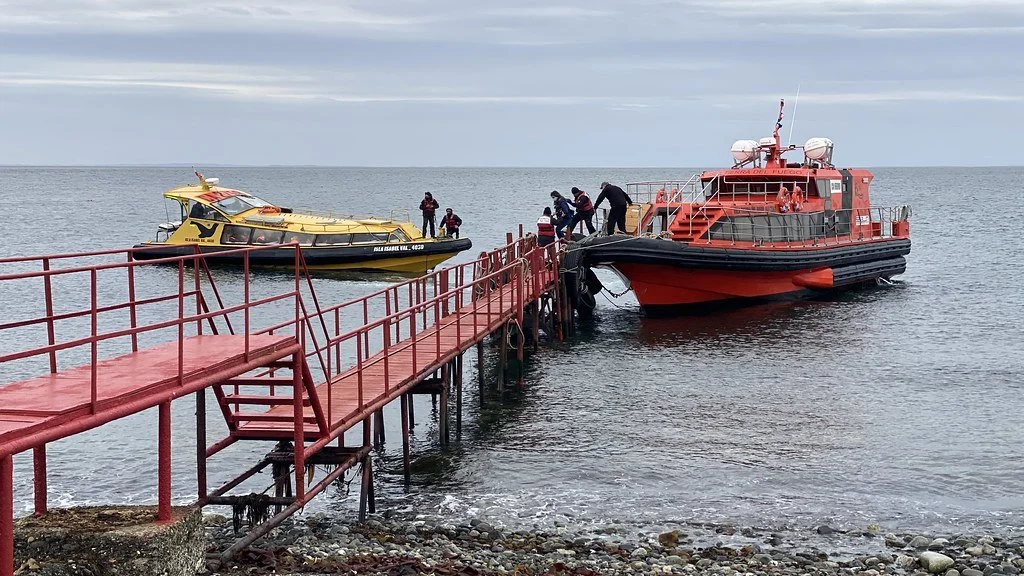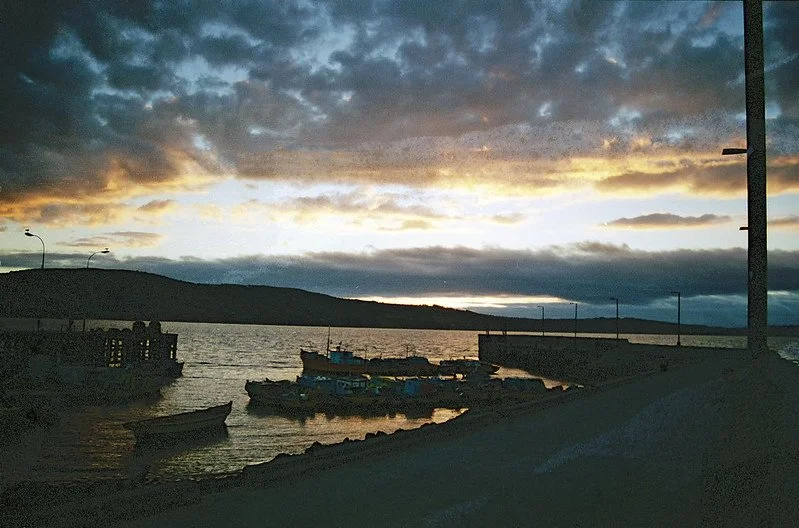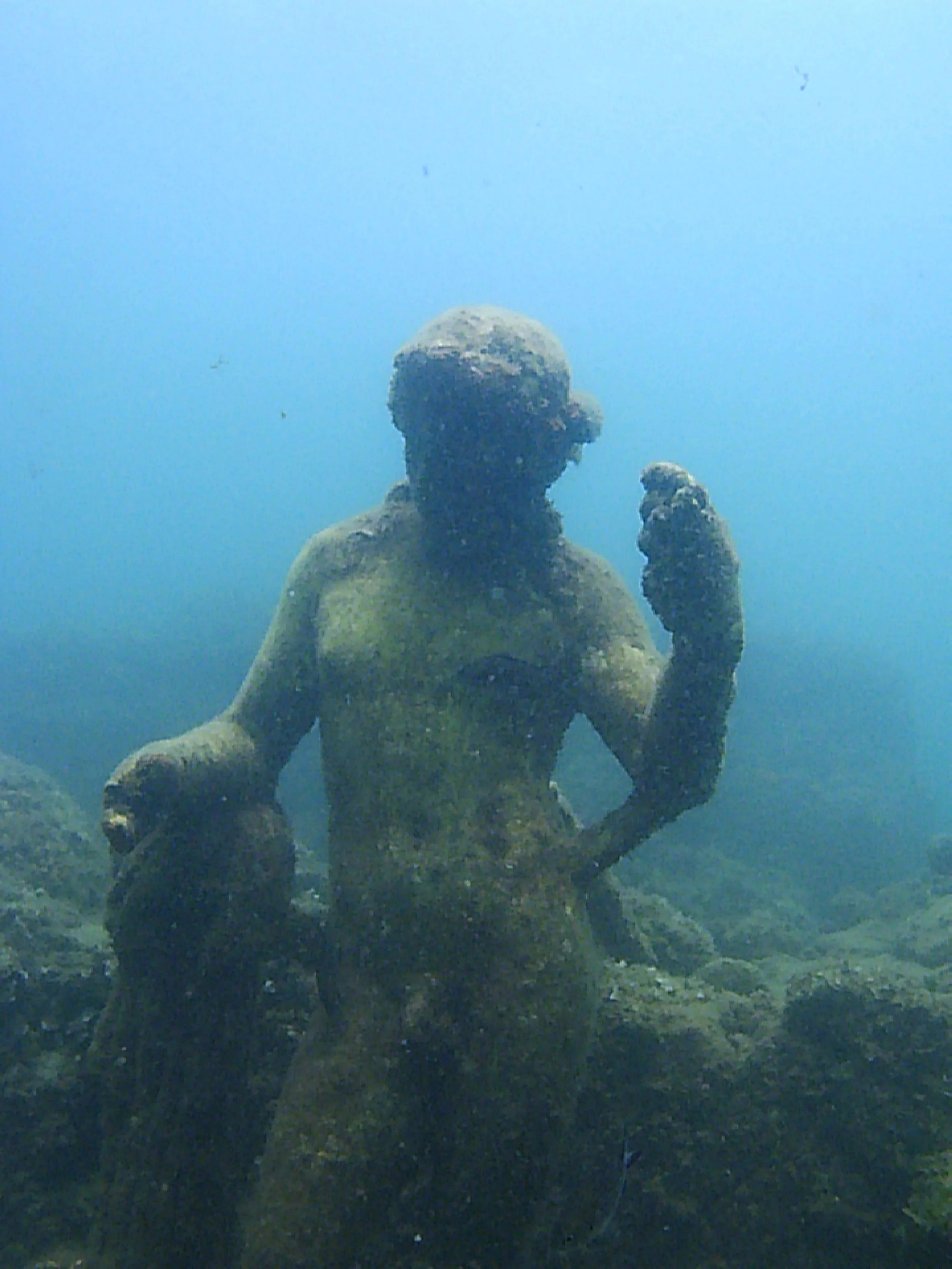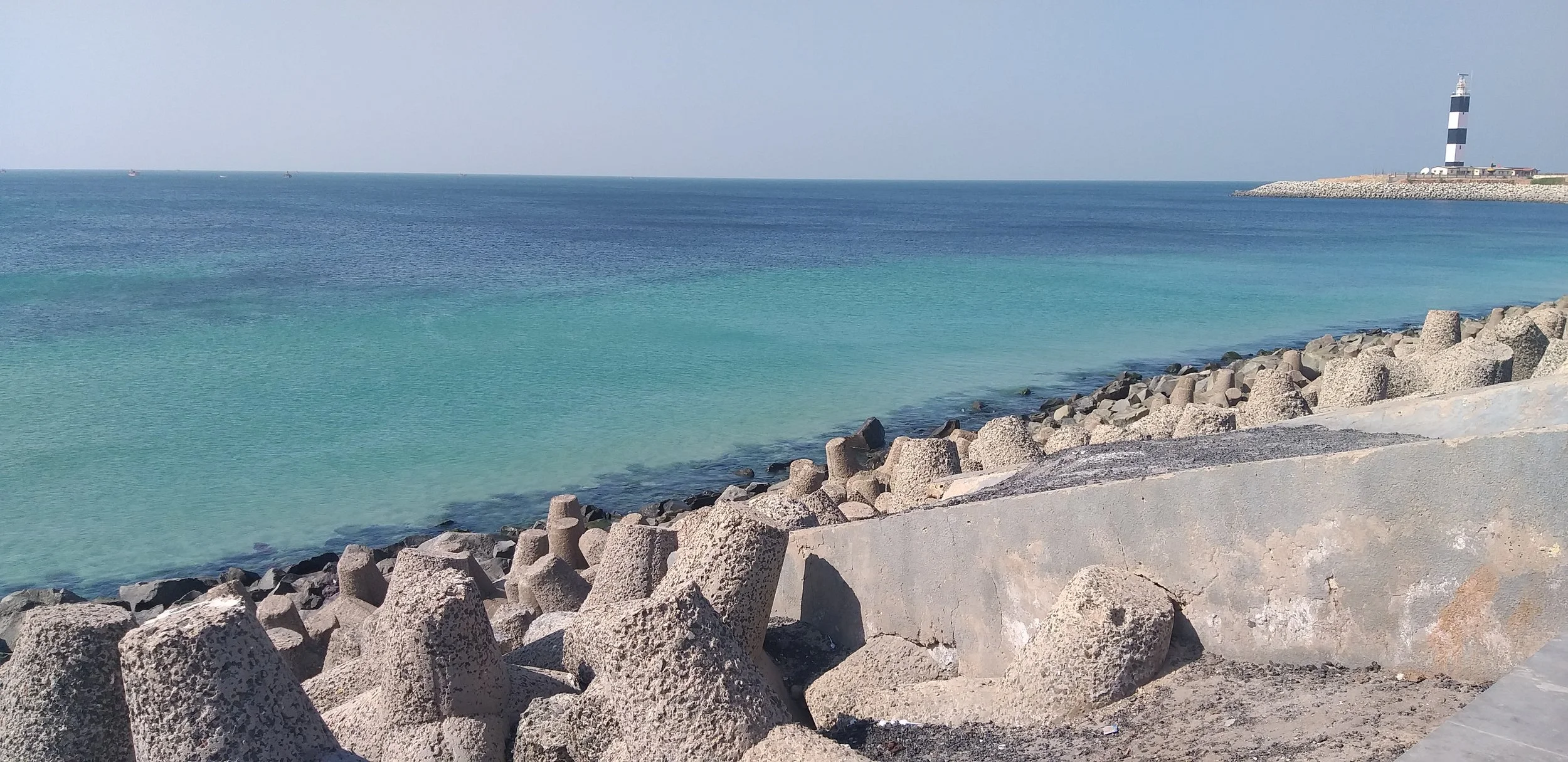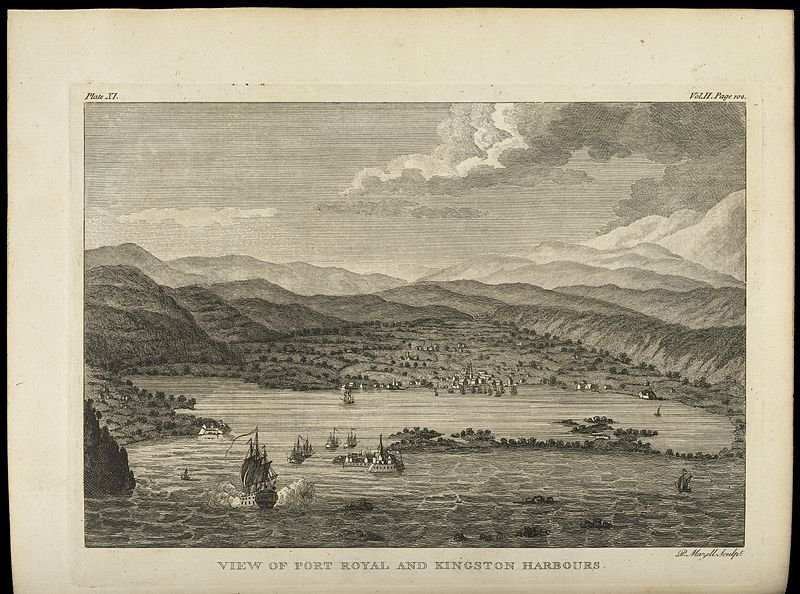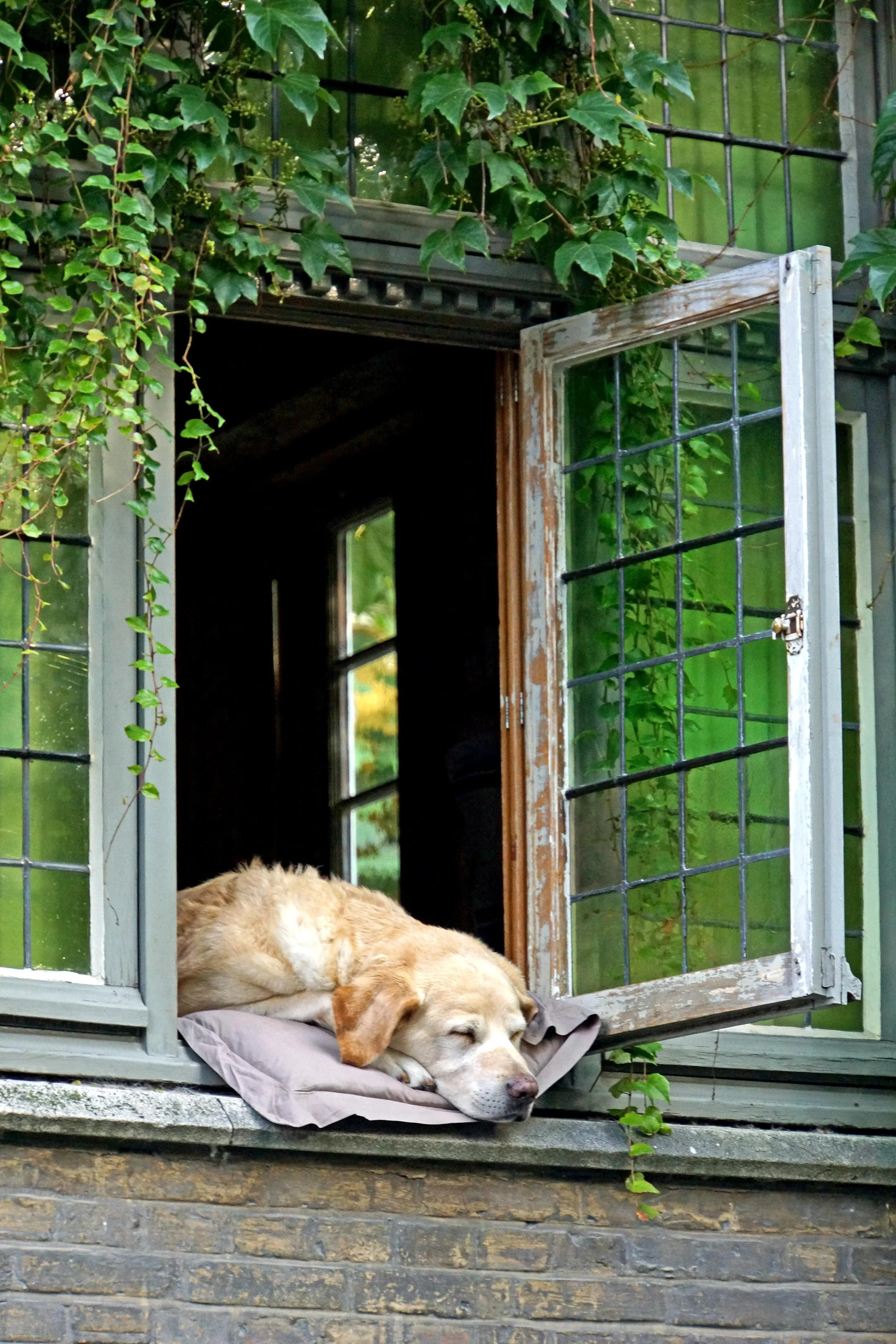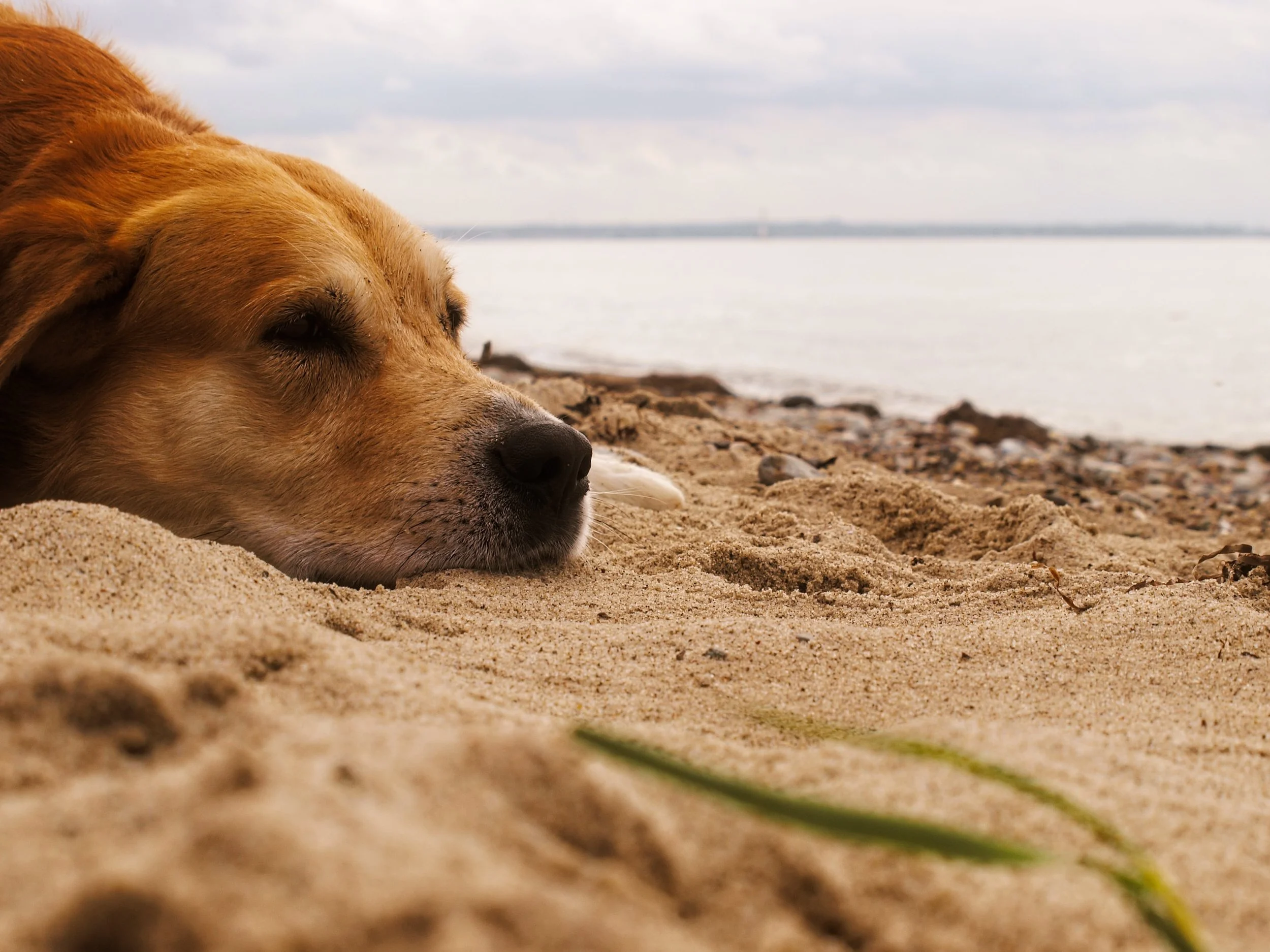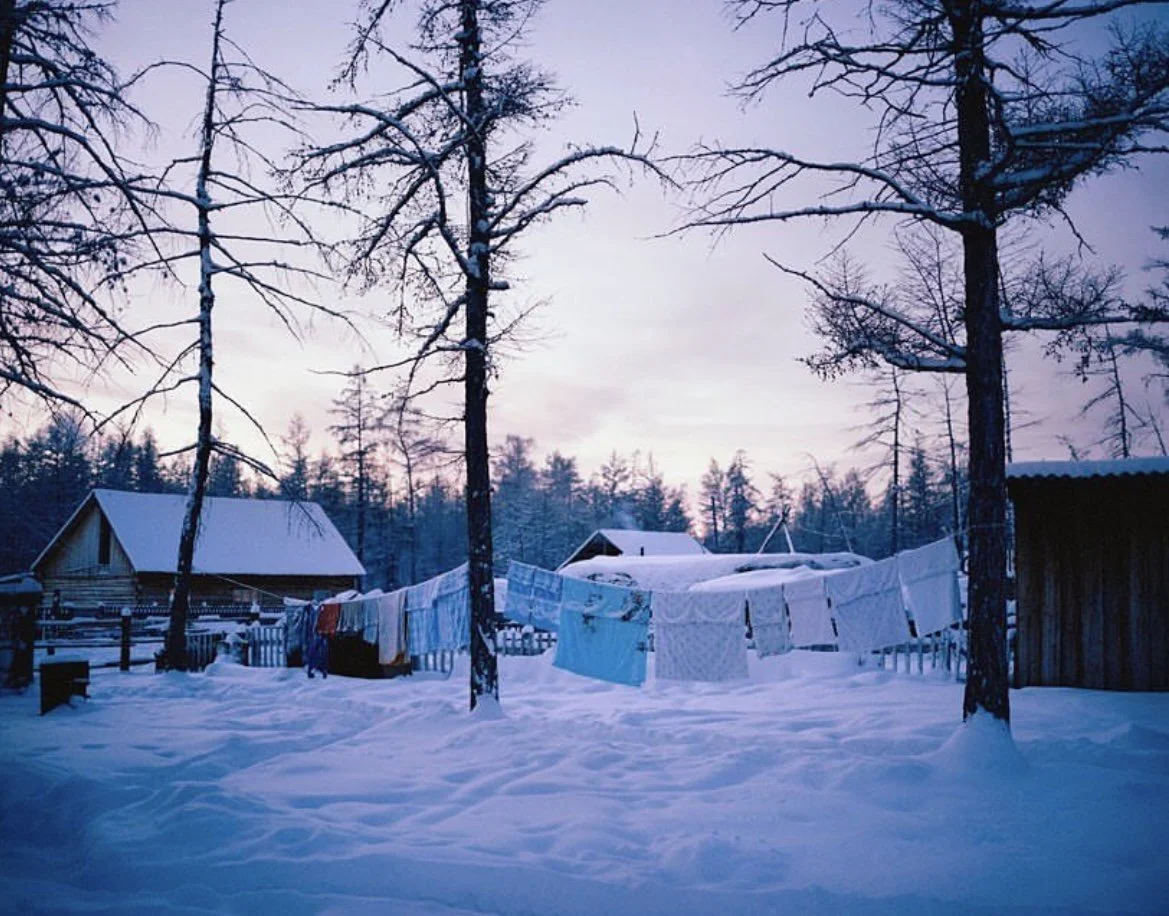Though riddled with its own challenges, solo travel provides unparalleled opportunity to build confidence and create friendships on the road.
Read MoreIsland Hopping Off The Grid: 5 Filipino Islands You’ve Never Heard Of
From unspoilt beaches and heritage sites to surfing hotspots and sunset views, there is plenty to choose from in the Philippines without running into massive crowds.
The Philippines has literally hundreds of picturesque islands for visitors to choose from. EdseastresD600. CC BY-SA 2.0
With a grand total of more than 7,600 islands, it should come as no surprise that there are many in the Philippines that remain obscure to travelers from abroad. Each one boasts the crystal clear turquoise waters that characterize the popular tourist destination of Cebu, but each also offers its own unique adventures to visitors looking to experience the archipelago’s diverse natural beauty. Many of these islands are surrounded by hundreds of smaller ones, and thus offer island hopping adventures for those who want to explore some of the more isolated atolls in the area. To help get you started, here are 5 incredible and lesser known islands in the Philippines to explore.
1. El Nido
El Nido boasts a large number of private and unspoilt beaches. Boris G. CC BY-NC-SA 2.0
Known amongst locals for its breathtaking natural scenery, El Nido is located at the northern tip of Palawan province and stands as the gateway to the smaller but stunning Bacuit Archipelago. For visitors who want to enjoy luscious tropical greenery and stunning white sand beaches without the crowds, El Nido is the perfect destination, with a number of boat rental services that allow you to discover your own private inlets and limestone cliffs around the island. Because of its relative isolation, the island is also home to a diverse range of animal wildlife including monkeys, deer, peacocks, and even the occasional dolphin; as such, all single use plastic has been banned to help preserve its unique ecosystem. If you tire of the beaches, plan a hike to the summit of Taraw Cliff, which is the highest point on the island at roughly 886 feet (270 meters) and which offers stunning views of the central town and coastline. Alternatively, Nacpan Beach in the northeast hosts a zipline that allows visitors to fly across the water to another island nearby, giving island hopping an entirely new meaning.
2. Mindoro
Reef diving in Mindoro provides an unparalleled opportunity to visit the second largest coral reef in the world. Asia Divers. CC BY-NC-ND 2.0
Mindoro island is the seventh largest in the Philippines and its eighth most populous, located in the west-central region of the country. It remains relatively undeveloped and is thus not the most common tourist destination, but still offers incredible scuba diving opportunities for those looking to explore the area’s variegated coral reef ecosystems. In fact, as the second largest coral reef system in the world, those off the coast of Mindoro are home to 75% of the world’s known coral species and a huge variety of marine life including scorpion fish, manta rays and various shark species. Many of these reefs are located around Puerto Galera, which is also well known for its sugar-sand beaches and which can become quite busy, with locals flocking to the area during national holidays. Climbing the island’s tallest peak, Mount Halcon, with a guide is also an excellent way to explore its massive expanse of rainforest, and the summit provides amazing views over both the oriental and occidental sides of the island. The hike is definitely not for beginners, however, with an elevation of roughly 8,582 feet (2,616 meters), although the smaller foothills are easily manageable and could also allow for a meeting with the Indigenous Mangyan people, who have lived apart from mainstream Filipino society since the sixteenth century.
3. Coron
There are at least 12 shipwrecks to explore off the coast of Coron. Karel Kosman. CC BY-NC-SA 2.0
Like El Nido, Coron is also located towards the northern end of Palawan province and is known for its picturesque freshwater lakes. While there are a whole range of lagoons throughout the island, each with their own beach area and tropical foliage, the most popular of these is definitely Kayangan Lake which is one of the cleanest bodies of water in the country. Additionally, while Mindoro specializes in reef diving, Coron is one of the best spots in the world to go on incredible guided shipwreck diving adventures. A squadron of Japanese supply vessels were sunk by American bombers World War II just off the coast of Coron, and now lie at recreational diving depths suitable for divers of all levels to explore safely. Snorkeling is another great water sport option, especially at Siete Pecados, which boasts some of the healthiest coral reefs in the world and allows for a stunning and up-close view of the marine life in the area. Alternatively, visitors can also experience one of the only saltwater hot springs in the world at Maquinit surrounded by mangrove trees, where the water remains between 98º and 104º Fahrenheit (37º to 40º Celsius) year round.
4. Bohol
The Chocolate Hills are a National Geological Monument of the Philippines. An diabhal glas. CC BY-NC-SA 2.0
Like the other islands on this list, Bohol is home to a number of beautiful and scenic beaches, but is also one of the best islands on which to engage in on-land activities as well. For one, it is home to the famous Chocolate Hills, a World Heritage Site and Global Geopark which features iconic cone-shaped limestone hills rising out of the jungle canopy at 400 feet (about 122 meters) that were formed from coral reef deposits over 2 million years ago. Travelers can also visit the Tarsier Sanctuary, a large forest dedicated to the protection of the smallest primate species in the world, which is currently under threat of extinction. This site is one of the only that is run by an officially recognized animal conservation organization, and all proceeds generated at the site contribute to the continued upkeep and preservation of the sanctuary. Alternatively, Bohol also offers incredible man-made wonders like the Mahogany Forest, also known as the Bilar Man-Made Forest which, as the name suggests, was the product of a reforestation project in the late 20th century. The towering mahogany trees stretch for roughly 2 kilometers (1.2 miles) along the border of the Bilar and Loboc towns and are so densely packed that the foliage almost entirely blocks out the sun.
5. Siargao
Siargao is a popular destination for the best surfers in the world. Miguel Navaza. CC BY-NC-SA 2.0
Easily identifiable by its teardrop shape, the southern Philippine island of Siargao is the ultimate destination for those looking for an island that has remained largely untouched by mass tourism. It is known among locals as the surfing capital of the country, hosting both the National and Cloud 9 Surfing Cups every year. The latter competition is named for the most popular surf spot on the island, which is located in the East coast municipality of General Luna. During the rainy season between September and November, experienced surfers can enjoy waves between 8 and 12 feet (roughly 2.4 and 3.6 meters), although there are plenty of less intimidating spots for beginners as well like Jacking Horse in the South. There are also a large number of resorts on the island that offer surfing instruction at a variety of levels, as well as independently held surfing camps that run up to a week. If surfing isn’t quite your thing, Siargao is also home to the beautiful freshwater cave pools, waterfalls and white sand beaches where you can swim with non-stinging jellyfish and enjoy other water sports.
Tanaya Vohra
Tanaya is an undergraduate student pursuing a major in Public Health at the University of Chicago. She's lived in Asia, Europe and North America and wants to share her love of travel and exploring new cultures through her writing.
Colombia Unveiled: My Journey from Mountainous Bogota to Caribbean Cartagena
From palm forests to quaint towns to the scenic Caribbean, Colombia defies stereotypes and should be a must-visit destination on your South American travels.
Read MoreOff The Beaten Path in Shanghai
From cultural collections to ancient architecture, here are 6 of Shanghai’s esoteric sites.
Shanghai’s skyline hides a city that blends historic culture and ancient tradition. Azizofegypt. CC BY-SA 2.0
The bustling metropolis of Shanghai is home to a whopping 26.3 million people, with an additional 632,000 tourists journeying to experience the city’s incredible history and traditions each year. Beyond the Bund’s iconic skyline and unbeatable nightlife, however, lie a treasure trove of hidden museums, culinary experiences and historical landmarks all waiting to be discovered. These lesser known enclaves will take you off the traditional tourist trails along the Bund or up the Pearl Tower, and will introduce you to new sides of the city’s multifaceted personality and culture.
1. Madame Mao’s Dowry
Madame Mao’s Dowry is chock full with vintage and modern Mao-inspired designs. Shanghai Collected. CC BY-SA 2.0
Whether you're an avid fashionista, a history enthusiast or simply curious about China's cultural heritage, a visit to Madame Mao's Dowry promises a full introduction to the impact of the Cultural Revolution and Mao Zedong’s rule on contemporary Chinese design. Its collection of artifacts ranges from photographs and posters to clothing and stationery, all displayed on antique furniture dating between 1949 and 1976, a period known eponymously as the Mao Era. Since 2001, Madame Mao’s has endeavored to highlight the complex connection between Mao’s political legacy and art by running various projects that encourage the use of old propaganda in modern visual art culture. In addition to the vintage items, the store also displays pieces by a handful of local Shanghai artists whose work draws from and reflects the artistic trends of the era, as well as housing their very own line of Mao-inspired paraphernalia. The intimate cultural space is occasionally transformed into a salon in partnership with Literary Shanghai, and hosts poetry readings, writing workshops and book launches among other events. Located in the Jing’An neighborhood to the west of the river, this store cum museum is definitely worth a visit.
2. Sheshan National Forest Park
Sheshan Basilica and the observatory sit atop the highest peak in the forest park. Meet In Shanghai. CC BY-NC 2.0
With an extensive and efficient public transport network, there is little excuse for overlooking destinations outside the city center. Sheshan National Forest Park is easily accessible from Sheshan Station and is the only natural mountain forest in the city’s vicinity. Covering over 400 hectares of land, the so-called resort includes several smaller parks and a multitude of hiking trails of varying difficulty, including the West Hill park in which stands the majestic Sheshan Basilica. Dating back to 1942, this towering 20 meter tall (roughly 70 feet) Roman Catholic cathedral has withstood extensive damage and unrest since its construction, and fuses traditional Chinese craftsmanship with the Western architectural tradition. In addition to the Basilica, the forest is home to China’s oldest observatory, an ancient tea garden, and 10,000 birds from over 50 distinct species. If visiting in the Spring, be sure to stick around for the Bamboo Shoot Festival, in which fresh bamboo shoots that break ground following the annual spring rains are harvested and prepared in local delicacies. Sheshan Forest Park is not to be missed by nature lovers or cultural explorers.
3. Propaganda Poster Art Center
The Propaganda Poster Art Center is tucked away in the basement of an apartment complex. Yasmin Crawford-Hunt. CC BY-SA 2.0
As its name suggests, Shanghai’s Propaganda Poster Art Center is home to the world’s largest collection of Mao Era propaganda posters, with over 6,000 individual artifacts on display. In addition to traditional paper signs that had been plastered all over public surfaces, the center has an impressive number of vintage cloth and woodcut pieces, as well as posters made in the “dazibao” or big character style, sheets covered in political speeches written in traditional calligraphy. Almost every year since 2010, this private museum has held special exhibitions around the world to showcase particular items and new additions to their collection in an effort to ensure that China’s recent history is not forgotten and to highlight the importance of propaganda art as a cultural, social and political tool. Just recently, the museum came into possession of hundreds of Shanghai Lady posters dating back to as early as 1910, which provide an even earlier glimpse into the use of propaganda in Chinese culture. Located in the Changning District on the west side of the river, this collection is a must for those interested in contemporary Chinese history, or for anyone looking for a unique souvenir.
4. Jiading District
The Ancient Town center of Jiading is accessible by boat. Chloe_cpc. CC BY-SA 2.0
This northwestern suburb was a thriving hub back during the Song Dynasty (1127-1279 AD), well before Shanghai grew to be the urban metropolis it is today. Despite its surroundings being full of factories and industrial production plants, Jiading District remains an enclave of cultural museums, ancient pagodas and scenic canals. For those looking for more contemporary attractions, Jiading is home to the Shanghai International Circuit, where the Chinese Formula 1 Grand Prix takes place. The district’s best sites, however, date back hundreds of years: Jiading’s Ancient Town was built during the early Qing Dynasty (1636-1912) and the main Confucian Temple from 1219 is one of the best-preserved in the world. The former can be toured by boat and explored via the many canals that run through the streets, the perfect way to step back in time and learn why the neighborhood was designated a “water town”. This area is also the birthplace of the world famous and universally loved Xiao Long Bao steamed soup dumplings, in addition to a variety of other unique local bites. For a day away from the crowds and noise of Shanghai’s city center, Jiading is the perfect getaway.
5. Hinichijou
Crowds gather to buy coffee from the friendly bear paw. China Daily. CC BY-NC-ND 2.0
On December 3, 2020, a cafe opened on Yongkang Road in Shanghai’s Xuhui District, an area highly popular among locals for its abundance of cafes and for its Instagram-worthy aesthetic. This establishment, however, was something special: through a literal hole in the gray wall, a furry bear paw emerged, pointing to the QR code hanging just beneath and encouraging passers-by to place their orders. This adorable gimmick was actually only part of the attraction, as customers soon found out that the cafe exclusively employed baristas with disabilities through the China Disabled Persons’ Federation, because it wanted to support and help provide employment opportunities for those with disabilities. The store’s opening coincided with the International Day of People With Disabilities and was then operated by two hearing impaired baristas. Since then, it has received incredible amounts of public support and has been able to open nine branches across the city, despite the general hardship caused by the COVID-19 pandemic. The chain has also furthered its mission by visiting with other similar businesses it has inspired across Southeast Asia and providing training to their employees as well. Its next project is to open another location in partnership with a local school for the visually impaired, before expanding overseas as well. For a quick coffee break with a conscience, Hinichijou is the place to go.
6. People’s Park Marriage Market
Umbrellas are laid out with marriage resumes on top. Fiona Mai. CC BY-SA 2.0
It was not long ago that all marriages in China were arranged. While most of the country has moved on, the weekly Marriage Market in the centrally located People’s Park is a striking remnant of such traditions. From noon till 5pm every weekend, parents gather and display their children’s marriageability resumes by balancing them on umbrellas or posting them on fences, highlighting their salaries, career prospects, and property ownership in the hopes of attracting an interested party. Photos are rarely included on the resumes, and there is little information about physical appearance or personal interests. Visitors are welcome to observe the proceedings without participating themselves, although be sure to respect the fact that for many of these parents, this is their last hope at finding partners for their children before they are deemed “leftover” men and women by society. According to unspoken tradition, it is customary to be married by the age of 25 and to be starting a family within two after that years, after which remaining single is often stigmatized or heavily questioned. For a one-of-a-kind immersive cultural experience, the Marriage Market is an event to see.
Tanaya Vohra
Tanaya is an undergraduate student pursuing a major in Public Health at the University of Chicago. She's lived in Asia, Europe and North America and wants to share her love of travel and exploring new cultures through her writing.
Manaus: Capital of the Amazon
My visit to the Amazon’s largest and most contradictory city.
City of Manaus. Dennis Jarvis. CC BY-SA 2.0
My first guide in Manaus explained that when people think about a city in the middle of the Amazon, they expect the city to be wild and see snakes crossing the streets. The reality of the Amazon’s largest city, located in Brazil’s Amazonas Province, is completely different. This past May I spent one of the most memorable weeks of my life in this province. During that time, I did go deep into the Amazon, where I saw a tree Boa, a large snake. But, I also visited a beautiful pink opera house, a fish market, antique bookstores, fancy restaurants, the Presidente Figueiredo Waterfalls, and even the Ponta Negra Beach, which was lined with tall buildings that seemed to be hotels, just like any beach town you’d find in the US.
Me, in the Amazon outside of Manaus. Jeremy Giles
This city of over two million people borders both the Rio Negro and the Amazon River, and is the access point to reach many communities deeper within the Amazon jungle. It is also one of Brazil’s largest industrial centers, including businesses that have nothing to do with the rainforest it borders. In my experience, Manaus is a city unlike any other, and thrives off defying expectations.
The History
Manáos, Eduardo Ribeiro Avenue in 1909. National Library of Brazil, public domain.
Manaus was originally founded in 1669 as a Portuguese fort. By 1832, the fort grew into a town, and received its modern name, Manaus, meaning “mother of the gods,” from the indigenous Manaós tribe. Only 16 years later Manaus expanded into a city. Two years after that, it was officially declared the capital of the Amazonas province.
After the invention of cars in the late 1800s, Manaus became the center of the rubber boom due to the almost complete South American monopoly of rubber trees, which are native to the Amazon basin. This completely changed the city, as it became viewed as the gateway to the Amazon, and became home to many incredibly wealthy rubber barons. These ridiculously rich families had more money than things to spend it on, and began to focus on architecture, shipping materials all the way from Europe to build huge beautiful masterpieces, many of which still exist today.
By the early to mid 1900s the rubber boom had almost completely left Brazil, being replaced by rubber trees brought to Southeast Asia. This spelled financial ruin for Manaus, which sank into desperation. This poverty continued until 1967, when Manaus was named a duty free zone, making it cheap for companies to move there. This allowed Manaus to grow into the economic hub it is today, currently being a Brazilian access point for over 600 global companies.
The Amazonas Theatre
Amazon Theatre in Manaus. Rafael Zart. CC BY 2.0.
The Amazonas Theatre opened in 1897, carrying with it Manaus’ nickname “the Paris of the Tropics.” The opera theater was built almost entirely using materials imported from Europe, topped with a beautiful dome of Brazil’s flag.
At the time of its opening, the opera theater was in many ways a sign of all that was wrong in Manaus. It was built for Manaus’ uber-wealthy, using the money they made by exploiting the local population to harvest the rubber they sold abroad. Moreover, even the few who could enter the opera house valued the status it brought them more than the opera itself. The most expensive seats in the opera house were those that were the most visible to the public. Ironically, these spots actually had the worst view of the stage itself.
Today, the opera house, which remains a top opera house in the world, has come a long way from its imperialistic origins. Most performances at the theater are free, and those that aren’t are very affordable. The performances feature both local artists and acts from around the world. Moreover, to encourage all to join, a large screen is often set up in the plaza in front of the opera house, allowing as many people to see the performances as possible.
The Ports
Manaus market from the river. archer10 (Dennis). CC BY-SA 2.0.
In many ways, the center of Manaus is its ports. Manaus is bordered by both the Rio Negro and the Amazon River, allowing for a large number of ships and ferries, both for tourists and locals. These boats can take you deeper into the Amazon or out of it entirely, allowing ocean freight ships to transport goods directly to Manaus.
In addition, much of Manaus’ culture and nature revolves around the ports. A little over a half hour by boat from Manaus’ ports is the meeting of the waters, a line where the Rio Negro meets the Amazon River. This line is clearly visible with the water looking different and being a clearly different temperature on either side of the line.
On land, about a five minute walk from Manaus’ largest port is an amazing market “Mercado Municipal” that, every morning, is filled with different fresh fish, including some of the biggest fish in the world. My personal favorite of these huge fish is Tambaqui, a cousin of the Piranha and one of the most delicious meals I’ve ever had. The fish is so big that its ribs are visible and alone big enough for a meal. In fact, I’d go even further to say that, to me at least, the ribs are the best part.
Amazon Rainforest
The Amazon Rainforest, a few hours from Manaus. Jeremy Giles
While Manaus itself is a big city, much of the land around it is still forested and filled with natural wonders. If you go an hour or two downstream on the Rio Negro, you will be greeted by intensely green trees on both sides which, in the right conditions, are perfectly reflected by the black water below you. In the wet season this water will rise several meters, causing many of the trees to jut out of the water itself. Just to note, climate change has caused the water to rise more now than in the past, however, the water rising multiple meters is a natural phenomenon and one that actually helps the trees survive.
When you’re surrounded by the trees you may start to be greeted by animals almost immediately. Howler and spider monkeys can be seen leaping from tree to tree, sometimes carrying their babies, and boas can be found curled up on branches. The water itself is dotted with caiman and different kinds of fish. The lucky will get to see pink river dolphins breaching the water’s surface.
A waterfall at El Presidente Figueiredo. Jeremy Giles
There is plenty to see around Manaus and in Manaus on land as well. Most notably, about an hour and a half drive from Manaus are the Presidente Figueiredo waterfalls. These waterfalls are all stunning to look it, with fast moving water from the Rio Negro. However, they do vary in size. The first waterfall I was unable to approach because it was too big. The second one was small enough that I was able to climb behind it.
The Rio Negro, or Black River in English, gets its color from the decaying vegetation that falls into it. Beyond giving the river a wondrous dark hue, this decay causes the river to be relatively acidic. While it is perfectly okay for humans to swim in the water, the same cannot be said for mosquitoes, who almost completely avoid the river. This is amazing for Manaus, which borders the Rio Negro, as the city has relatively few mosquitos despite being in the middle of the Amazon.
The Technology Industry
President Lula visiting a motorcycle factory in Manaus. Brasil em Mapas Brazilmaps. CC BY 2.0
While much of Manaus’ economy does revolve around the Amazon, the tech industry is actually one of the city’s largest. Brazil’s largest research and development Institute, the Sidia Institute of Science and Technology, is based in Manaus. Moreover, Manaus is known for its extensive motorcycle industry, producing over 1.4 million motorcycles in 2022.
Manauara Shopping Center. Naldo Arruda. CC BY 2.0
I’ve spent the past few days trying to think of what, out of everything I saw, best represents Manaus. I believe I’ve found it, but, like everything else with the city, it’s not what you would expect.
The Manauara Shopping mall is a huge and beautiful structure, with big glass windows lining the outside, seeming to connect the building to the world beyond its walls. It has more than 200 stores, which range from those selling wooden crafts and acai from the Amazon to big brands on national and international levels. The moment I remember most is when, after exploring the first three levels of the mall, my family decided to visit the basement food court. Going down the escalator, we saw the same glass windows from the front of the building, except this time, they were facing inwards. We walked towards a door under the hulking glass and through it outside into open space. I looked up and spiraling branches blanketed with green leaves towered above me, almost blocking my view of the night sky. I breathed in the air deeply, letting go of a tension I didn’t know I was holding. Looking back, in this moment, in a rainforest in the middle of a mall, I truly experienced Manaus most.
Jeremy Giles
Jeremy is a Writing Seminars and International Studies major at Johns Hopkins University. He is an avid writer and the Co-Founder of Writers’ Warehouse, Johns Hopkins’ first creative writing group. He is an advocate for Indigenous rights, and studies how Indigenous philosophies can be used to help prevent climate change. Using his writing, he hopes to bring attention to underrepresented voices in today’s world.
5 Reasons to Visit Andorra
Here are some ways to enjoy the beauty and history of one of Europe’s smallest countries.
Andorra’s capital, Andorra la Vella. Tiia Monto. CC BY-SA 3.0.
Located between France and Spain, Andorra is a country of the Pyrenees mountains. The official language of Andorra is Catalan, yet many residents also speak Spanish, Portuguese, and French. With an area of 180 square miles and a population of fewer than 80,000 people, Andorra is one of the smallest countries in Europe. Though small, Andorra has much to offer, with sights and activities that make a visit well worth it. Here are five things to do when visiting Andorra.
1. Skiing
Grandvalira ski resort. Llull~commonswiki. CC BY-SA 2.0.
Due to its mountainous location, Andorra is home to great skiing locales. The country has three main ski areas, which are Grandvalira, Vallnord, and Ordino Arcalís. Grandvalira is the largest of the three resorts, with 130 miles of slope, most of that at the intermediate level. Vallnord has a ski lift connecting the villages of Arinsal and Pal, and you can try Speed Riding there, which is a mix of hand gliding and skiing. Ordino Arcalís is a smaller and less crowded resort. With its northern location, it produces the most snow of all of the resorts, and therefore has a longer ski season.
2. Visit the Mirador Roc del Quer
Mirador Roc del Quer. Roberto-g-rovi. CC BY 3.0.
At 6,417 feet, the Mirador Roc del Quer lookout provides a great view of the Pyrenees mountains. With 12 meters of the walkway being detached from the ground, it creates the illusion of walking through the scenic view. At the end of the Mirador Roc del Quer, there is a statue called “The Ponderer” by artist Miguel Ángel González. This statue depicts a man calmly sitting on a beam looking at the view, unbothered by the drop from where he is sitting. Whether it be for sightseeing or picture-taking, the Mirador Roc del Quer is worth visiting when in Andorra.
3. Tour La Casa de la Vall
La Casa de la Vall. Zinneke. CC BY-SA 3.0.
Built in 1580, La Casa de la Vall was originally built as a manor house for the Busquets family. From 1702 until 2011, it served as headquarters for the Consell General, which is Andorra’s parliament. Today, it serves as a monument that is open to the public. The first floor once held the Criminal Court, as well as the Hall of Lost Steps, a room with walls made of 16th century paintings. This floor also holds the Cupboard of Seven Keys, which has a key to each of the seven Andorran parishes, along with significant historical documents. The second floor of La Casa de la Vall was once an attic, but it was renovated to become a multipurpose area, often used for exhibitions.
4. Hike Rec del Solà
Rec del Solà. Kulmalukko. CC BY-SA 3.0.
Within its mountains, Andorra offers many hiking opportunities. Beginning at the San Ermengol plateau, Rec del Sola is a five mile hiking trail connecting to the Rec del Obac trail. With an altitude of 1,122 meters, this trail passes through orchards and gardens, where local Andorrans grow vegetables. Towards the middle of the trail, there is a picnic area, where hikers can take a break and enjoy the view. Most of the trail is shaded from the sun, making it a great option for the summer season.
5. Visit the Museo Postal
Museo Postal. Kippelboy. CC BY-SA 3.0.
The Museo Postal, or Postal Museum, exhibits the history of Andorra’s postal services. By foot and by ski, the museum shows the complete history of delivery methods in Andorra over the years. There are 50,000 Andorran stamps displayed, along with exhibits that show how these stamps were made and the process of mail delivery in Andorra today. The museum offers guided tours to guests, but visitors can also explore on their own with an audio guide.
Alexandra Copeland
Alexandra is a student at The College of New Jersey studying psychology and journalism. She is a lover of coffee, dancing, and visiting new places. Being raised with her Greek culture has inspired her interest in cultural customs around the world. She is a passionate writer and hopes that her work will make an impact in the future.
Between the Cracks in Turkey: Exploring the Small Towns of the Crossroads of the World
Step off the beaten path and discover these six small towns in Turkey brimming with artifacts, natural wonders and rich history.
The beachtown of Kaş. Tutky Çetinel. CC BY 3.0.
One of the most renowned and well traveled cities in the world, Istanbul, peaked at 16 million tourists last year. The mosque- and artifact-riddled city attracts crowds that make it, for lack of a better word, a travel destination. Yet, some of Turkey’s most beautiful landscapes, edifices and history lie outside of its metropolis. Trek off the beaten path and journey to these six small towns in rural Turkey.
1. Safranbolu
Overview of Safranbolu. Ray Swi-hymn. CC BY-SA 2.0.
Once a trading center, this historic town is now home to many artifacts scattered throughout its ~390,000 square miles and among its three historical districts: Cukur, Kirankoy and Baglar. Some of its characteristic antiquities found in the Old Town include tombs, baths, mosques, fountains, and houses. Dive further into exploration with Safronbolu’s Old Mosque, the Old Bath, and the Suleyman Pasha Medrese, an Islamic religious institution, built in the 14th century. This UNESCO World Heritage site is worth discovering.
2. Kas
Rugs on a building in Kas. Julian Mason. CC BY 2.0.
This delightful beach town in Turkey’s Antalya Province doesn’t resemble the tourist-filled streets of the region’s eponymous city. Kas’s pleasant turquoise waters and lively color make the town stand out from Antalya’s busy, fast-paced life. While outdoor activities abound in this town — for example, canyoning is open to all travelers and day-long outdoor attractions like the Xanthos and Patara antique cities — a vibrant nightlife along the beautiful beaches awaits all visitors. Jazz clubs and rock bars alike welcome you to the wondrous city of Kas.
3. Iskilip
Rock tombs of Iskilip. Aerdemsenturk. CC BY-SA 4.0.
Just a 3-hour drive away from Ankara, Iskilip is another UNESCO heritage site on our list. This castle town’s epicenter is the Iskilip Castle, bordered by the town’s verdant mountains. While the Iskilip Castle is itself a site of historical importance, its base contains many Roman era tombs that are the real draw for many visitors. Iskilip is also a town of craftsmen; copper smiths, basket weavers, blacksmiths, cobblers, wood carvers and more set up shop in between houses, in houses, and everywhere in the town.
4. Midyat
Mor Sarbel Church. Senol Demir. CC BY 2.0.
In between the narrow cobblestone streets of Midyat lie ~410,000 square miles of artifacts, a structural chronicle of the past. The town, an hour drive from the Mardin province, houses unique sand-colored buildings. Among them is a series of religious edifices like the Ulu Cami, or mosque, with its characteristic minaret that towers over the surrounding buildings, the Mor Barsarmo Kilise, a church, and the Syrian-Orthodox Mor Sarbel church. Perhaps interesting, however, is Matiate, the official name of Midyat’s underground sites. Matiate is the largest cave system in the world, and is worth exploring along with the other wonders of Midyat.
5. Amasya
Houses in Amasya. Cobija. CC BY-SA 4.0.
This small town, much like others in this list, is a site of historical gravity. Three historical structures frame and define Amasya. First, the Amasya Castle, located at the top of Mount Harsena, is the center of this riverside city. While the climb to reach the castle can be steep, the view of Amasya’s green river and quaint houses has no peers. Second, the Amasya Museum is home to 24,000 artifacts from Anatolia including great stoneworks credited to the Hittites, Romans, Byzantines and Ottomans. Lastly, the Pontic Kings’ Rock Tombs, sepulchers carved into limestone rock formations, remind visitors of the once great Hellenistic Kingdom of Pontus, a stalwart enemy of Rome.
6. Camlihemsin
A river in Camlihemsin. Serra Kiziltas. CC BY-SA 4.0.
Located near the Black Sea region of Turkey, Camlihemsin is the smallest of the towns listed here, with an area of ~340,000 square miles. Much of the appeal of this town is its flora and fauna: with stately trees and grass-covered mountains, the town is perfect for hiking and mountain climbing. Hilltops embraced by surrounding clouds beautify the landscape. Waterfalls such as the Palovit Selalesi, a frequent reward for long hikes, also grace the town. Of course, one particular large historical artifact — the Zilkale medieval castle located in Fırtına Valley — caters to nature-naysayers.
Su Ertekin-Taner
Su is a first year student at Columbia University majoring in creative writing. Her love for the power of words and her connection to her Turkish roots spills into her satire, flash fiction, and journalistic pieces among other genres. Su hopes to continue writing fearless journalism, untold stories, and prose inspired by her surroundings.
Why You Should Visit the Makah Tribe on the Coast of Washington State
Visiting this region offers a unique opportunity to immerse yourself in a rich Indigenous culture that dates back thousands of years.
View from Cape Flattery Bluff. Manuel Bahamondez H. CC BY-NC-ND 2.0
The Makah Tribe's reservation, resting on the extreme northwest tip of Washington State, boasts an ethereal landscape and thriving cultural practices. The land and the Tribe's community inspire and nurture ongoing engagement with nature and rich family connections. Despite its remote location, accessible by a single, winding route, the rich culture and natural beauty of this community offer a magical experience for curious travelers.
The reservation sits at the farthest point north and west in the continental United States, cradled between gentle hills covered by tall Douglas Fir, Sitka Spruce, and Western Red Cedar trees on one side and the rugged Pacific coastline on the other. In the wake of a century-long fight against colonization the Makah continue to protect their sovereignty through the teaching of their Indigenous language, the celebration of cultural rituals and artifacts in their local museum and schools, and the preservation of the tribe’s traditional and sustainable reliance on native plants and animal species. The Tribe welcomes visitors from near and far to reflect on the reservations’ deep culture and lush natural landscapes. Hiking, surfing, and other outdoor activities are easily accessible from this scenic location and cultural hub. Visiting the Makah Tribe offers a unique opportunity to immerse yourself in a rich Native American culture that dates back thousands of years. The stunning natural beauty surrounding the Makah Tribe, including picturesque beaches and rugged cliffs, provides a breathtaking backdrop for your visit.
Sunset on First Beach. Jaisril. CC-BY-NC-ND 2.0
Generation after generation, the fabric of the Tribe’s community is woven through its cultivation of the natural world and artistic endeavors. Today, a significant number of Makah individuals thrive as artists, making a living through the sale of intricately crafted goods which are sold to galleries, shops, and collectors across the globe. A major source of income comes from the exportation of these artistic goods and is a key element of the Tribe’s livelihood. Carvings and masks in particular are a distinct feature of Makah art and have garnered the attention of tourists and art sellers alike for generations. The pieces often feature animals that hold deep cultural importance to the Makah. Whales, salmon, halibut, ravens, eagles, otters, herons, and wolves are commonly depicted in these designs. Each carving tells a story, chronicling the rich narratives of the origins and struggles which are passed down through generations within the community and amongst families.
The Makah are highly skilled woodworkers, capable of fashioning a wide array of items from the trees that thrive in their surrounding forests. While western red cedar is most frequently used, you can also find artists working with alder, yew, and spruce. Carvings range in size, from intricate jewelry to grand ocean-worthy canoes and towering totems. The incorporation of nature imagery and the sourcing of natural materials reinforces and honors the Makah’s reverence for their lands and waters.
Example of Makah style art. A. Davey. CC-BY-NC-ND 2.0
Long before the advent of written language, the tribe used dance, song, and storytelling to receive and retain intergenerational knowledge. These melodic traditions are shared and reinforced on various occasions, including weddings, naming ceremonies, memorials, and other family or community celebrations. The Makah reservation museum hosts a compelling collection of artifacts, information guides, as well as a garden with plants labeled with the native language and traditional uses.
For instance, the tribe once maintained five, thriving and permanent villages: Waatch, Sooes, Deah, Ozette and Bahaada. Their ancient way of life began to shift in the late 1770s, when Spanish explorers first settled in and around Neah Bay in 1779. The Spanish and other European groups were eager to exploit the natural resources of the Makah's land and brought in non-Indigenous modes of technology, among the most important of which were guns. The exploitation of the land's natural resources resulted in extinction of native plants and animals (e.g., otters and whales). Not only did the Europeans bring new technologies, they brought diseases, such as smallpox and measles, which plagued the less resistant indigenous communities. The Tribe's traditional ways of life were disrupted, and its inter-generational familial and domestic structures were gravely impacted as a result of death and the loss of land ownership. In the winter of 1855, Makah leaders and the American government signed theTreaty of Neah Bay, which stipulated that the Tribe give up ownership of much of its land, with the exception of rights for certain Indigenous practices, such as whaling, seal hunting, and fishing. The Makah were forced to cope with changes and shift to a more European lifestyle. In exchange, the United States government promised to provide public education and health care. To this day much of the tribe’s coastlines and forests are still under shared jurisdiction with the National Parks Service and the United States Government.
Makah Whale Hunting Ceremony. U.S. Forest Service- Pacific Northwest Region. CC0
As with so many Indigenous tribes across the country, the Makah have resisted the pull of corporate behemoths endeavoring to exploit the natural resources and cultural traditions that rightfully belong to the tribes. These tribes have fought to ensure their histories are not just archived but are alive and flourishing. One of the best ways to protect the ongoing strength of these communities is to visit these places and engage respectfully with the work and lifestyles of the Indigenous peoples, and to listen to and learn their histories.
Avery Patterson
A rising junior at Vassar College in New York State, Avery is a Media Studies and French double major. She is an avid reader, writer, and traveler. She loves to immerse herself in new cultures and is an avid explorer who loves being in nature. She is passionate about climate and social justice and hopes to use her love of writing as a catalyst for positive change.
A Sustainable Guide to the U.S. Virgin Islands
The U.S. Virgin Islands offer a gateway into a world of rich marine life, lush vegetation, and a complicated global history.
Trunk Bay Overlook in St. John, U.S. Virgin Islands. Blake Carroll. CC0 1.0
Nestled in the northeastern area of the Caribbean Sea, some forty miles east of Puerto Rico, the U.S. Virgin Islands are characterized by their tropical beauty and rich coastal life. The U.S. territory consists of a bevy of small, minor islands and three large, more significant ones: St. Croix, St. John and St. Thomas, the latter of which hosts the capital, Charlotte Amalie.
Following a struggle over control of the islands between European powers, Denmark claimed St. Thomas in 1666 and St. John in 1684, and eventually St. Croix in 1733. Under Danish control the islands became a center for sugarcane production, and a major player in the African slave trade until slavery was abolished in 1848.
The United States purchased the Danish West Indies in 1917 for $25 million dollars, acquiring what are now the U.S. Virgin Islands. Tourism boomed after World War II to become the islands’’ primary economic activity, with nearly 3 million people visiting the islands every year.
St. Croix
Christiansted, St. Croix. Crystal Forest. CC BY 2.0
Known for its world class scuba diving and rum making, St. Croix offers opportunities for travelers to explore its environmental wonders and colonial history. One popular destination is the old town of Christiansted, which served as a mercantile center to support the island’s sugar-based economy in the 1700s. Travelers can explore the old Danish colonial architecture, including Fort Christiansted, which was built in the 18th century to ward off pirates. Alexander Hamilton spent his adolescence on St. Croix, and guided tours allow travelers to explore the island’s history while mapping out Hamilton’s early life. Popular sites on the tours include Christiansted Wharf, the international trade post where Hamilton arrived on the island as a child, and St. John’s Anglican Church, where Hamilton’s mother was buried.
Camping offers travelers a great opportunity to explore a new environment in a low-impact and environmentally conscious way. Mount Victory Camp on St. Croix is one such site working to create a sustainable option for travelers to enjoy St. Croix. The camp includes eco-lodges built from storm-felled tropical hardwoods and powered by renewable energy. Workshops are also on offer for visitors to learn more about the natural environment, with activities ranging from bow-making and wild food preparation to shelter building and naturalist studies.
On St. Croix, travelers can take advantage of activities offered through the St. Croix Environmental Association. The Association supports environmental advocacy, conservation and educational programs that help the public to learn more about the island’s natural resources. It also provides educational opportunities for kids, where they can engage directly with nature through snorkeling clinics, eco fairs, and forest field days.
The Buck Island Reef National Monument was established in 1961 and lies off the northern coast of St. Croix. The Monument covers some 30 square miles, including the entirety of Buck Island and surrounding barrier reefs. It is a popular snorkeling spot, and visitors can catch a glimpse of the rich marine life supported by the reefs, the likes of which include butterfly fish, barracuda, and reef sharks. Travelers can end their Buck Island adventure at Turtle Beach. The beach’s soft currents allow for easy swimming and, true to its name, an opportunity to glimpse sea turtles.
St. John
Virgin Islands National Park. Larry Syverson. CC BY-SA 2.0
Home to 20 square miles of protected national park land, the island of St. John is a paradise of tropical vegetation. Established in 1956, the Virgin Islands National Park covers approximately three-fifths of St. John’s mainland and includes waters surrounding the island, as well as parts of Hassel Island and the harbor of Charlotte Amalie on St. Thomas. The park, which was named a UNESCO World Network Biosphere Reserve in 1983, is home to some 800 different species of plants, ranging from cactus and agave to mangrove swamps and bay rum plants. In addition to its vegetation, the park also hosts more than 20 species of tropical birds as well as dozens of migrating species.
Off the coast of St. John, the Virgin Islands Coral Reef National Monument includes roughly 22 square miles of protected coral reefs and marine life. The monument, which was created in 2001, is a “no-take” zone, which effectively bans fishing in the area in an attempt to protect damaged reefs and overfished species.
With its extensive area of protected national parkland, St. John offers numerous camping sites for travelers. Along with those provided through the National Park, Maho Bay Camp is another popular site in which visitors can take advantage of eco-friendly lodgings. The camp began as 18 tent cottages in the heart of the National Park in 1976, and is now made up of 114 hand built tents. The lodgings are built on raised wooden pilings in order to prevent erosion of the forest floor and reduce runoff that can feed into and harm coral reefs. The camp provides visitors opportunities to further explore the island by offering activities such as sailing excursions, scuba diving, snorkeling and boat tours.
Maho Bay Beach is also one of the most popular places on the island for travelers to glimpse sea turtles. Sea turtles are a protected species, and it's important that travelers in no way touch or disturb the animals. Visitors can, however, marvel at the turtles underwater from a safe distance at Maho Bay Beach, with snorkeling gear rented by nearby stores such as Reef2Peek.
St. Thomas
Charlotte Amalie. Wayne Hsieh. CC BY-NC 2.0
First established as a Danish colony in 1672, St. Thomas serves as a gateway to the rest of the Virgin Islands and home to the territory’s capital city, Charlotte Amalie. Slavery was first introduced to St. Thomas in 1673, and Denmark’s use of the island to export sugarcane, along with its neutral status during the Napoleonic Wars, made it a prominent trading center and the largest slaving port in the Western Hemisphere.
The impacts of slavery in the Virgin Islands are still felt by local communities today. Emancipation Day is celebrated on July 3rd to commemorate the abolition of slavery on the island in 1848. The holiday is a moment of celebration, memorialization, and reflection on the islands’ history of slavery. On St. Thomas, Emancipation Day activities are hosted by The Pan African Support Group, which creates programs to generate education around the islands’ history while supporting their continuous social and political growth. The group is also working to create a genealogy project to help islanders trace back their familial roots and origins, dating all the way back to1838.
Walking tours in Charlotte Amalie give travelers the opportunity to learn about St. Thomas’ history. A self-guided tour includes sites such as Fort Chirstian, which was built by the Danish in 1680 to protect against invasion, and the Emancipation Gardens, which commemorate the 1848 emancipation of slaves by Governor Peter von Scholten.
Another popular spot for travelers are the 99 Steps. The staircase was built using bricks brought over from Denmark on sailing ships to make the island’s hilly terrain more accessible. Climbing the steps leads travelers to another important site on the island: Blackbeard’s Castle. Now a National Historic Landmark, the structure was originally built to provide a vantage point from which to spot enemy pirate ships. The castle is currently under renovation following damage from Hurricane Irma.
As one of the most developed and frequently visited of the Virgin islands, St. Thomas faces greater challenges of creating sustainable travel options.
One of the most popular ways to explore St. Thomas is through Virgin Islands EcoTours, which offer travelers opportunities to learn more about the island from professional naturalists through kayaking, snorkeling and hiking trips.
While exploring the Virgin Islands’ beaches and marine life, travelers should be aware of their choice of sunscreen and the effects it has on the environment. Sunscreens that contain oxybenzone, octinoxate and octocrylene can prove toxic to the oceans and are prohibited on the islands. Travelers should opt for non-nano mineral sunscreens containing zinc oxide and titanium dioxide, which have been deemed environmentally safe.
Making environmentally conscious food choices at restaurants can help lower human impact on St. Thomas’ environment. With local species such as Caribbean lobster and conch, as well as reef fish such as grouper, snapper and grunt under threat from overfishing, it is more sustainable for travelers to opt for open water alternatives such as dorado, wahoo and barracuda.
Every May, AgriFest offers an opportunity to learn about the island’s local food production and farming community. The agriculture and food fair uplifts local vendors while celebrating Caribbean culture and cooking traditions.
Jessica Blatt
Jessica Blatt graduated from Barnard College with a degree in English. Along with journalism, she is passionate about creative writing and storytelling that inspires readers to engage with the world around them. She hopes to share her love for travel and learning about new cultures through her work.
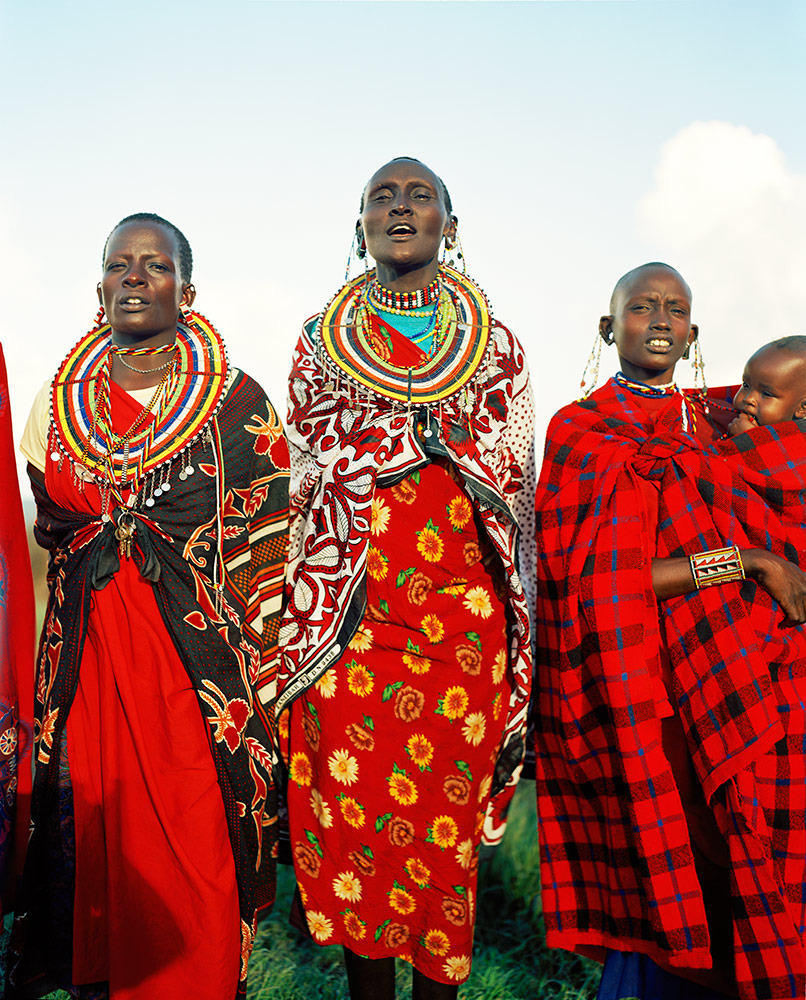





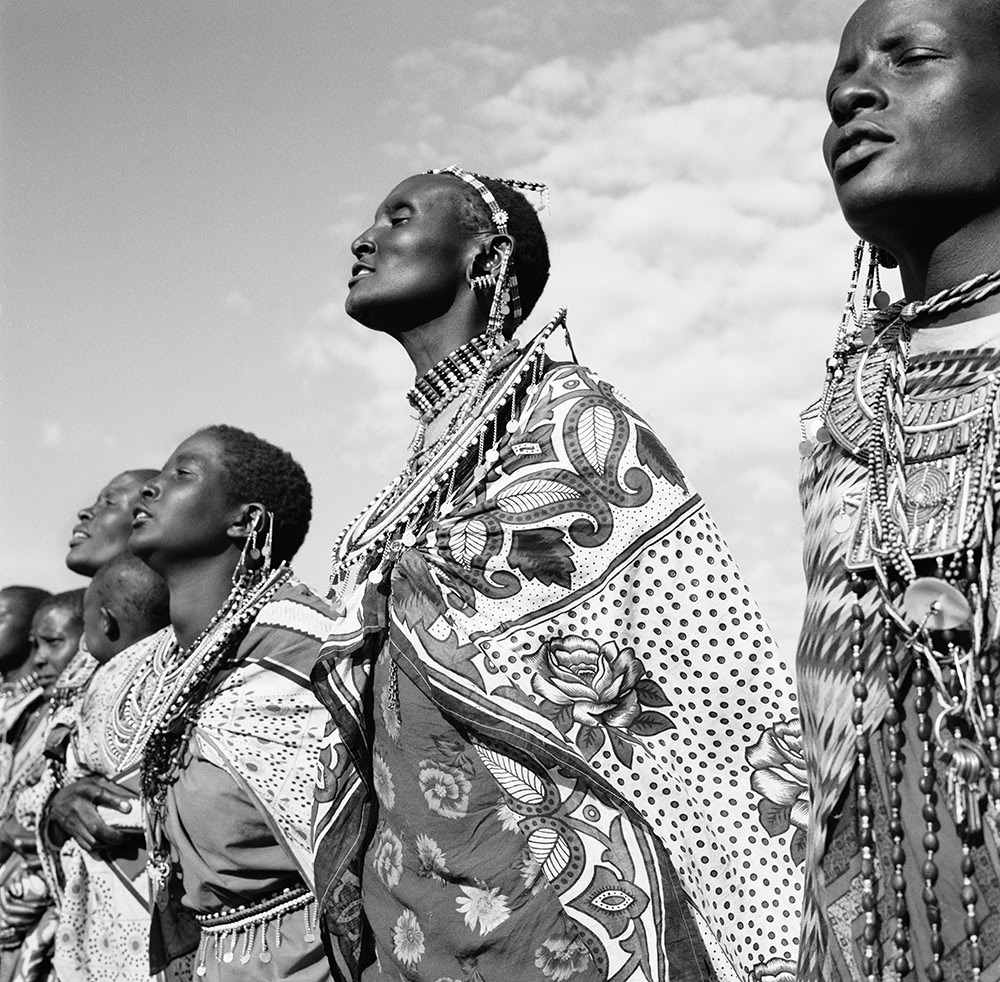

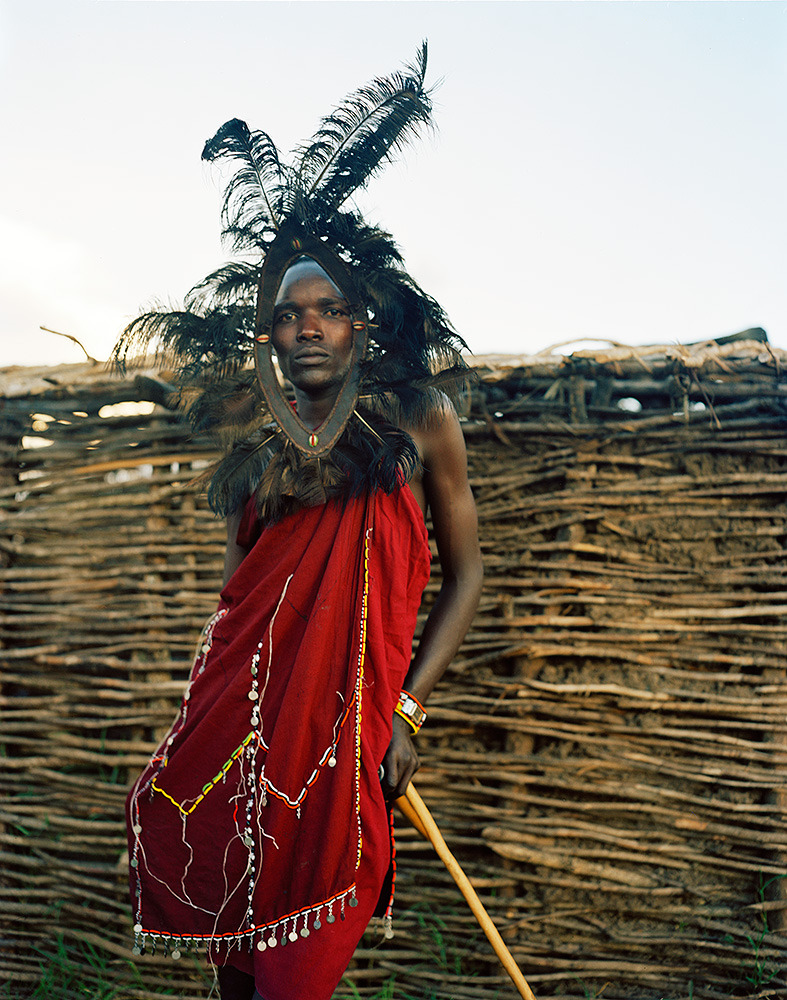

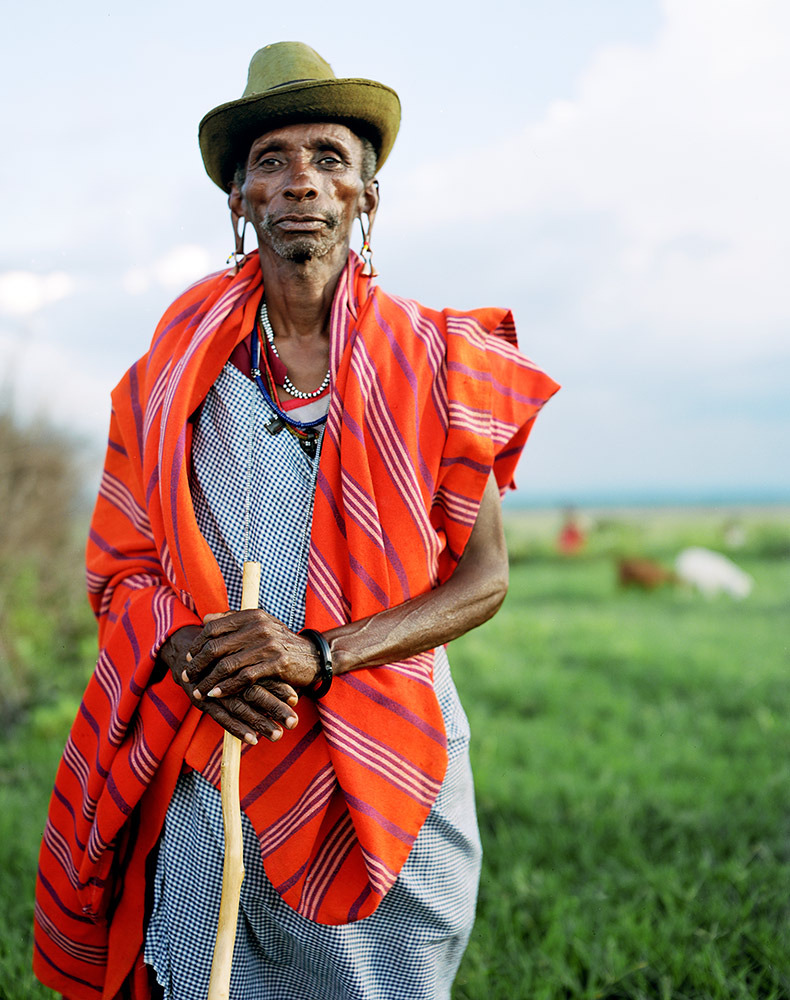

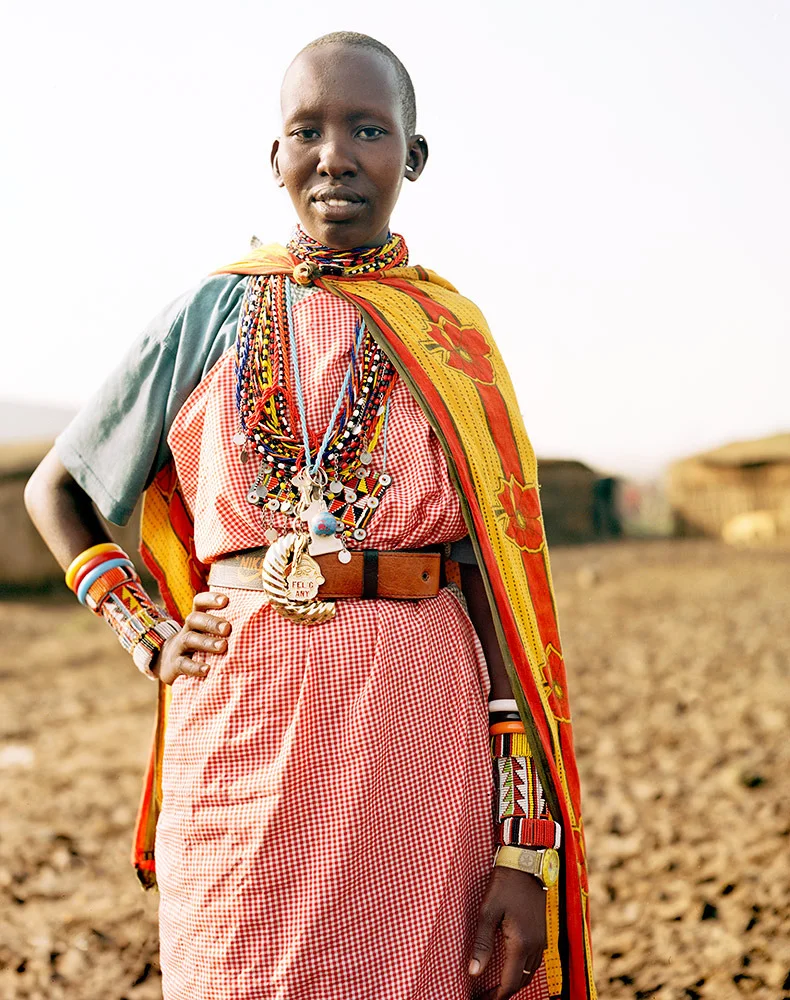


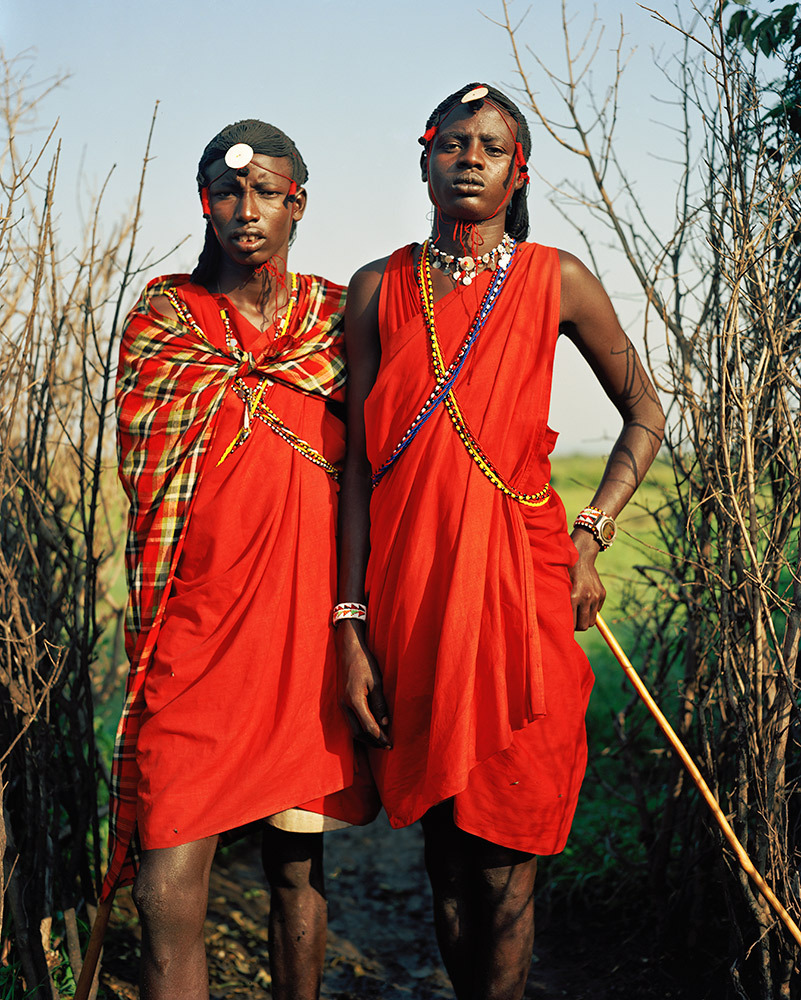


Photo Essay: The Maasai Spirit
This series of images was taken while on assignment in the Maasai Mara Game Reserve in Kenya. As we were leaving the reserve one day our driver suggested we stop at a nearby Maasai village. I thought it would be just a quick stop and a chance to pickup some handmade souvenirs.
Knowing that the Maasai depend on tourists to supplement their subsistence farming, I didn't expect the warmth of our welcome and the genuine dialogue I would have with the chief. He introduced us to the village, showing every aspect of their daily life. Speaking passionately about the realities confronting the Maasai people and the hard choices they must make in order to preserve their cultural identity - from environmental issues threatening their homes and grazing lands, exposure to tourists and the lure of modern life.
He was an erudite speaker, having mastered English and more than 6 African languages. This worldliness empowered him to make mindful decisions governing the collective future of his tribe. All the while recognizing the hypocrisies of a first world existence. In his village no one went hungry, loneliness and depression did not exist and the elders were a revered and integral part of the social dynamic.
He encouraged me to take photos, wanting to share their simple but dignified life, beautiful aesthetic and overt happiness. I hope these images honor the chief's wishes and convey some of the Maasai spirit.
PHOTO + TEXT: JULIEN CAPMEIL
Julien Capmeil is an Australian born photographer living in New York. His work has appeared in many publications worldwide including Vogue, GQ and Conde Nast Traveler.
You can view more of his work online at: www.juliencapmeil.com
For print purchases Email: info@juliencapmeil.com
PHOTO ESSAY CURATED BY NELIDA MORTENSEN
The Four Worlds of Ecuador
In a country smaller than Colorado, there are four distinct geographical regions from the coast to the Amazon, each representing its own culture.
Quito Sunset, szeke, CC BY-SA 2.0.
Per square mile, Ecuador is the most biodiverse country in the world. In the east lies the Amazon Rainforest, known in Ecuador as “el oriente,” or “the orient” in English. The Andes rise like a spine through the middle of the country , and are known in Ecuador as “la sierra.” It is here that Ecuador’s Capital Quito is located, making it the second highest capital in the world. Bordering the ocean is the country’s coast, known as “la costa,” home to Guayaquil, Ecuador’s largest city. Finally, about 600 miles off the coast of Ecuador is the biological treasure of the Galapagos Islands, home of the Galapagos Tortoises, the biggest tortoises in the world.
I have spent the past 3 and a half months studying in Ecuador. During that time I visited three of the four major regions, and lived in both the Amazon and the Andes. Beyond the geographical differences, each region has its own cultures unique to itself. Based on my research and experiences, this article will discuss what makes each region special.
“La Sierra” - The Andes
Quito. Jeremy Giles
Quito, the capital of Ecuador and its most famous city, is located in the Andes at the center of not only Ecuador but also the world, positioned almost exactly on the Equator line, a fact that appeals to tourist so much that there are not one but two “centers of the world” in and around Quito. The “center of the world” is supposed to be the exact 0.0 line of Ecuador, so having two is very much not possible. Although only one of them is real, both are constantly crowded and attract plenty of visitors every year. In my opinion, the fake one, built up to the point it seems like its own little town, is actually nicer than the real site.
Fake Center of the Earth, Maros M r a z (Maros), CC BY-SA 3.0
If you drive away from Quito in almost any direction, you will run into a volcano. There are 17 volcanoes surrounding the city. Two of the most famous of the volcanoes, Pinchicha and Cotopaxi, are both very much active and occasionally release smoke. The volcanic mountains can be seen throughout most of Quito, creating beautiful vistas wherever you care to look.
A picture from on top of the Basilica del Voto Nacional. Jeremy Giles
Within the city itself, the star is “el centro historico,” the historic and colonial center of Quito. Here the buildings are hundreds of years old, all built in a Spanish style in a wondrous variety of pastel colors, all on top of slanting roads curving with the mountains underneath it. This branch of the city is home to the Presidential Palace and many other beautiful government buildings and churches. My favorite of all is the Basilica de Voto Nacional, a huge building with two beautiful towers looming over the city, and unlike any other Church I’ve been to, you are actually able to climb up it, giving you spectacular views of the capital. Beyond this, if you look up at the Basilica from the ground, you can see that instead of Gargoyles lining it like a typical Basilica there are famous animals from all different parts of Ecuador.
Otavalo Market, Jeremy Giles
While Quito is by far the biggest city in La Sierra, it is not the region’s only attraction. About a two hour drive from Quito is the city of Otavalo, one of the two largest Kichwa areas of Ecuador. The Kichwa peoples were part of the Inca Empire and have been in Ecuador for thousands of years. Today, their culture and language is still very much living. Otavalo is famous for its Kichwa market, where beautiful handmade blankets, sweaters, hammocks and more are created from incredibly soft alpaca wool. The prices are amazing; when I was last there I bought a beautiful alpaca wool blanket for only 20 dollars.
Cuenca, Ecuador, Bernard Gagnon, CC BY-SA 3.0
While I never had the opportunity to visit it, maybe the most beautiful city in La Sierra is Ecuador’s third largest city, Cuenca. This andean city is known for its thriving culinary scene, often serving some of Ecuador’s best traditional dishes. It has an incredibly charming appeal and is home to the beautiful El Cajas National park. When I next return to Ecuador Cuenca is for sure one of the top destinations on my list.
“El Oriente” - The Amazon Rainforest
Meeting of the Rivers, Cuenca, Ecuador
To reiterate, Ecuador is known as the most biodiverse country in the world per square mile. The Ecuadorian Amazon is the center of that biodiversity. The Amazon in Ecuador has 300 different species of mammals, 350 of reptiles, 800 of fish, and 1,600 of birds. These species are some of the centerpoints of Amazonian culture in Ecuador. Per indigenous Kichwa beliefs, the Pachamama created the Earth, and the Amazon for its people. When shamans, traditional healers, die, they become a “boa” or “tigre,” general words in the Ecuadorian Amazon for a very large snake or a big cat. The latter is a false friend for English speakers; although “tigre” translates directly to “tiger,” there aren’t actually any tigers in the Amazon.
Mocahuas, David C. S., CC BY-SA 4.0
While visiting the Amazon I lived in the Pastaza province, the largest province in Ecuador, and an area almost entirely covered by the Rainforest. Somehow, Pastaza manages to be just as diverse culturally as it is biologically. In Pastaza alone, there are seven different independent Indigenous groups, each with its own separate language, culture, and customs. There are significant efforts in the region to make sure these languages survive, and in schools students learn both Spanish and their Indigenous language.
A street in Puyo, Ecuador, Jeremy Giles
For the month I was in Pastaza, I stayed in its capital Puyo, an incredibly diverse multi-ethnic city of about 40,000 people. There, I felt as welcomed as I’ve ever felt anywhere. Through the generosity of my host families I got to experience many of the special things about Puyo. Here, I will share with you one of my favorites: the food. The Amazon river provides the families of Puyo with an amazing abundance of fresh fish, particularly tilapia, at prices even cheaper than Ecuadorian norm. Once, my host family bought nine individual portion sized live tilapia for 12 dollars.
Maito, Iestrella, CC BY-SA 4.0
After buying the fish, the typical method of preparation is to make a dish called “Maito.” When cooking Maito the family will cut down a really big leaf. They will then put the fish in the leaf and wrap it up. They put this over the fire and let the fish cook. Then they will open the leaf and serve with fish, often accompanied with grilled plantains and a potato-like root vegetable called yucca that is native to the region. Traditionally, the family does not filet fish or remove the skin and eats everything but the bones. I did this while I was there and while it is often avoided in the west, I found the skin quite rich.
“La Costa” - The Coast
An Aerial View of Guayaquil, JorgeAlejanDroo, CC BY-SA 4.0
It's impossible to talk about the Ecuadorian coast without discussing the biggest city in all of Ecuador, Guayaquil. While Guayaquil lacks the aesthetic beauty of Quito in the Andes, it is impressive in its own right. Quito is an old city that is sprawled over many many miles, with hardly any tall buildings. Because of this, Guayaquil, a city working hard to modernize, is the home to Ecuador’s tallest building. Along with this is “la perla” or “The Pearl,” which, during its opening in 2015, was the largest ferris wheel in South America.
Ferris Wheel in Guayaquil, Sebastian Reategui, CC0, via Wikimedia Commons
Although the star of Guayaquil, and home to said ferris wheel, is “El Malecon 2000.” El Malecon 2000, named after the year it was opened, is a gorgeous 2.5 kilometer riverfront promenade. Located along the path are plenty of attractions, including a museum of anthropology, an Imax theater and a garden, adorned with its own koi ponds.
Malecon 2000, Guayaquil, Padaguan, CC BY-SA 3.0
It should be noted, however I was in Ecuador as part of a study abroad program. During the program, in our last month, we were allowed to select almost anywhere in Ecuador to conduct an independent study. The two places we were not allowed to study were Ecuador’s border with Colombia, and Guayaquil. Ecuador as a whole has a problem with theft and crime. During my time living in and around Quito and Puyo that was always manageable. If you take common sense precautions and are careful, generally speaking, you’ll be okay, just like in a large city in the United States. The same cannot always be said for Guayaquil, especially for foreigners, who may become more of a target because of their manner of speaking and the color of their skin. Guayaquil is a beautiful city that locals frequent often for its climate, culture, and the amazing beaches of Ecuador’s coast. Foreigners can visit too, but they must exercise a considerable amount of caution.
The Galapagos Islands
Galapagos Tortoise, Mike's Birds from Riverside, CA, US, CC BY-SA 2.0
The Galapagos Islands are famous for their finches, which Darwin used to prove the existence of evolution. These birds, ironically, while perhaps the most famous species of the islands, are also one of their least impressive, looking just like small sparrows. The Galapagos’ namesake species however, the Galapagos tortoise, is a different story. These gentle behemoths are the biggest tortoises in the world, and one of the few creatures on Earth with a longer lifespan than humans, frequently living over 120 years old.
Sea Lions laying on a beach, Jeremy Giles
To add to the tortoises, the Galapagos has a slew of amazing native species, many of which can only be found on the islands. There are native penguins and flamingos, frigate birds with huge red pouches under their throats that can blow up like balloons and a bevy of sea lions loitering across the beaches. My personal favorite is the marine iguana, the only marine lizard species in the world and one that, while swimming, looks almost like a snake with legs.
Puerto Ayora Harbor, Santa Cruz Island, Galapagos, David Broad, CC BY 3.0
In addition to the animal species, the Galapagos also has a significant population of people. Four of the 13 major islands are home to around 30,000 permanent residents. While the islands are in the same region, each one has its own individual culture and way of seeing the world. These cultures, due to the interests of foreign countries in protecting the Galapagos, are often very diverse, creating a very interesting dining scene. The biggest town in the Galapagos is Puerto Ayora on Santa Cruz Islands, with a population of more than 10,000.
Jeremy Giles
Jeremy is a Writing Seminars and International Studies major at Johns Hopkins University. He is an avid writer and the Co-Founder of Writers’ Warehouse, Johns Hopkins’ first creative writing group. He is an advocate for Indigenous rights, and studies how Indigenous philosophies can be used to help prevent climate change. Using his writing, he hopes to bring attention to underrepresented voices in today’s world.
6 Cool Spots to Escape the Summer Heat
Escape Northern Hemisphere hot spells at these chilly locales.
Read More6 Must-See Islands off the Coast of Chile
Traverse the natural gems and explore the historical sites of Chile’s outre-mer.
Penguins off the coast of Chiloe Island. Mary Madigan. CC BY 2.0.
One of the westernmost countries of South America, Chile has gained fame for its gorgeous mountains and fjords, its delicious street cuisine, the integral place futbol has in its people’s everyday life, and perhaps even its complex political history. The distinct cultural and travel experience the country offers does not apply only to its mainland, but also to the islands that surround it. In fact, Chile’s islands house some of the most individual and exclusive travel experiences and institutions:
1. Isla Magdalena
Off the coast of Isla Magdalena. Iamblukas. CC BY 2.0.
Isla Magdalena’s lush landscapes are home to everything from the circa 120,000 Magellanic penguins characteristic of southern South America, the National Monument for Penguins that explores and explains the members of this colony, and a magnificent view of the Strait of Magellan discovered by Portuguese explorer Ferdinand Magellan. The Isla Magdalena Lighthouse, another landmark, also rests on the island and contains many exhibitions that detail its history and traditions. Travel to Isla Magdalena by public ferry or private speedboat (for about 2 hours) after a fruitful day on the Chilean mainland; the island is 608 sq mi.
2. Robinson Crusoe Island
A view of Robinson Crusoe Island’s mountains. Ashley Basil. CC BY 2.0.
Robinson Crusoe Island’s name comes from the titular Daniel Defoe protagonist and explorer who travels across the sea to a deserted island. Certainly, all visitors feel like explorers on Robinson Crusoe Island. Guests can snorkel or scuba dive along the island’s coral reefs, observe shipwrecks scattered across its coast, birdwatch, hike in the area’s luscious rainforests, visit ruins left from plundering pirates, and enjoy the local cuisine, especially the lobster. You can even partake in day-long fishing trips to score fresh lobsters! A ~2 hour flight from Santiago or an hour-long water taxi journey drops guests off at this adventure-filled island; the island is 18.5 sq mi in area.
3. Chiloé Island
A view from Ancud on Chiloé Island. Ik T. CC BY 2.0.
Chiloé Island’s landscape defines it: the Chiloé National Park highlights much of this breath-taking landscape with green terrain, rivers, lakes, and stunning forests. For those further intrigued by the island’s natural beauty, horseback riding around the island quenches the explorer’s thirst. But this island is not only a place of natural beauty; history remains an important part of Chiloé Island culture. The churches of Chiloé, mostly built in the 17th century and showcasing Spanish colonial design, are monuments to the island’s rich history. The Ancud Regional Museum (Museo Regional de Ancud) also puts much of the island’s history, its mythology, and its indigenous residents under the spotlight. As with many other Chilean islands, water sports like kayaking and fishing also contribute to the visitor experience. A circa 30-minute ferry ride across the Canal de Chacao drops guests off on Chiloé; the island is 3,241 sq mi.
4. Isla Grande de Tierra del Fuego
Snow capped mountains of Isla Grande de Tierra del Fuego. James St. John. CC BY 2.0.
South America’s largest island, Isla Grande de Tierra del Fuego, is part of the Tierra del Fuego archipelago off the coast of the southernmost tip of South America. A ~2 hour ferry ride across the Strait of Magellan drops visitors off at this island first dubbed “Land of Smoke” by Ferdinand Magellan. Walk the footsteps of explorers like Ferdinand Magellan and Charles Darwin on Isla Grande de Tierra del Fuego as you immerse yourself in the island’s spectacular flora, which includes many species of trees like the beech and conifer, and fauna the fauna of Parque Pinguino Rey (King Penguin Park) and the foxes, flamingos, and condors found all around the island’s mountains; the island is 18, 530 sq mi
5. Navarino
A view of the Dientes de Navarino Mountains. Dimitry B. CC BY 2.0.
Navarino, another island that is far south of the Magellan Strait, is a worthwhile travel destination for outdoorsy adventurers. Hikers will enjoy walking among the island’s snow capped mountains and fishers can discover a multitude of rivers and even high-altitude lakes. One of the most beautiful routes for active visitors is the Dientes de Navarino (Teeth of Navarino) Trek. This somewhat frightening name refers to Navarino’s mountains through which many travelers enjoy hiking. The culturally inclined can visit Puerto Williams, the island’s only town and the past residence of indigenous Yaghan people. Puerto Williams’ museums offer insights on the isle’s Yaghan past and its weighty and resonant history. Access to Navarino is available by a 30-minute boat ride from the port of Ushuaia; the island is 35.7 sq mi.
6. Riesco Island
A view of the Fitzroy Canal from Isla Riesco. Z_thomas. CC BY-SA 3.0.
Riesco Island’s must-see features range from Patagonian ranches to historical coal reserves. The bleating sounds ring across the island, while its cattle fields are still dominated by gauchos, or South American cowboys, and remain a sight to behold for those visitors who crave a distinctive cultural experience. The island, one of the largest islands in Chile and accessible from Patagonia through a 30-minute boat ride across the Fitzroy Canal, is also known for its coal reserves; in fact, coal mines such as the Invierno (winter) Mine, Magdalena, Elena, and Josefina are historical locations of note. Riesco sightseers should also watch out for glaciers lining Riesco’s coasts; the island is 1,970 sq mi.
Su Ertekin-Taner
Su Ertekin-Taner is a first year student at Columbia University majoring in creative writing. Her love for the power of words and her connection to her Turkish roots spills into her satire, flash fiction, and journalistic pieces among other genres. Su hopes to continue writing fearless journalism, untold stories, and prose inspired by her surroundings.
7 Less Traveled Wonders of the Natural World
As urban spaces dominate more and more of the world, it is important to remember the natural beauty the Earth has to offer. Here is a list of 7 less popular but equally enchanting wonders.
Read More10 Places to See Before They Disappear
The casualties of industrialization and climate change.
Read More7 Real-Life Atlantises Hidden Around the World
Exploring the hidden history of sunken sites.
Diver exploring a sunken city. Linnaea Mallette. CC0 1.0
Although travel traditionally highlights cultural landmarks, distinctive experiences, and historical sites on land, much history lies where our eyes alone cannot take us – particularly under the sea. Underwater cities and towns which have been immersed in the soaking abyss of seas, lakes, and reservoirs through natural disaster or human shenanigans provide a time capsule into the defining characteristics of their era. The corpse of the city including its many artifacts can be explored through diving and even glass bottom boats. Here are seven of the most intriguing sunken cities to visit around the world.
1. Baiae, Italy
Emperor Claudius; nymphaeum submerged in Baiae, Italy. Ruthven. CC0 1.0
The ancient Roman town of Baiae overflowed with luxuries in its time: Roman elites built villas and spas fed its famous hot springs, and palace parties proliferated. That is, until an army of the Muslim Caliphate army sacked the resort city in the 8th century. By 1500, the luxuries had faded away and the town was left abandoned. The volcanic vents that had once been the joy of Roman bathers led to a steadily increasing water level and eventually, the majestic city was submerged. Now, the once-present luxuries of the city–its marble statues, mosaics, sculptures–can be viewed through glass bottomed boats and on snorkeling or scuba diving tours.
2. San Roma de Sau, Spain
The half-submerged church of San Roma de Sau. Josep Bracons. CC BY-SA 2.0
All that remains to be seen of San Roma de Sau, a thousand year old village in Catalonia, is the spire of its Medieval Romanesque church. The church, now reemerging due to drought and low water levels in Spain, reminds visitors of the artificial flood in the 1960s that sank the lightly populated town. The Catalonian government’s decision to create a reservoir forced the townspeople to leave their land, taking their valuables and their dead with them. The reservoir’s beginning led inevitably to the end of San Roma de Sau.
3. Dwarka, India
The Dwarka lighthouse on the coast of Gujarat India overlooks the submerged city of Dwarka. VasuVR. CC BY-SA 4.0
Known as “India’s Atlantis,” Dwarka is not only an intriguing travel spot, but also a religious relic. This ancient sunken city located in modern-day Gujarat appears in the Mahabharata as Krishna’s city; the city supposedly sunk in the Arabian sea after Krishna’s death according to the text. 20th century marine archaeological explorations proved its existence outside of literary myth and have uncovered stone anchors, pillars, bastions, pottery, inscriptions, stone sculptures, as well as bronze, copper, and iron objects in Dwarka. Visitors can dive off the coast of Beyt Dwarka, a neighboring island, to view the submerged city.
4. Shi Cheng, China
A sunken artifact in Shi Cheng. Nihaopaul. CC BY-SA 3.0
Shi Cheng, much like many other of the sunken cities on this list, was flooded deliberately. The ancient city was the casualty of a 1959 hydroelectric dam and consequent artificial lake, , which now envelops and obscures this “Atlantis of the East.” Located 40m under Qiandao Lake, Shi Cheng offers a snapshot of Imperial China. The city brims with stone architecture of the Ming and Qing dynasties; stonework of lions ( fitting, as the city’s name means “lion city” in Mandarin), dragons, phoenixes, and historical inscriptions lay within the five entrance gates of the sunken city.
5. Port Royal, Jamaica
An image of Port Royal before the city was sunk. Wellcome Library, London. CC BY 4.0
The 1692 7.5 magnitude earthquake that submerged Port Royal did nothing to erase its rich history. The town, captured by the British from Spain in 1655, became the center of English life in Jamaica. The Englishmen brought the slave trade to the region, as well as an abundance of merchant and artisan activity. The town also possessed a strong scene for sex workers and pirates. Now, the submerged town still maintains its buildings and artifacts like skillets, pots, barrels, ceramics, and a pocket watch found by Edward Link in 1950–all underwater. Travelers can explore the 40 feet deep city through diving.
6. Thonis-Heracleion, Egypt
Thonis Heracleion. Courtesy of Virginia Museum of Fine Arts
Founded around the 8th century BC, Thonis-Heracleion was a distinguished city, one of great importance especially for merchants who frequently passed through the port to enter Egypt. The liquefaction of the city’s clay soil and ultimately the city itself resulted from various natural disasters including an earthquake, tsunami, rising sea levels, and subsidence. As a consequence of these catastrophes, the city eventually collapsed into the surrounding water. Much of the city’s culture and lifestyle remain preserved in watery depths, however. Temples, colossal statues - the most famous being the 5.4 meter tall God of Hapy - inscriptions, jewelry, coins, ritual objects, ceramics, goblets, and the sarcophagi of animals all endure, frozen in time.
7. Potosi, Venezuela
Underwater church of Potosi. Juan Tello. CC BY 2.0
Much like San Roma de Sau, only a part of a gothic church spire juts out from the underwater city of Potosi. The waters of the Uribante Reservoir flooded the town in 1985; the Venezuelan government hoped that a hydroelectric dam could replace the 1200 residents of the town. Houses and churches were abandoned in 1985 for the scheduled flooding. Yet, the gothic church of Potosi has re-emerged due to severe droughts in Venezuela, most probably a result of the natural disaster, El Niño. 30 years after the flooding of the city, its church’s structure has been uncovered.
Su Ertekin-Taner
Su Ertekin-Taner is a first year student at Columbia University majoring in creative writing. Her love for the power of words and her connection to her Turkish roots spills into her satire, flash fiction, and journalistic pieces among other genres. Su hopes to continue writing fearless journalism, untold stories, and prose inspired by her surroundings.
The 10 Most Pet-Friendly Cities Around the World
From the solemn streets of Berlin to the lively waterways of the Netherlands, here are 10 places to visit with your beloved furry friend by your side.
Traveling with a Dog. Garryknight. CC BY 2.0.
Traveling with a pet can be challenging, but that doesn't mean you have to leave your furry companion behind. From the sunny beaches of Menorca, Spain, to the charming streets of Bruges, Belgium, and the historic sights of Budapest, Hungary, there are plenty of pet-friendly travel destinations waiting for you and your four-legged pal. Whether you are looking for a romantic getaway or a family trip, these locales offer plenty of activities and attractions good for travelers with pets. So pack your bags, grab your leash, and get ready to explore these fantastic pet-friendly cities around the world together!
1. Menorca, Spain
Woman with dog in Menorca. martinvarsavsky. CC BY 2.0.
Picture yourself lying in the warm Mediterranean sun, the calm waves of the sea lulling you to sleep. Now picture your best friend by your side, tail wagging in delight. This peaceful sight can be seen on the picturesque Balearic Island of Menorca, one of Spain's most pet-friendly locations. Menorca provides something for every pet owner looking for a little adventure. Visitors to Menorca and their four-legged companions are met with open arms, sandy shores, and a treasure trove of history to explore.
There are several pet-friendly accommodation choices available in Menorca, including charming countryside getaways and elegant beachfront hotels. At Es Barranc Vell, for instance, dogs of all sizes can stay for free while cats can be accommodated upon request. Meanwhile, Sol Menorca is a fabulous option for pets of all sizes, with a fee of only EUR 30($32.72) per night.
If you are searching for the perfect beach getaway, Binigaus Beach is the perfect place to start, with its soft sand and crystal-clear waters allowing dogs between 7 pm to 9 am. Other dog-friendly beaches to visit are Cala Fustam and Cala Escorxada. And if you are feeling adventurous, take a hike on the Cami de Cavalls, a trail that winds around the entire coastline of the island. Although dogs are not permitted in some areas for environmental reasons, there are still lots of gorgeous spots to enjoy together. Remember to keep your pet on a leash and follow the trail regulations.
2. Bruges, Belgium
Most Photographed Dog in Burges. Dennis Jarvis. CC BY-SA 2.0.
Bruges is a city that has a heart for animals. This picturesque Belgian metropolis had over 1.3 million registered pet dogs in 2020 alone, making it a veritable dog lover’s heaven. You will witness people petting their dogs whether you are strolling through historic districts or seated in an animal-friendly cafe. Bruges’ pet-friendly culture has deep roots, with historical structures such as the famed 15th-century Poortersloge serving as a reminder of the city’s enduring devotion to animal companions.
There are plenty of ways to discover Bruges with your furry friend, and one of the most exciting options is to hop aboard a canal boat tour— it is a fantastic opportunity to take in the city’s breathtaking sights. Before embarking, double-check with fellow passengers and tour operators about their pet rules. Meanwhile, Minnewater Park offers a peaceful and tranquil location for a leisurely walk, jog, or picnic with your canine friend.
Of course, a trip to Bruges would be nothing without sampling the delectable Belgian cuisine. Numerous city eateries welcome pets, including Cambrinu, a beautiful bar with over 400 varieties of Belgian beer, and pets are invited to join their owners for a drink.
Bruges has got you and your furry friend's back when it comes to finding pet-friendly accommodations. Among the best are The Doghouse, a luxurious bed, and breakfast located in the heart of Bruges that caters specifically to dogs and their human companions.
3. Budapest, Hungary
A cat on the street of Hungary. Osbornb. CC BY 2.0.
Budapest, Hungary, is renowned for its beautiful Danube River vistas and rich culture, but it also has Europe’s greatest dog-to-human ratio, with 22.8 dogs for every 100 humans. The city has many pet-friendly cafes where residents can have coffee with their canine companions, as well as various dog parks where pups can play and exercise.
One of the best places to take your pet in Budapest is the Margaret Island Dog Run. This wide, grassy field provides limitless playing for your furry buddy. It is also a great way to meet new people and share travel stories with other dog lovers.
Many pet-friendly lodgings are available in Budapest, such as the Aria Hotel Budapest, which welcomes one pet up to 8 kilograms for a EUR 61($66.47) refundable deposit each night. Both dogs and cats are welcome. And don’t miss La Mimosa Budapest (Black Dog), where dogs are treated as VIPs and may be given a refreshing glass of water. If you want to indulge in Magyar flavors while enjoying the company of your furry friend, head to Meenza’s open patio and savor some delicious Hungarian egg noodles.
4. Berlin, Germany
Dog on the Beach, Fehmarn, Germany. Torsten Behrens. CC BY 2.0.
Don’t be fooled by Berlin's solemn reputation; the city also has a playful and furry side! In fact, it has twice been crowned Germany’s most dog-friendly city in 2011 and 2012. And, with 70% of the city's hotels pet-friendly, you and your four-legged companion can wander to the fullest.
In Berlin, dogs are permitted on buses, trains, and trams, but are not allowed on the seats. When it is time for a river cruise, go to Stern und Kreisschiffahrt, where dogs are welcome on their steamboat rides along the Spree. At Reederei Riedel, your pet can even serve as an honorary captain!
Berlin's dining scene welcomes four-legged friends to the table. Plenty of eateries provide water bowls for pets, and you might even see some big dogs lounging out with their owners at Oslo Kaffebar.
Berlin’s pet-friendly mentality is also reflected in the city’s numerous dog parks and green spaces. With over 100 public parks and over 70,000 hectares of forest, the city provides plenty of space for pets to stretch their legs. Mauerpark and Berlin Wall Trail are popular locations for both pet owners and their four-legged companions.
5. Krakow, Poland
A dog sleeping in the owner's shop in Kazimierz, Krakow, Poland.Ted and Jen. CC BY 2.0.
Krakow is a young and vibrant city with charming cobbled streets in an old town surrounded by a large urban green belt but is also a city that welcomes pets with open arms. Many of its historical sites including, the city’s Galicia Jewish Museum and Polish Aviation Museum, as well as the Kino pod Baranami movie theater allow canine visitors.
When it comes to accommodations, Sheraton Grand Krakow goes the extra mile to make your pet feel at ease. They provide specific dog beds as well as food and drink bowls that are strategically arranged throughout the room. And they're not the only ones: there are 928 pet-friendly hotels in Krakow! This city was placed seventh in Europe, with 62% of hotels accepting pets.
In Krakow, your pet is welcome to accompany you on your exploration of historical monuments and open areas, as well as to join you for a meal or drink at one of the numerous pet-friendly restaurants and cafés. Take a stroll around Old Town Market Square and the cobblestone streets, where the influence of World War II can still be felt. Off-leash enjoyment may also be had at Montello Dog Park, where your pet can run around while you enjoy the views of Montello Lake from the fenced-in area.
6. County Armagh, Ireland
A dog under the sunset in Castle Archdale in County Fermanagh. Caroline Johnston. CC BY 2.0.
County Armagh, in Northern Ireland’s center, is a pet-friendly oasis with a breathtaking landscape, captivating history, and a warm welcome for pets and their owners. Its pet-friendly house swaps and lodgings make it the ideal break for exploring the woods and natural scenery with your four-legged buddy.
There are plentiful pet-friendly options in County Armagh when planning a private stay, including the elegant Blackwell House near Scarva. Their “Pups and Pyjamas” package includes a pleasant overnight stay with special snacks and a luxury pet bed for your animal friend. Crannagael House, a registered 18th Century Georgian house, is another excellent option. Well-behaved dogs that can get along with resident pups Toby the Yorkie and Jack the Westie are more than welcome to stay.
If you are looking to explore County Armagh’s scenic trails and parks, Gosford Forest Park is the ideal destination. With miles of pathways winding through historic woodlands and gardens, you and your four-legged partner can enjoy a calm afternoon stroll or an exhilarating morning hike. For some light refreshments, Toby Jug Bar is your go-to destination - a pet-friendly pub that offers the perfect blend of drinks and snacks, perfect for soaking up the warm, friendly atmosphere.
7. Milan, Italy
Dog park, Parco della Resistenza, Milan. Guilhem Vellut. CC BY 2.0.
Milan, Italy’s fashion city, is more than just high-end couture and designer labels. It is also a pet owner’s delight. This city has a long history and culture of welcoming pets, with plenty of dog parks, 580 pet-friendly hotels, and many pet-friendly restaurants to pick from. Many hotels in the city provide amenities and services tailored to your pet, such as designated pet spaces, food and water bowls, and snacks. The Michelangelo, Baglioni, and Principe di Savoia hotels will make you and your pet feel right at home, with large rooms and pet-friendly rules.
Milan is also a fantastic pet-friendly tourist location. Take in the splendor of the Duomo di Milan, an exquisite cathedral in the heart of the city. Or take a walk in Milan’s oldest public park, Giardini Pubblici Indro Montanelli, where dogs are welcome. Parco Sempione, a large city park with a specific dog area, provides plenty of space to play and interact as well.
When it comes to getting around Milan with your furry companion, there is no need to worry. Pets are allowed on all public transport services, and it is easy to bring them along — just make sure you have your pet passport with you.
8. Tel Aviv, Israel
A dog and a man resting under a tree in Tel Aviv, 2016. TLV. CC BY 2.0.
Dogs rule the roost in Tel Aviv, where the dog-to-human ratio is an astonishing 1:17. The city is known as “The Mediterranean Capital of Cool,” and has four dog-friendly beaches as well as 70 dog parks. Its most famous beach is located between the northern Hilton beach and the religious beach, where you will discover a slew of joyful, wet pups splashing in the waves. Should you want to spend time in the sun with your dog, head to Alma Beach in the south. Dogs are welcome to play while you soak up some sun.
Tel Aviv has an abundance of dog-friendly parks, such as Park Hayarkon and Gan Meir. You can let your pet run around freely without disturbing other parkgoers. Pet-related businesses abound in Tel Aviv, including pet stores, groomers, and veterinary clinics. Three to four pet establishments can be found on one street in the dog-friendly Florentin area!
The love of pets has no bounds for Tel Avivians. All year long, its residents conduct pet-friendly events, including the much-anticipated annual Dog Day, where dogs and their people can enjoy a day of lively games and spirited competitions.
Residents’ affection for dogs in Tel Aviv originates from their pups’ position as surrogate offspring for urban millennials who are delaying marriage. Israelis, influenced by kibbutz culture, see their pets as companions who help alleviate the loneliness that frequently comes with city living.
9. Quito, Ecuador
Quitenos and dog. Yamil Salinas Martínez. CC BY-SA 2.0.
Quito, a city known for its rich history, gorgeous architecture, and breathtaking natural surroundings, has recently become even more dog-friendly. The municipal government has opened up areas to the public, giving rise to sprawling parks in the heart of the city. These parks welcome dogs of all sizes! Quito's parks are usually teeming with joyful pups and their owners, from the iconic Parque La Carolina to the Parque Metropolitano.
With 178 pet-friendly hotels to select from, Quito has the perfect lodging for you and your four-legged buddy. In terms of activities, Quito has an abundance of pet-friendly options. Take the TeleferiQo to the summit of Pichincha, where you can hike with your pet and enjoy stunning views of the city. After your trip, head to Café Mosaico and order anything from their dog menu.
10. Amsterdam, Netherlands
Biking with the dog in Amsterdam.FaceMePLS. CC BY 2.0.
Amsterdam is a city that will steal your heart — and your pet’s — with its renowned meandering canals, vibrant tulips, and wooden paddles. Amsterdam has much to offer pet owners who want to bring their companions along for the ride.
With 76 hotels in the city admitting pets, Amsterdam's pet-friendly reputation is well-deserved. For example, at Kimpton De Witt Amsterdam, guests of any size are welcome to bring their dogs and cats of any size, and the hotel provides facilities such as pet beds, bowls, and treats to guarantee a comfortable stay.
Amsterdam has many opportunities for exploring the city with your pet. Take a stroll around Dam Square, which is home to the majestic Royal Palace, or rest in the lush greenery of Sarphatipark, where your pet can cool down in the pond. And when you are ready to take a break, bring your tiny dog along for a free ride on public transportation. (excluding trains, where a separate pet ticket is required).
After exploring Sarphatipark, make your way to De Pijp, a busy student quarter with bustling terraces and a varied choice of restaurants and cafes. Keep a watch out for dog bowls outside restaurants, which indicate that dogs are welcome.
It is crucial to evaluate a city's development in animal welfare and services when determining where to travel with your pets. Fortunately, there are numerous pet-friendly travel destinations around the world, such as Menorca's quiet beaches, Bruges' quaint alleys, and Budapest's historical delights. There are plenty of activities and attractions for pet owners to enjoy, whether they are traveling with family or a significant other. More pet-friendly establishments are likely to appear in the future, providing new and exciting experiences to individuals who appreciate the company of their furry buddy.
Hope Zhu
Hope is a Chinese international student at Wake Forest University in North Carolina studying sociology, statistics, and journalism. She dreams of traveling around the globe as a freelance reporter while touching on a wide range of social issues from education inequality to cultural diversity. Passionate about environmental issues and learning about other cultures, she is eager to explore the globe. In her free time, she enjoys cooking Asian cuisine, reading, and theater.
Travel to NYC, Not for Times Square, but for the Parks
Check out the many green areas in NYC where culture and nature abound.
Read MoreYakutia: One of the Coldest Places on Earth
This Russian region experiences temperatures as low as -70F and its residents live drastically differently than people who live in warmer climes.
A village in Yakutia during the winter. @simoncroberts. Instagram.
It is seven AM. The sun hasn’t risen yet, but you’ve already gathered enough wood to heat your house for 9 months straight, in anticipation of the severe climate outside. You head to the back shed to grab the ice you harvested last November and put it in a giant tub of water to melt, ensuring that your family has something to drink when the water pipes will freeze. Now it’s time to make breakfast and wake your child up for school — because even though winter has finally arrived it’s warmer than -65 degrees Fahrenheit, which means it is safe to go outside.
This is how residents of the northern reaches of the Sakha Republic, common name Yakutia, live during the long winter months. Yakutia is located in Russia and is home to some of the coldest continuously inhabited places in the world. In villages like Oymyakon, located in the far north, the sun doesn’t rise until approximately 9am and sets at 2:15pm, meaning students have to walk to and from school in darkness.
Ten minutes in the cold, fresh air is enough to cause fatigue, stinging pain in any of the exposed parts of your face, and long-lasting aches in the fingers and toes. This is why many houses in the region are made of wood and built to withstand the extreme temperatures by filling every gap with oakum, a sealant made from plant fibers and tar, or even just the abundant snow, although the cold still finds its way through at times.
The Yakut people have learned to be productive in these conditions. Most men in the Republic’s far north have traditional jobs like cattle ranching, hunting, or making crafts, living lives that hardly resemble those of urban Russians. Knife-making plays an important role in the Yakut culture, with the blades known around the world for their strength and beauty.
Summer in a Yakutian village. @Kiun B. YouTube.
When summer comes around, Yakutia becomes a completely different place. While winter temperatures can plunge down to -70 degrees Fahrenheit, in the dog days of summer the weather can get to around 86 to 95 degrees, particularly at the end of July. Summers may be short-lived — only lasting 2.5 months — but it is also the busiest time of the year for Yakut people.
It is crucial to harvest berries before the frost sets in if one wants to eat fruit during the winter., A failure to harvest the hay needed to feed the cattle in time can lead families to lose their valuable livestock.
But with hard work comes a refreshing reward. During the summer, Yakutia turns from a snowy kingdom into a lush meadow full of dense forests. ManyYakuts take advantage of the balmy heat, and head straight to the nearest lake for a swim.
Yakutia is often called the land of rivers and lakes. There are over 700,000 rivers and 800,000 lakes that are rich with aquatic life, which is the perfect opportunity for Yakut people to stock up on food for the winter months.
Although Yakutia is by no means a popular tourist destination, the region is gaining more attention on YouTube and has fascinated viewers around the world. With increased visibility facilitated by modern communications technology , it will be no surprise if curious minds begin to pay attention to Yakutia.
Michelle Tian
Michelle is a senior at Boston University, majoring in journalism and minoring in philosophy. Her parents are first-generation immigrants from China, so her love for different cultures and traveling came naturally at a young age. After graduation, she hopes to continue sharing important messages through her work.

